
SEPTEMBER 2023
Saving the Planet, One Issue at a Time
Princeton’s Climate Crusaders

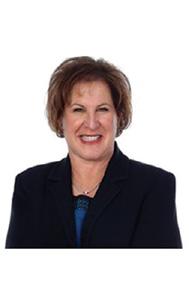
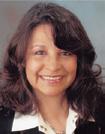

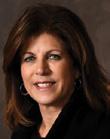




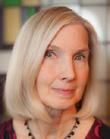


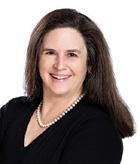
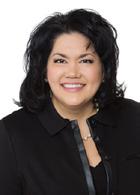
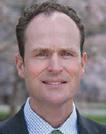

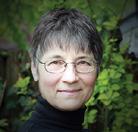


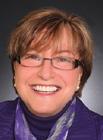









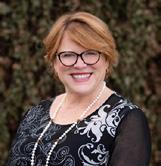
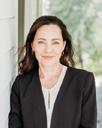

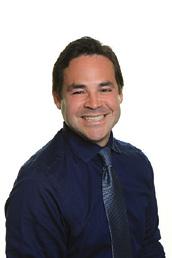

2022: Nearly $1 Billion in sales and over 1,500 real estate transactions Visit: TopProducersMercerCountyNJ.com Ellen Calman Sales Associate Coldwell Banker Reatly Magdalena Amira Sales Associate Coldwell Banker Realty Susan Hughes Broker Associate Callaway Henderson Sotheby’s International Realty Lisa Folmer Broker Associate Weidel Realtors® Princeton Karma Estaphanous Broker Associate RE/MAX of Princeton Amanda Botwood Real Estate Salesperson Compass RE Lisa Candella-Hulbert Broker Associate Berkshire Hathaway Fox & Roach Realtors® Michelle Blane Sales Associate Callaway Henderson Sotheby’s International Realty Barbara Blackwell Broker Associate Callaway Henderson Sotheby’s International Realty Rashmi Bhanot Sales Associate Coldwell Banker Reatly Harveen Bhatla Sales Associate Keller Williams Premier Beatrice Bloom Sales Associate Weichert Realtors® Teresa Cunningham Sales Associate Berkshire Hathaway Fox & Roach Realtors® Jud Henderson Broker Associate Callaway Henderson Sotheby’s International Realty Connie Huang Real Estate Agent Coldwell Banker Realty Judith Budwig Sales Associate Berkshire Hathaway Fox & Roach Realtors® Victoria Holly Real Estate Agent Queenston Realty Patricia ‘Trish’ Ford Sales Associate Callaway Henderson Sotheby’s International Realty Joan Eisenberg Sales Associate RE/MAX Preferred Professionals Susan “Sue” Dehaven Sales Associate Weidel Realtors® Jennifer E.
Broker
Callaway Henderson Sotheby’s International Realty
Sales Associate Callaway Henderson Sotheby’s International Realty
Kumar Broker Associate ERA Central Realty Group Inc. Lori Janick Sales Associate Weichert Realtors® Princeton Junction
“Beth” Kerr Realtor® Associate Weidel Realtors® Pennington
Kostenbader Sales Associate Queenston Realty
Sales Associate Callaway Henderson Sotheby’s International Realty
Storcella President Sales Associate Berkshire Hathaway Fox & Roach, REALTORS® Lisa Theodore Treasurer Real Estate Agent Compass RE
Lax-Zakut Vice President Sales Associate Compass RE
Brandt Sales Associate EXP Realty, LLC
Lopez Current Board Member Broker Associate Keller Williams Princeton Realty
Realtor Berkshire Hathaway
&
Curtis
Associate
Jennifer Dionne
Anjani
Elisabeth
Ingela
Beth Kearns
Kimberly
Yael
Mary
Robert “Nick”
Lavanya Boopalam
Fox
Roach, REALTORS®





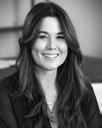

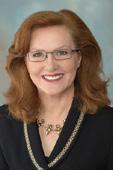
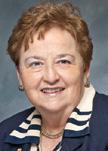

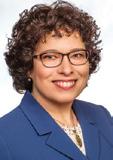
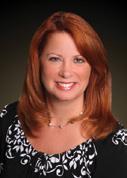



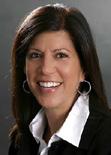


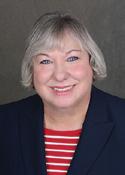



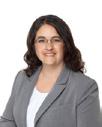
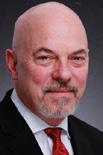
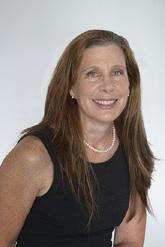
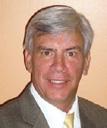
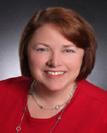







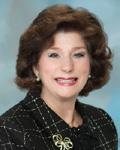
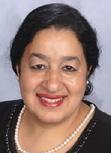




Put us to work for you! Proud Sponsors of the Mercer County Top Producers Association Carlo Vitale vitaleinspection.com Helen Vogel 609.482.2203 heather.vogel@cbizbp.com Jim Craft 856-630-7364 Aaron Heimowitz 609-577-3334 NMLSR ID# 404370 Clare Mackness Sales Associate Callaway Henderson Sotheby’s International Realty Debbie Lang Sales Associate Berkshire Hathaway Fox & Roach Realtors® Susan McKeon Paterson Broker Associate Callaway Henderson Sotheby’s International Realty Mary Reiling Broker Sales Associate Coldwell Banker Realty Randy Snyder Real Estate Agent Compass RE Marina Shikman Sales Associate Coldwell Banker Realty Donna Murray Sales Associate Berkshire Hathaway Fox & Roach Realtors® Dawn Monsport Broker Associate Keller Williams Princeton Realty Heather Morley Sales Associate Berkshire Hathaway Fox & Roach Realtors® Maura Mills Sales Associate Callaway Henderson Sotheby’s International Realty Susan Thompson Sales Associate Weidel Realtors® Lee Tai Sales Associate Coldwell Banker Realty Gough “Winn” Thompson Sales Associate Berkshire Hathaway Fox & Roach Realtors® Janet “Jan” Taylor Sales Associate Coldwell Banker Realty Robin Wallack Broker Associate Berkshire Hathaway Fox & Roach Realtors® Mary Warshefski Sales Associate Weidel Realtors® Ira Lackey Jr. Sales Associate Callaway Henderson Sotheby’s International Realty Nancy Maloney Sales Associate Coldwell Banker Realty William Usab, Jr Broker Associate Keller Williams Premier Linda Twining Sales Associate Callaway Henderson Sotheby’s International Realty Thomas Morris Sales Associate Coldwell Banker Realty Blanche Paul Broker Associate Berkshire Hathaway Fox & Roach Realtors® Galina Peterson Sales Associate Callaway Henderson Sotheby’s International Realty Dawn Petrozzini Broker Associate RE/MAX Preferred Professionals Smita Shah Broker Associate RE/MAX Preferred Professionals Helen Sherman Broker Associate Berkshire Hathaway Fox & Roach Realtors® Lynda Schreiber Sales Associate Weidel Realtors® Denise ‘Dee’ Shaughnessy Sales Associate Callaway Henderson Sotheby’s International Realty Lisa LeRay Broker Sales Associate Berkshire Hathaway Fox & Roach Realtors® Donna Lucarelli Sales Associate Keller Williams® Princeton Realty Rachna Luthra Broker of Record Realty Mark Central Alana Lutkoswki Realtor® Callaway Henderson Sotheby’s International Realty
Kalpesh Manek Realtor® Realty Mark Central
Geeta


(732) 389-8175










SEPTEMBER 2023
PRINCETON’S CLIMATE CRUSADERS
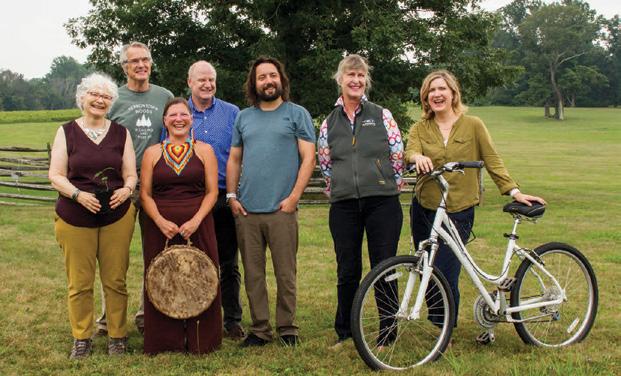 BY ANNE LEVIN
BY ANNE LEVIN
Saving the Planet, One Issue at a Time 12
WHIG - CLIO
BY DONALD GILPIN
254 Years of Freedom of Speech, Civil Discourse, and Camaraderie at Princeton University 26

SO MUCH TO SEE, SO MUCH TO LEARN BY WENDY GREENBERG
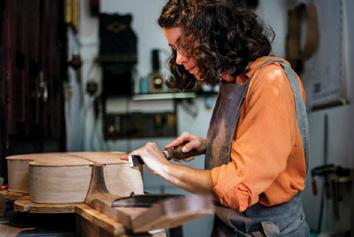
BOOK SCENE BY STUART MITCHNER
Cats as Art and Artist, Character and Creator 46

ON THE COVER:
PATTERNS OF ABSTRACTION
BY ILENE DUBE
52
FINDING THE WAY OF NATURE IN TAI CHI BY TAYLOR SMITH 60
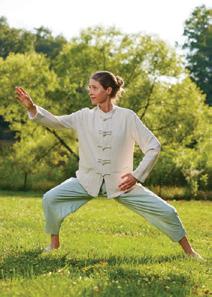
THE LEGENDARY BAGEL BY MARY ABITANTO

Culturally Rich and Simply Satisfying 68
FALL FESTIVALS BY DONALD H. SANBORN III 76

A WELL-DESIGNED LIFE BY LYNN ADAMS

82, 84

6 | PRINCETON MAGAZINE SEPTEMBER 2023 | CONTENTS
Gap Years Take Off, and Not Just for Pre-College 36
Environmentalists gather at Princeton Battlefield State Park. Photo by Charles R. Plohn.
Artist Alia Bensliman draws on the Mosaic of her Tunisian Heritage, Human Rights, and International Experiences
SMITH
12 68 26 52 60 76 84 46 36
(CREDITS) CLOCKWISE FROM TOP LEFT: CAT, SHUTTERSTOCK.COM; ENVIRONMENTALISTS PHOTO BY JEFFREY E. TRYON; LUTHIER PHOTO, SHUTTERSTOCK.COM; PUMPKIN PICKING, SHUTTERSTOCK.COM; BAGELS, PHOTO BY MARY ABITANTO; ELSA FOULON DESIGNED ANTIGONE PENDANT LAMP, 1STDIBS.COM; MACKENZIE HAWKINS, PHOTO BY WHIT HAWKINS PHOTOGRAPHY; WHIG HALL, WHIGCLIO.PRINCETON.EDU; ARTWORK BY ALIA BENSLIMAN, ART PHOTO BY ANDREW WILKINSON.
Clean Slate: The Unforgotten 2, by Alia Bensliman.





MPdL STUDIO design & architecture www.mpdlstudio.com 609.252.0340
PUBLISHER
J. Robert Hillier, Lh.D., FAIA
EDITOR-IN-CHIEF
Lynn Adams Smith
OPERATIONS DIRECTOR
Melissa Bilyeu
ART DIRECTOR
Jeffrey Edward Tryon
GRAPHIC DESIGNERS
Matthew DiFalco
Vaughan Burton
PHOTOGRAPHERS
Charles R. Plohn
Jeffrey E. Tryon
EDITOR
Laurie Pellichero
CONTRIBUTING EDITORS

Anne Levin
Mary Abitanto
Ilene Dube
Donald Gilpin
Wendy Greenberg


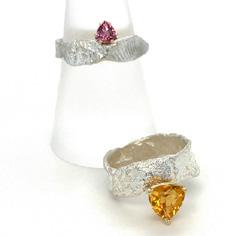

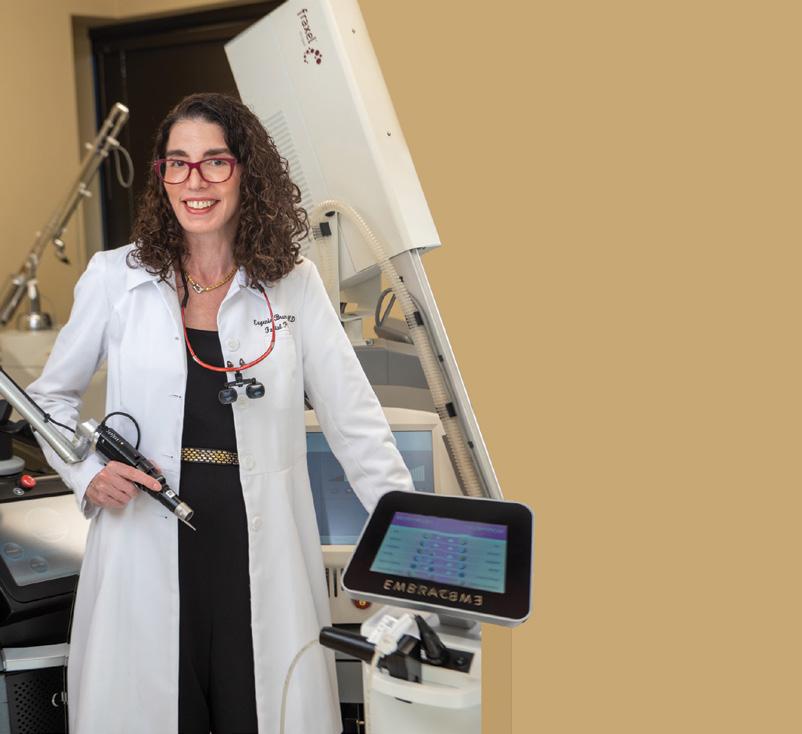
Stuart Mitchner
Donald H. Sanborn III
Taylor Smith
William Uhl
ADVERTISING DIRECTOR


Charles R. Plohn
ACCOUNT MANAGERS
Jennifer Covill
Joann Cella
ADVERTISING OPPORTUNITIES
609.924.5400 Media


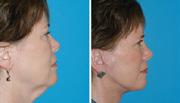
8 | PRINCETON MAGAZINE SEPTEMBER 2023
SEPTEMBER 2023
Kit
on www.princetonmagazine.com
ext. 30 subscriptions@witherspoonmediagroup.com
MAGAZINE Witherspoon Media Group 4438 Route 27 North Kingston, NJ 08528-0125 P: 609.924.5400 | F: 609.924.8818 princetonmagazine.com Princeton Magazine is published 6 times a year with a circulation of 35,000. All rights reserved. Nothing herein may be reproduced in whole or in part without written permission of the publisher. To purchase PDF files or reprints, please call 609.924.5400 or email melissa.bilyeu@witherspoonmediagroup.com. ©2023 Witherspoon Media Group EVERYONE WILL NOTICE, BUT NO ONE WILL KNOW. Princeton’s Premier Facial Plastic Surgeon Eugenie Brunner, MD, FACS A Surgeon’s Hands, An Artist’s Eye, A Woman’s Touch 256 Bunn Drive, Suite 4, Princeton, NJ 08540 | 609.921.9497 BrunnerMD.com | @EugenieBrunnerMD Surgical Enhancements • Laser Skin Rejuvenation • Injectable Treatments Facelift and Neck Lift VariLite™ for Sun Damage Restylane® and Botox® Cosmetic Robin Hepburn - Goldsmith 21 Route 31 North, Pennington NJ 08534 609-737-7235 www.orion-jewelry-studio-LLC.com email: Roborion7@gmail.com Custom Designs & Bespoke Jewelry Creations Ethically Sourced and Responsibly Made Fine Jewelry Ethically Sourced and Responsibly Made Fine Handcrafted Jewelry Bespoke Custom Creations Local Artisan Gifts Artist, Designer, and Goldsmith Robin Koeppel Hepburn 21 Route 31 North, Pennington, NJ 08534 orionjewelrystudio.com | 609-737-7235 Orion Third new format.indd 1 8/24/23 12:30 PM
available
SUBSCRIPTION INFORMATION 609.924.5400
PRINCETON

Introducing the Volvo EX30, our smallest fully electric SUV. Small in size. Large for life. 2931 Brunswick Pike, Lawrenceville, NJ 08648 | 888-435-8654 | VolvoCarsPrinceton.com Reserve yours today at Volvo Cars Princeton
Dear Readers,
Welcome to the September issue of Princeton Magazine , featuring a group of local environmentalists on our cover who have dedicated their lives to improving the health of the planet. The cover photo was taken by Charles R. Plohn at Princeton Battlefield State Park in front of the most endeared tree in Princeton — the Mercer Oak.
One of the many reasons why people are drawn to Princeton is for the plentiful green spaces. Battlefield Park is a welcoming place where people can decompress from life’s daily tasks. It also provides another gift of improving air quality by producing oxygen and absorbing pollutants.
After a summer filled with dramatic images of wildfires, some children have developed climate anxiety. Teachers are preparing to have discussions with students about global warming and some experts advise using the three Es: Engage, Educate, and Empower. UNICEF works to protect the rights of children and they encourage young climate activists to take action for a cleaner, cooler, and happier world.
The year 2023 may go down in history for oppressive heat domes, melting glaciers, 100-plus degree ocean temperatures, and devastating wildfires. All of these events indicate that we need to change the trajectory of global warming and become responsible stewards of the Earth.
A number of years ago I had the trip of a lifetime visiting Maui where I hiked up a dormant volcano and through a lush rainforest with tumbling waterfalls. It was a thrill to snorkel in coral reefs amidst large Honu sea turtles and colorful tropical fish.

I remember dining at a restaurant in historic Lahaina with water views and being charmed that, on the menu, they proudly made note of the names of the fishermen who caught the fish of the day.
The devastating losses suffered on Maui are heartbreaking and it’s frightening to consider the future long-term effects on the island’s air quality, ground water, and marine life. Scientists studying Maui’s wildfires say that land use decisions have damaged the island’s ecosystems and weakened defenses to combat severe weather caused by climate change.
Hawaii was the major exporter of sandalwood to China during the early 19th century, resulting in a massive deforestation of native sandalwood. Also during that time large tracks of koa forests were eliminated to make way for cattle ranches, and nonnative, fast-growing grasses were planted for grazing livestock. When the sugarcane and pineapple plantations closed, the invasive grasses spread like the plague and during the dry season, they became wildfire fuel.
It can be overwhelming to address how we as individuals can help to reverse the effects of global warming. The climate crusaders interviewed for Anne Levin’s article explain how we can make a difference through a collective effort. Our carbon footprints can
be reduced by saving energy at home; driving less; eating more vegetables; and being mindful to reuse, repair, and recycle.
We also need to vote for government officials who are committed to protecting valuable ecosystems that absorb carbon and act as barriers during extreme weather.
On the subject of politics, the presidential debate season has begun and Donald Gilpin has written an article about the oldest collegiate literary debate club in the country. Princeton University’s American Whig-Cliosophic Society has a lengthy list of prominent and often controversial alumni such as James Madison, Aaron Burr, Woodrow Wilson, F. Scott Fitzgerald, Ralph Nader, James Baker, George Shultz, and Samuel Alito.
The iconic Whig Hall is located behind Nassau Hall and the Whig-Clio senate chamber is used for mock trials and to watch important events such as election night returns.
At the heart of the organization is their commitment to freedom of speech, and they have a long history of embracing controversial issues of the day. Learning how to participate in civil discourse is a valuable skill and a number of politicians would benefit from refresher courses.
Learning new skills and experiencing different cultures by taking a gap year is the subject of Wendy Greenberg’s article on the Center For Interim Programs. Have you ever dreamed of making art in Italy or trekking in Peru? Holly Bull can make it happen. Her father Cornelius Bull was a teacher and headmaster who founded the counseling service in 1980. They have helped more than 8,000 people navigate their gap time including Bob Hillier’s son, who learned how to make musical instruments before heading to college. He spent six months in Kenya making drums and flutes and another six months living with a violin maker in London who taught him how to build a lute.
Today, and especially post-COVID-19, adult gap years have increased in popularity. Professionals can explore career opportunities or experience sabbatical options, and retirees can pursue lifelong interests.
These next three stories might seem like they have nothing in common, but they share a multicultural theme.
Alia Bensliman is a Tunisian-born artist and educator whose contemporary drawings reflect her views of life and depict her past experiences. She mixes plants into pigments and draws on symbols and mosaics from her heritage.
During middle and high school she realized she had a learning disability, and she talks openly about mental health and calls herself an “advocate for invisible illnesses.” In Tunisia she taught art to children with special needs. Since moving to the United States, she has been busy starting a family and volunteering at Artworks Trenton, the Sage Coalition, and at the Trenton City Museum at Ellarslie. She also began teaching sustainable art, magazine collage, and paper bead making, and along the way she befriended many people in the local art community. Be sure to read
10 | PRINCETON MAGAZINE SEPTEMBER 2023
| FROM THE EDITOR-IN-CHIEF
photo courtesy of shutterstock.com
Twin Falls Maui is one of several waterfalls located in the Ko’olau Rainforest which feeds freshwater streams through farmland in the Ho’olawa Valley.
Ilene Dube’s article for additional information including details on Alia’s upcoming exhibit at Princeton University Art Museum’s Art@Bainbridge.
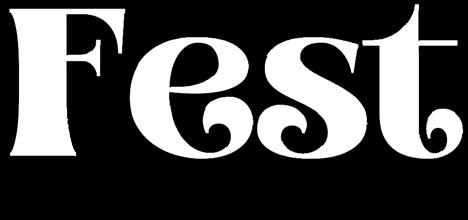


Tai chi originated in ancient China as a martial art and today it is practiced as a health wellness tool. It has been described as moving meditation with the body, mind, and spirit coming together in harmony.
Taylor Smith interviewed local tai chi teachers about their personal histories, teaching techniques, and how students of all ages can benefit. Tai chi is popular for reducing stress, recovering from injuries, and improving balance. It can also be used to treat serious ailments such as arthritis, asthma, depression, back pain, and to ease the discomforts caused by Parkinson’s disease.
Many of our readers might think that New York City bagels originated from Eastern European Jews who settled on the Lower
If you aren’t inclined to bake your own bagels, you can purchase them from a number of places locally. Here are enthusiastic recommendations from the Witherspoon Media staff: The Bagel Nook, Udo’s Bagels, Boro Bean, Bagel Barn and Deli, Small World Coffee, Princeton Soup and Sandwich, Olives of Princeton, D’Angelo Italian Market, and Chez Alice Patisserie.


Last but not least is Stuart Mitchner’s Book Scene on “Cats as Art and Artist, Character and Creator.” Cat lovers will immediately appreciate the title, but dog lovers might need to see the book covers and read the article to better understand.
We are a bit overdue celebrating cats because we’ve published a number of articles focused on dogs. You might recall our story about a wolfdog sanctuary known as Howling Woods Farm, another on Coach, who is Princeton University’s beloved therapy dog, and a historical article about dogs that lived in the White

SEPTEMBER 2023 PRINCETON MAGAZINE | 11
Scan to register
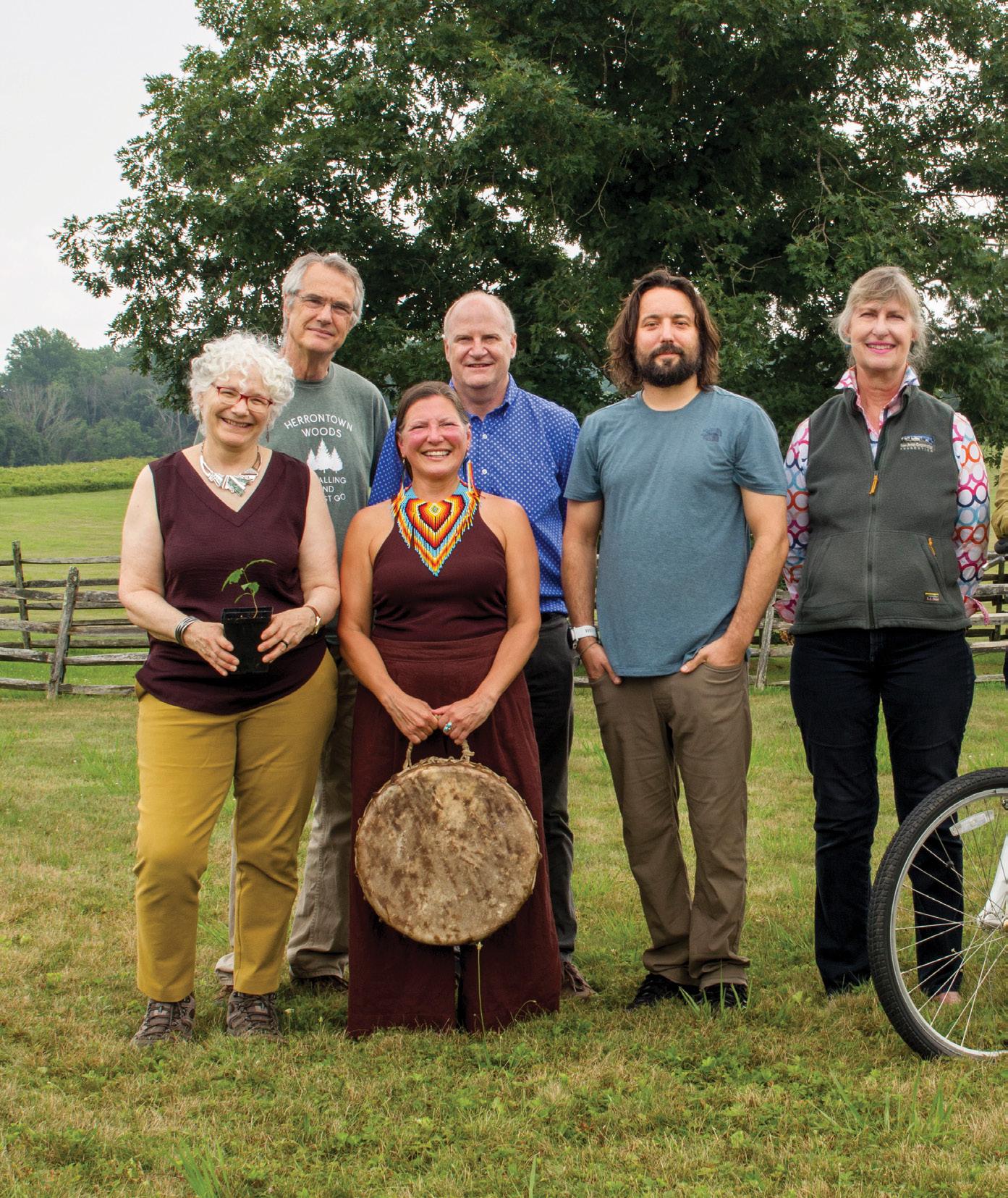
PRINCET N’S CLIMATE CRUSADERS Saving the Planet, One Issue at a Time

 By Anne Levin
Photography by Jeffrey E. Tryon and Charles R. Plohn
By Anne Levin
Photography by Jeffrey E. Tryon and Charles R. Plohn
The relentless news of rising temperatures and extreme weather conditions can make us feel powerless in the face of global climate catastrophe. For those in the Princeton area, smoke drifting down from wildfires in Canada, and devastating floods just across the Delaware River in Bucks County, Pa., have been especially distressing in recent months.
But there is reason for hope. Several dedicated individuals have been working for years — some for decades — to slow the trajectory of climate change. Their focus is local, but their commitment is global. These local crusaders are serious about taking action to cultivate resilience and generate hope for the future.
Here, seven of them respond to questions about their backgrounds, how they got involved, and what they consider the most pressing environmental issues facing us today.

SEPTEMBER 2023 PRINCETON MAGAZINE | 13
Christine symington
As the executive director of Sustainable Princeton, Christine Symington leads a mission to inspire local residents to adopt sustainable practices. At the same time, she and her colleagues at the 10-year-old nonprofit hope to make Princeton a climate-conscious role model for other communities.
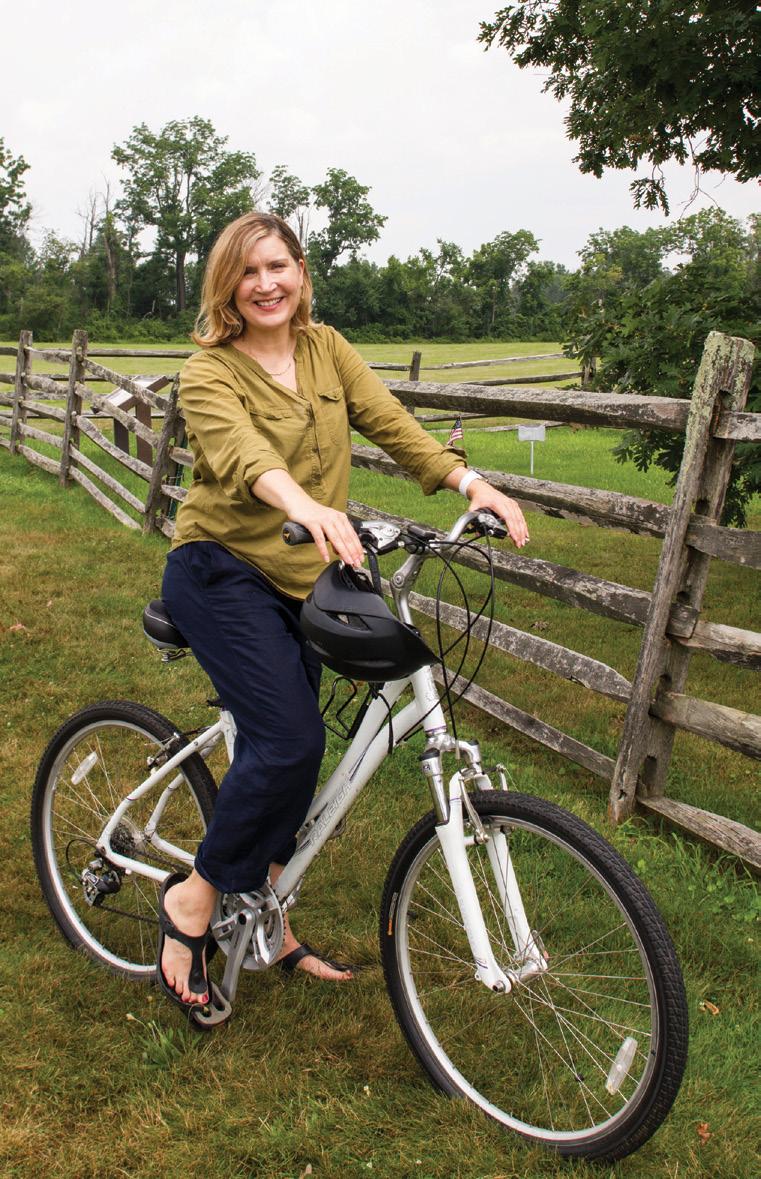
Being prepared for hazardous
conditions before they occur is a key focus. “We have great organizations here that are stewards of our public properties,” says Symington. “But we feel there is a need to focus on making these properties more resilient. One way we are trying to build community resilience is through our STAR neighborhoods program, which fosters connections between neighborhoods to implement sustainable actions.”
Raised in Levittown, Pa., Symington worked for 15 years in financial services technology, commuting from Princeton Junction to Manhattan. But her heart was in environmental issues. “So, I quit,” she says. “I started volunteering at Sustainable Princeton in 2013. Eventually I became a part-time, and then a full-time member of the staff.”
In July 2019, Princeton Council adopted a Climate Action Plan that was shepherded by Sustainable Princeton. The goal of the plan is to cut carbon emissions in half (from 2010 levels) by 2030, 65 percent by 2040, and 80 percent by 2050 — while promoting social equity, economic stability, environmental quality, and enhanced public health and safety.

Results are promising so far. “There is a growing awareness that climate change is a global issue, but there are things we need to do in our own communities,” Symington says. “And there is definitely more of an awareness that sustainability is not just about recycling. It’s about many other things — the built environment, transportation options, and the economy, just to name a few.”
The coming addition of several affordable housing complexes in Princeton presents a challenge. “We’re still a town that’s going to grow,” says Symington. “We can’t stand still and ignore the fact that we need to build more affordable housing, while at the same time reducing our greenhouse gas emissions. We have to figure out a way to not let sustainability be a block to making the town more diverse. The answer isn’t to not build anything. We have to upgrade our existing buildings in a way that doesn’t make it harder to afford to live here — finding ways to make our town more acceptable to more people, in a way that still minimizes our impact.”
14 | PRINCETON MAGAZINE september 2023
shutterstock.com
WENDY MAGER
In the small town outside Chicago where Wendy Mager grew up, evening rides through the countryside and family picnics in the local park were frequent activities. “I was outside all the time as a kid,” says Mager. “I grew up in an era where kids could do that.”
It makes sense that Mager gravitated naturally to the nonprofit Friends of Princeton Open Space (FOPOS) after moving to Princeton in 1978. Founded in 1969, FOPOS acquires open space for preservation, protecting natural resources; maintains accessibility to trails; and provides environmental education. Mager was named president of the FOPOS board in 1992 and has continued in the position ever since.
Mager studied journalism at Michigan State University, and then earned a law degree from the University of Michigan. In the mid-1980s, she was able to represent FOPOS, pro bono, in a Mount Laurel case involving a proposed affordable housing development on a large piece of land at the top of Cherry Hill Road, where she lived. As a result, the forest on the Princeton
Ridge was spared, not developed, and affordable housing was built in another location.
“The development plans were greatly scaled back, and a lot of the land was preserved as open space,” Mager says. “It was made to be a much less devastating event from an environmental perspective.”
Under Mager’s lead, FOPOS continues to lobby for preserving open space. On almost any given weekend, groups of “land stewards” organized by FOPOS can be found at the Billy Johnson Mountain Lakes Nature Preserve, getting their hands in the dirt.

“People are realizing how precious their natural environment is to them, especially since the pandemic, when huge numbers were coming to the parks,” says Mager. “And young people, thankfully, are becoming much better informed. They are much more flexible in being willing to change the way they operate so they can maintain what we have and our beautiful earth.”
A major concern has been the problem of invasive species. “We have brought in these invasive plants and messed around with the balance of the animal species, so that the natural system that has sustained humans for a long time is way out of whack,” says Mager. “It is a very big challenge for nonprofits and land trusts and for the state, now, to try and manage the parks and open space to counteract invasive species. And there is a huge overpopulation of deer who are preventing plants from regenerating and munching them to death.”
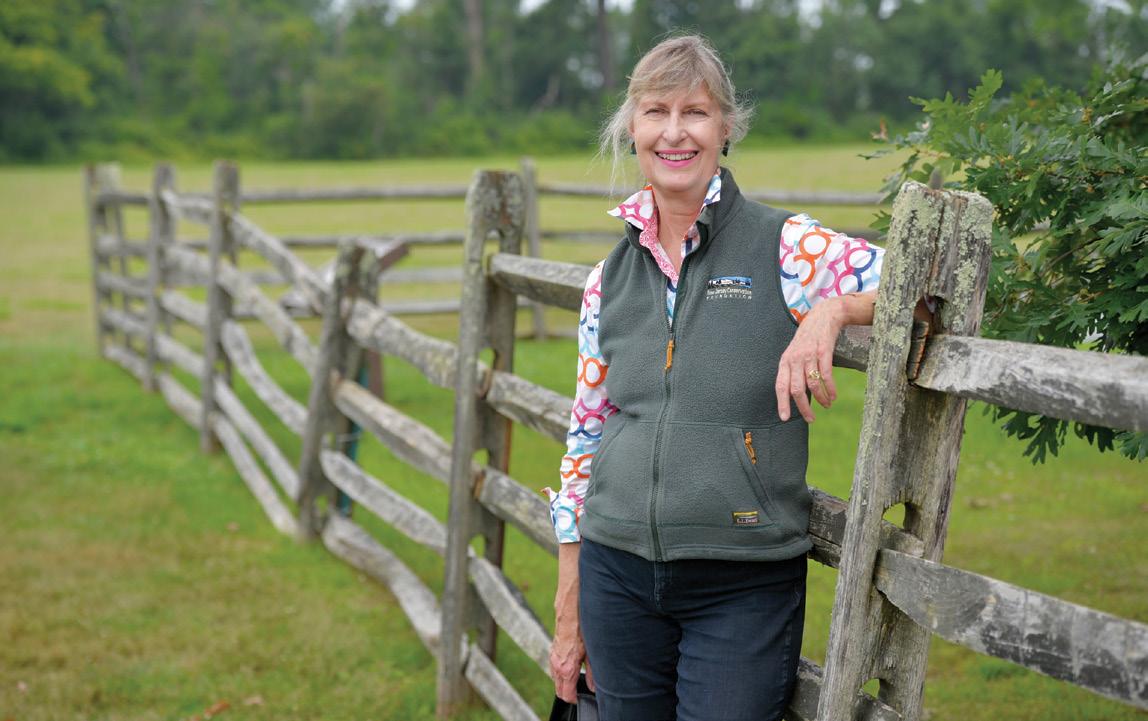

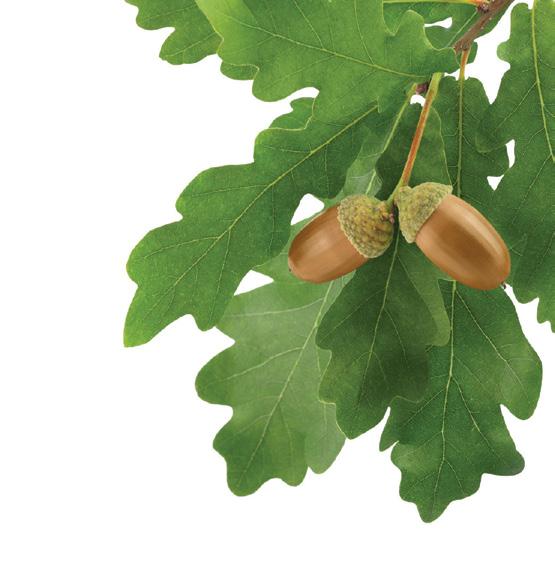
SEPTEMBER 2023 PRINCETON MAGAZINE | 15
shutterstock.com
JIM WALTMAN
Jim Waltman was working as a lobbyist for the National Audubon Society in Washington when he got a call about a job at The Watershed Institute in Pennington. Since he signed on as the organization’s executive director in 2005, the nonprofit has nearly tripled its staff and budget, and built a new facility for its public events, tours, and educational programs.
“I inherited a wonderful organization that is very strong and important,” says Waltman. “And environmental policy at the state and local levels has gotten much stronger since then. Quite a few municipalities have adopted strong measures to deal with stormwater, which is crucial.”
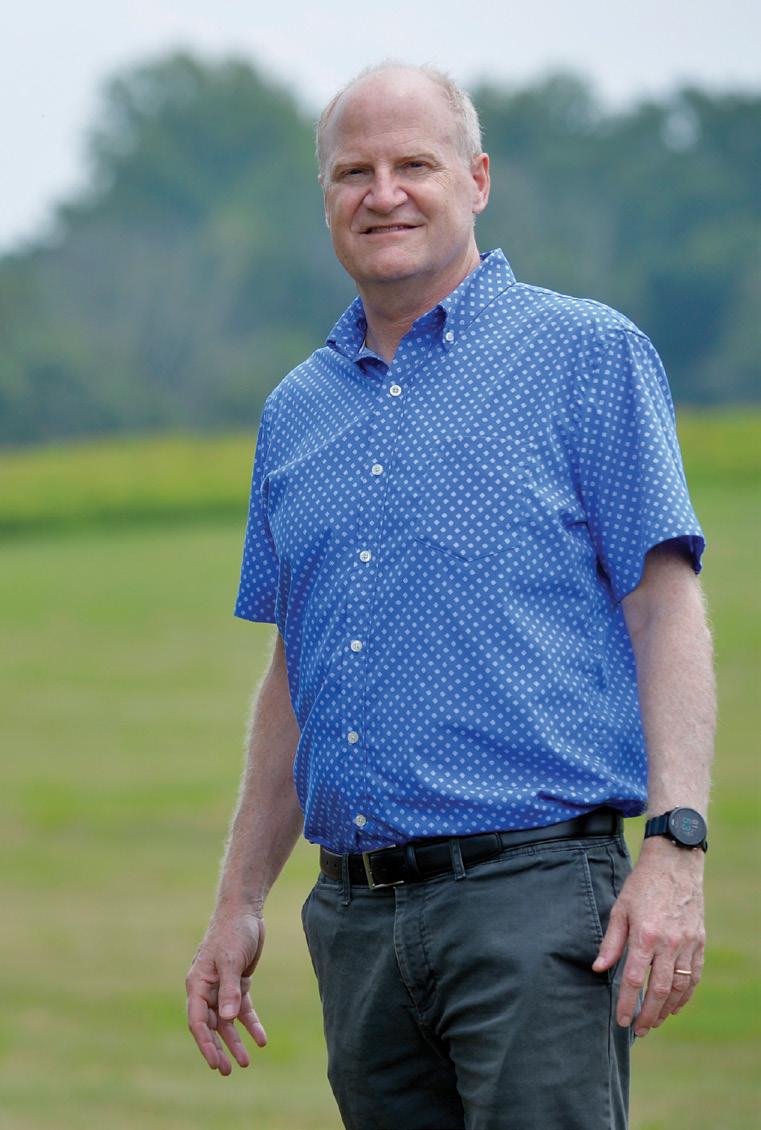
The Watershed Institute’s mission is simple: To keep water safe, clean, and healthy. “We work to protect and restore
our water and natural environment in central New Jersey through conservation, advocacy, science, and education,” reads its website.
Raised in Princeton and educated in the town’s public schools, Waltman wasn’t particularly concerned with nature. “I was in band, ran track and field — pretty much a total geek,” he says. “In college at Princeton, I was exposed to classes on biology and behavioral ecology. Then I lucked into this investigation in the Galapagos Islands, spending eight years studying natural selection in Darwin’s finches.”
He did more field research in Venezuela, and assumed his career would be centered around research and academics. “I took a breather and went to Washington for an internship at the National Wildlife Federation, which I thought would be a little respite,” he said. “I was surprised to be bitten by the political bug. I got enthralled and spent 15 years there.”
Upon landing at The Watershed, Waltman made education a priority, which it remains today.
“I think about the thousands of kids who have come through on tours, and the adults who come back and tell us their career is devoted to preservation or education or something related, and they say ‘I got my start at The Watershed.’ That’s really powerful and I’m proud to play a role,” he says.
The effect of climate change on water issues — from flooding to harmful algal blooms in oceans and freshwater — is particularly concerning to Waltman. “You’re basically feeding and cooking these organisms that are around at some level naturally, but then they explode,” he says. “It can become quite dangerous for people and pets. Climate change is here, and it is projected to be quite frightening.”

Equally crucial is the need to preserve forests that sequester carbon and provide stormwater benefits. But Waltman’s biggest concern is about mental health.
“It’s a problem that we as a society are not fully grappling with,” he says. “An important role that The Watershed Institute plays is in educating people about these big, scary issues, but also doing it with joy, and connecting people to nature. We’re providing the therapy of nature to children, teenagers, and adults. There is this issue of climate trauma, and young people are growing up without hope. So more and more, I think that is part of what we do.”
16 | PRINCETON MAGAZINE SEPTEMBER 2023
shutterstock.com
EVE NIEDERGANG
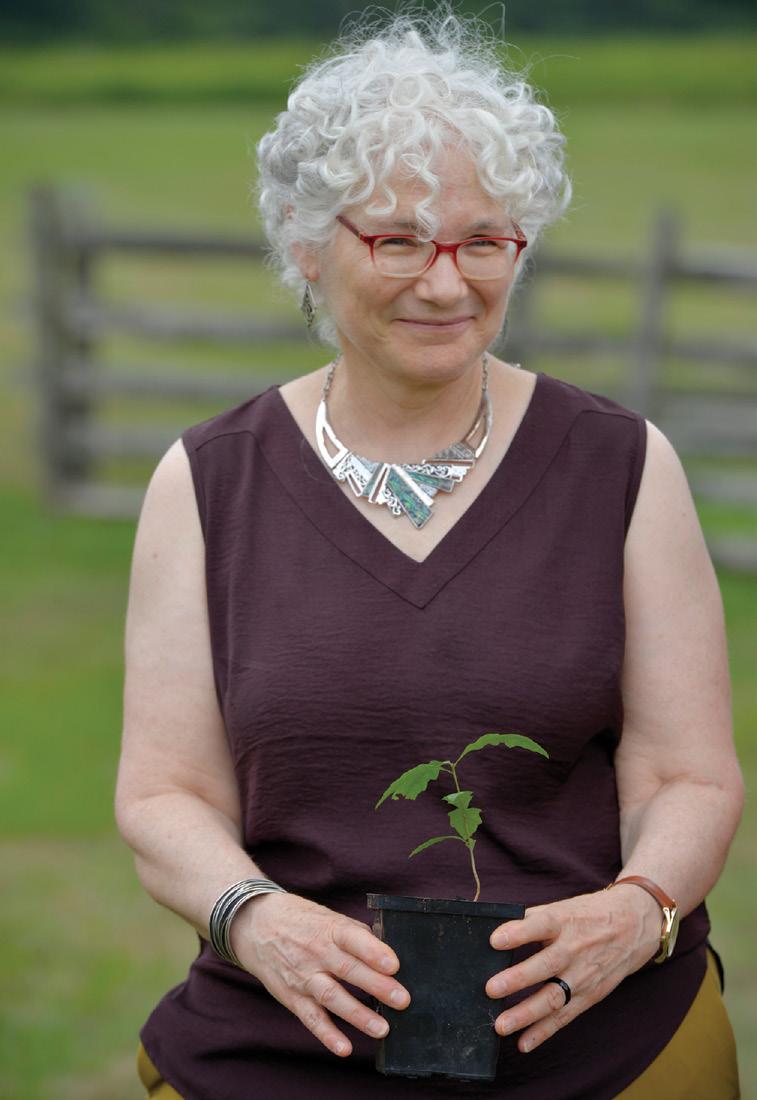
When Princeton Council passed an ordinance restricting the use of noisy, gaspowered leaf blowers in October 2021, it was Councilwoman Eve Niedergang who led the charge. The governing body’s liaison to the Princeton Environmental Commission (PEC), Niedergang worked with Sustainable Princeton, the Board of Health, and the organization Quiet Princeton to get the legislation passed.
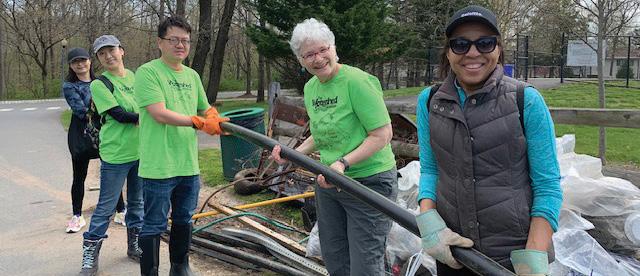
“I don’t have a background in science. I came to this more as your average person who was very concerned about environmental mitigation and the challenges to the environment,” she says of her ever-expanding role in the town’s efforts to battle climate change.
Raised on Manhattan’s Upper West Side, Niedergang studied Middle Eastern history at Princeton University, worked at Educational Testing Service (ETS) doing history and social science tests, and had her own consulting firm before shifting her focus to environmental issues. Seven years ago, she became the volunteer coordinator for The Watershed Institute.
“Even though I’m not in a scientific role, you cannot be there without absorbing scientific information,” she says. “I have learned so much about flooding issues, the preservation of native species, and all the big things you want to do to maintain not just the natural world, but for people to survive. We really do rely on the natural world.”
After Niedergang was elected to Princeton Council in 2018, acting as liaison to the PEC was a natural fit. “That has been another opportunity for me to learn from people who are more educated and have a stronger background in science,” she says. “I have been really lucky to have those opportunities.”
Not surprisingly, stormwater control is one of her biggest concerns. “We were really lucky in Hurricane Ida [September 2021] that nobody here died,” she says. “One person was rescued on Rosedale Road, but people died in Hopewell. Controlling stormwater is key to building resilience and protecting our environment.”
Niedergang also promotes the preservation of open space that is particularly environmentally valuable, citing the mature forest of the Princeton Ridge, where stormwater is naturally absorbed. Carbon emissions concern her as well.
“Princeton is on a path to address this with the Climate Action Plan, and so far we are meeting the plan’s goals,” she says. “But this is a worldwide problem.”
SEPTEMBER 2023 PRINCETON MAGAZINE | 17
photo courtesy of eve niedergang
Niedergang helping with The Watershed Institute’s stream cleanup.
TAMMY SANDS
The Princeton Environmental Commission advises the town on a list of issues including open space preservation, recycling, solid waste management, composting, and alternative transportation. Chairing the group for the past three years is Tammy Sands, whose unique experience includes trauma care, environmental law, and emergent care.
A registered yoga teacher and Reiki
healer, Sands is the founder of Lightness of Being, which “strives to bridge the gap between the health of people and the health of the planet as well as provide agency for the equity and empowerment of ALL living entities,” according to her website.
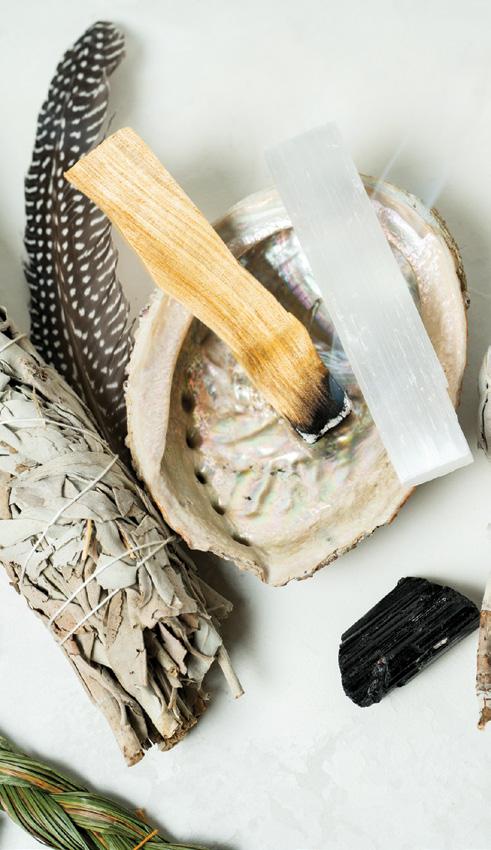
She came to Princeton in 2014 with her wife and three children and joined the PEC in 2017. “I’ve always been connected to the land,” says Sands. “I grew up in the endless mountains along the Susquehanna

River in a small town, Tunkhannock, Pa. It was very, very rural. It was my haven where I explored the mountains, creeks, and the riverbanks to make art out of things from nature, and also to connect spiritually.”
Sands’ involvement in environmental issues — locally and globally — has shown her that people react instead of act. “To some degree, I can understand it,” she says. “But as someone who has been innately connected to nature, it is difficult to witness this unfolding in a manner where we’re repeating our mistakes. As a society, we can’t continue to be unconsciously using modern practices that stifle our ecological sensibility.
“We also can’t ignore or dismiss Indigenous cultures, not just here but around the world. They may not have the academic degrees, but they have such innate knowledge and it kind of gets dismissed. We’re consuming Mother Earth herself, and not paying attention.”
18 | PRINCETON MAGAZINE SEPTEMBER 2023
shutterstock.com
STEVE HILTNER
A man of multiple talents, Steve Hiltner is a writer (the blog PrincetonNatureNotes.org), musician (clarinet, saxophone, piano, composition, and the Sustainable Jazz Ensemble), and actor (McCarter Theatre’s Onstage Ensemble, Climate Cabaret). But it is his work as a naturalist and environmentalist for which he is best known.
Hiltner is the president of Friends of Herrontown Woods, which he founded a decade ago to restore trails and preserve the legacy of famed mathematician Oswald
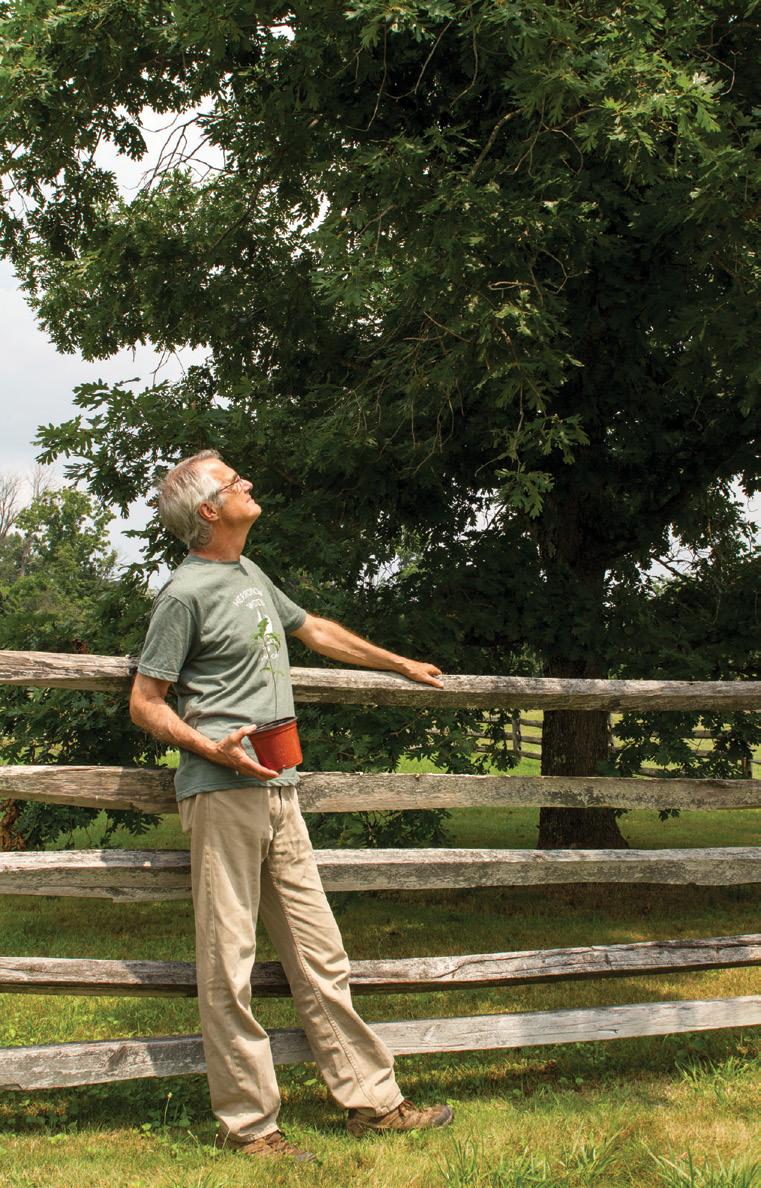

Veblen. He has been the natural resources manager for Friends of Princeton Open Space, a member of the Princeton Environmental Commission, chair of the town’s Shade Tree Commission, and a board member of Princeton’s Mountain Lakes House. If there is an environmental issue on the agenda at a municipal meeting, Hiltner is often among those to speak during the time devoted to public comment.
The son of an astronomy professor at the University of Chicago, Hiltner grew up in Wisconsin, “a little enclave on the outskirts of a small town,” he says. “It was
a little bit like the Institute [of Advanced Study], I suppose. I had woods on one side of me and an observatory on the other. Environmental issues were pretty clear to me growing up.”
Hiltner’s many fields of interest intersect around nature. “I like to steer nature but allow it to be able to express itself,” he says. “In theater, for example, I started seeing nature as a character. In combination with science, it helped me to understand our relationship to it. Nature doesn’t care about us at all, but it is extremely generous. It will still give to us no matter how much we exploit it and abuse it.”
It is the lack of regulation of carbon dioxide that Hiltner finds the most pressing environmental issue.
“Ours is a very safety-conscious culture, yet the law still says we are free to radicalize the weather and destroy our collective future,” he says. “That legal and regulatory signal drowns out any environmentalist’s attempt to sway people through educational outreach. This is true both locally and globally. People change when they must. If required to stop abusing nature, I believe people would rise to the occasion — and be better people for it.”

SEPTEMBER 2023 PRINCETON MAGAZINE | 19
The Institute for Advanced Study Woods and Charles H. Rogers Wildlife Refuge are good places to spot a male Baltimore oriole.
shutterstock.com
Tom Szaky became fascinated with the idea of entrepreneurship when he was an undergraduate at Princeton University. He knew that he wanted to start a business — he just needed an idea. By the end of his freshman year he had found it: waste.
Szaky, who grew up in Hungary and Canada, left Princeton in the middle of his sophomore year to start TerraCycle, which is focused on the collection and repurposing of hard-to-recycle waste. He started with a system that took food waste from the University cafeterias and fed it to worms, whose subsequent eliminations made potent plant food. Using repurposed soda bottles with spray tops, Szaky had

created a product that transformed waste.

TerraCycle originated in 2002 in an office on Nassau Street. Now at much larger quarters in Trenton, the company has operations in 21 countries and some $100 million in revenue. Along the way, Szaky has written four books on the subject and lectured at Princeton University, the Wharton School of Business, Harvard Business School, Yale University, and NYU Stern School of Business.
“Waste is a big issue filled with all these fascinating anomalies. It is the least explored industry out there
because it’s gross, smelly, and nasty,” Szaky says. “But it’s filled with stuff to elevate, and not just something we want to throw away.”
TerraCycle has pioneered ways to recycle products and packaging that would otherwise go to landfill or incineration. Cigarette butts, lab waste, used coffee capsules, dirty diapers, and used chewing gum are among items that would otherwise have no path to be recycled. In 2019, the company launched a circular reuse platform called Loop, enabling consumers to buy products in packaging that can be used again and again. Its newest division is centered around innovation, involving solutions for collecting and processing complex waste and integrating it in new production.

To Szaky, it’s all about consumerism. “The one unifying thing to every environmental product in the world today is that we vote for it by purchasing things,” he says. “We have to have a very fundamental meditation on our relationship with consumerism. It is only about 70 years old as a concept, an innately modern thing we have become very attracted to. It doesn’t matter how much we recycle, reuse, or switch from fossil fuel — if we continue to consume at this rate, there is nothing we can do to stop it.”
“We all buy things,” Szaky continues. “We vote with money all day long. Whatever we buy will appear, and whatever we don’t buy will disappear, even more so in a place like Princeton, because of the wealth. It has to be driven by the people who have the easiest ability to purchase. And it doesn’t mean live in austerity. It might mean we focus on finding that one clothing item you’re going to love and repair and spend a lot of money on. There are many ways to solve this, and still not destroy the economy.”
20 | PRINCETON MAGAZINE SEPTEMBER 2023
TOM SZAKY
shutterstock.com
A Mid-Century Modern Gem! Buyer Must Relocate




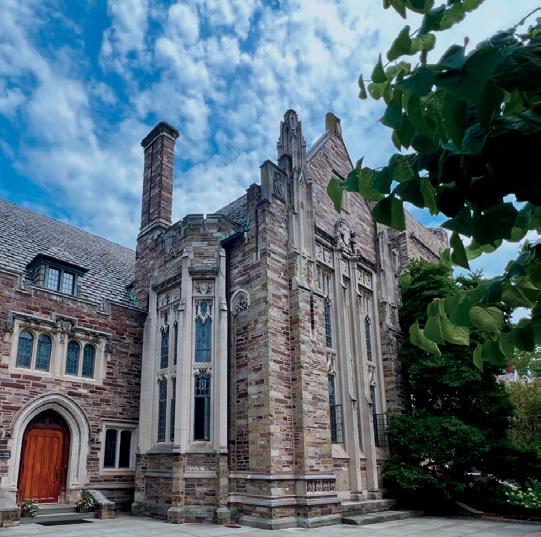

A charming mid-century modern residence designed by Wynant D. Vanderpool, Jr. for noted mathematician Atle Selberg is being offered for sale. Only the structure is being offered; the successful buyer must move the home from its current location at 35 Stone House Drive in the Institute for Advanced Study (IAS) neighborhood in Princeton. Relocating the Selberg house will permit both the IAS and Princeton Battlefield State Park to realize their plans for the site in an agreement negotiated several years ago. Preserving the structure on a new location has been identified as an acceptable solution by both organizations.

SEPTEMBER 2023 PRINCETON MAGAZINE | 21 MISSION: PRINCETON Live music - Cocktails - Climate-Friendly Food Get your tickets Mathey College Princeton University D A Y O C T , 1 4 6 : 3 0 P M T I M E s u s t a i n a b l e p r i n c e t o n . o r g / m i s s i o n p r i n c e t o n 2 0 2 3 Honoring local sustainability advocate, Penny Thomas
Princeton’s Historic Atle Selberg Residence
STONEHOUSE DRIVE | PRINCETON, NEW JERSEY CALLAWAYHENDERSON.COM/ID/F8BJDP
35
David M. Schure Broker Associate c 609.577.7029 Grant Wagner Sales Associate c 609.331.0573 o 609.921.1050 callawayhenderson.com 4 Nassau Street, Princeton, New Jersey 08542 Subject to errors, omissions, prior sale or withdrawal without notice. Each office is independently owned and operated.
Lisa stands out from the pack of thousands of other agents in the greater Princeton area. Her 35+ years of experience and renovation know-how will help you when selling your house or looking for a home. Her focus is on you and adding unique touches to each experience to cater to your needs and highlight the features of your home.




















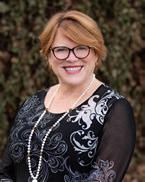
22 | PRINCETON MAGAZINE SEPTEMBER 2023 Lisa Theodore REAL ESTATE SALESPERSON lisa.theodore@compass.com M: 908-872-1840 | O: 609-710-2021 Yael Zakut is a real estate salesperson affiliated with Compass RE. Compass RE is a licensed real estate broker and abides by Equal Housing Opportunity laws. 90 Nassau Street, 2nd Floor. Princeton NJ 08542. O 609.710.2021. Yael Lax Zakut REAL ESTATE SALESPERSON yael.zakut@compass.com M 609.933.0880 | O 609.710.2021 8 Players Lane ∙ Princeton, NJ 279 Russell Road ∙ Princeton, NJ ∙ Buyer’s Agent 278 Hamilton Avenue ∙ Princeton, NJ Lisa Theodore is a real estate salesperson affiliated with Compass RE. Compass RE is a licensed real estate broker and abides by Equal Housing Opportunity laws. 90 Nassau Street, 2nd Floor. Princeton NJ 08542. O 609.710.2021. compass.com/agents/lisa-theodore/ “Buying a home
will be the best opportunity in your lifetime.” –
Professional Credentials National Association of Realtors NJ Association of Realtors Mercer County Board of Realtors Member of BRIGHT MLS, CJMLS, and GSMLS Mercer County Top Producers Association, 2019+, current Treasurer NJ Circle of Excellence Award Winner (sales volumes & # of transactions), 2016+
RIGHT NOW
Warren Buffet
• Trustworthy • Experienced 7 Rt 31 North • 7 Rt 31 North • Pennington, NJ 08534 regentfloorcovering.com • Trustworthy • Experienced • Professionalism • Integrity • Quality 609-737-2466 7 Rt 31 North • Pennington, NJ 08534 regentfloorcovering.com • Professionalism • Integrity • Quality 609-737-2466 7 Rt 31 Carpet • Hardwood • Vinyl • Window Treatments Complete Kitchen & Bath Remodeling Tile • Stone • Countertops • Shower Doors FREE ESTIMATES • QUALITY SERVICE • REPAIR 609-394-2427 We specialize in Slate ✧ Copper ✧ Rubber Shingles ✧ Metal and Cedar Roofing We also do Gutter work and Roof Maintenance Fully Insured FLESCH’S ROOFING & Sheet Metal Co., Inc Serving the Princeton community for over 25 years Family Owned and Operated INSTITUTIONAL • RESIDENTIAL • HISTORICAL WORK We also do Gutter work and Roof Maintenance Fully Insured FLESCH’S ROOFING & Sheet Metal Co., Inc Serving the Princeton community for over 25 years FREE ESTIMATES • QUALITY SERVICE • REPAIR WORK 609-394-2427 LIC#13VH02047300 We specialize in Slate ✧ Copper ✧ Rubber Shingles ✧ Metal and Cedar Roofing Family Owned and Operated INSTITUTIONAL • RESIDENTIAL • HISTORICAL WORK FLESCH’S ROOFING & Sheet Metal Co., Inc Serving the Princeton community for over 25 years Family Owned and Operated INSTITUTIONAL • RESIDENTIAL • HISTORICAL WORK We also do Gutter work and Roof Maintenance Fully Insured FLESCH’S ROOFING & Sheet Metal Co., Inc Serving the Princeton community for 35 years FREE ESTIMATES • QUALITY SERVICE • REPAIR WORK 609-394-2427 LIC#13VH02047300 We specialize in Slate ✧ Copper Rubber ✧ Shingles Metal and Cedar Roofing We also do Gutter work and Roof Maintenance Fully Insured INSTITUTIONAL • RESIDENTIAL • HISTORICAL WORK Fleschs QP Sept.indd 1 8/15/23 6:13 PM CREATE THE SPACE YOU LOVE TO LIVE IN 609-531-8763 closetsredesigned.com ClosetsRedesigned 4th.indd 1 4/3/23 2:27 PM Rosaria Lawlor, CLHMS, CRS, SRS, ABR, SFR Sales Associate Certified Luxury Home Marketing Specialist Licensed in NJ and PA Coldwell Banker Realty 10 Nassau St. Princeton, NJ 08542 (609) 658-5773 mobile (609) 921-1411 office Rosaria.Lawlor@cbmoves.com rosarialawlorfinehomes.com Rosario Lawlor 6th.indd 1 8/25/23 2:50 PM
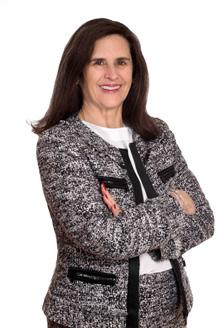




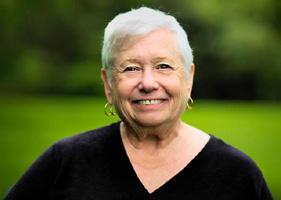




1216 3rd Ave, Spring Lake, NJ 07762 Office: 732-449-4441 Mobile: 732-859-7808 cnapp@dianeturton.com www.cindynapphomes.com Spring Lake • Spring Lake Heights Sea Girt • Manasquan • Avon Brielle • Belmar • Lake Como Bradley Beach • Wall Township Selling and Renting Homes Along the Jersey Shore. nd I am with you every real estate is deeply ven after you close on ays call me for advice, ETS RESULTS C: 609.462.2340 O: 609.924.1600 robinwallack.com Broker Associate robin wallack@foxroach com anchise system of BHH Affiliates, LLC Thinking of Buying or Selling? Street, Princeton, NJ 08540
COMMON QUESTIONS ABOUT 529 PLANS
By Matt Hallam
If you’re thinking about saving for your child’s or grandchild’s college education, consider a 529 plan. Income from assets in these plans is never taxed so long as the funds are eventually withdrawn and used for “qualified education expenses.”
Who can contribute to a 529 plan?
Anyone may contribute to a 529 account for one’s self or another person. The contribution is a taxable gift for federal gift tax purposes; however, contributions up to the $17,000 annual exclusion amount per student per year may be made free of gift tax. A donor may contribute up to $85,000 free of gift tax in a single year as long as he or she files a gift tax return and elects to treat the gift as one current and four future $17,000 gifts, using the annual exclusion for the next five years. There is no federal income tax deduction for a 529 plan contribution.
Who owns the 529 account?
Usually the person who originally funded the account retains ownership, as well as the power to direct funds and change the beneficiary. For both practical and tax reasons, grandparents sometimes change ownership to the student’s parents or other relatives. Multiple persons may contribute to a single 529 account without changing the ownership.
What expenses can be paid from the account?
Payments for qualified education expenses are not subject to federal income tax and include:
• Postsecondary tuition, fees, books, supplies, and educational equipment.
• The “reasonable” cost of room and board for a beneficiary enrolled at least half-time.
• The cost of certain registered apprenticeship programs.
• Tuition paid to a public, private, or religious school for grades K–12, up to $10,000 per student per year.
• Limited distributions to pay qualified student loan principal and interest.

Plan distributions cannot be used to pay for travel expenses, health insurance, college applications, testing fees, or room and board greater than the college’s cost of attendance allowance.
How much can be distributed to pay student loans?
Up to $10,000 can be distributed from a 529 plan to make payments to the plan beneficiary’s qualified student loan. This is a lifetime limit. Additional distributions of $10,000 may be made from the 529 plan beneficiary’s account to pay the qualified student loan debt of each of the beneficiary’s siblings and, for these purposes, step-siblings. The $10,000 limitation applies separately to each plan beneficiary and each sibling. Student loan interest paid with tax-free 529 plan earnings is not deductible by the student or anyone else for income tax purposes.
Will the donor receive a federal or state income tax deduction for a gift into a 529 account?
There is no federal income tax deduction for the contribution, but the donor will avoid future federal income tax on income generated within the account. Withdrawals used for qualified education expenses are also tax free. Most states permit a limited state income tax deduction or tax credit if the contribution is made to a 529 plan based in-state (the amount varies by state); a few states permit a deduction regardless of where the plan is based. If the 529 account owner ultimately uses a later distribution from the account for something other than a qualified education expense, the owner would likely be subject to state penalties to recapture the prior deduction, and be subject to state income tax on any portion of the payment that is untaxed income. Still, other states respect the income-tax-free nature of 529 plan withdrawals but provide for no state income tax deduction for the funding.
Are all distributions from a 529 plan free from income tax?
Withdrawals used for qualified education expenses are free from federal income tax, and most states provide the same benefit for state income tax. However, not all states have adopted the newer qualified expense categories of loan payments and K–12 tuition. Since not all states comply with this inclusion, work with your advisors to determine your eligibility. There are states imposing income tax on withdrawals for qualified loan payments, but the number of states remains fluid as states pass legislation to conform to the federal rules. The 529 plan owner and beneficiary should consult with local tax counsel.
Does having a plan affect financial aid eligibility?
A parent-owned 529 plan reduces a student’s aid package by up to 5.64% of the value of the plan’s balance. Under new rules, distributions from a grandparent-owned 529 plan will no longer count as income to the student (also doesn’t count as an asset), so there is no impact on financial aid when a grandparent owns the 529 plan.
What happens to unused 529 account funds?
The owner can:
• Change the beneficiary to another qualifying family member.
• Continue to hold the funds in the account until another beneficiary is identified.
• Roll the funds over to a 529 ABLE account for a qualifying family member living with disabilities.
• Withdraw the unused funds, paying income tax on the earnings portion and a 10% penalty.
Beneficiaries of 529 college savings accounts may roll over up to $35,000 over the course of their lifetime from any 529 account in their name to their Roth IRA. These rollovers are also subject to Roth IRA annual contribution limits, and the 529 account must have been open for more than 15 years.
Matthew Hallam, CFA, is a Portfolio Manager in Glenmede’s Princeton office. He can be reached at Matthew.Hallam@Glenmede.com, or at 609.430.3127.
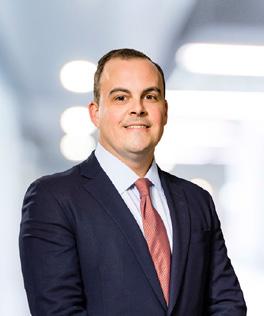
24 | PRINCETON MAGAZINE SEPTEMBER 2023
PAID ADVERTISEMENT
This article is provided solely for informational purposes and is not intended to provide financial, investment, tax, legal, or other advice. It contains information and opinions which may change after the date of publication. The author takes sole responsibility for the views expressed herein and these views do not necessarily reflect the views of the author’s employer or any other organization, group, or individual. Information obtained from third-party sources is assumed to be reliable but may not be independently verified, and the accuracy thereof is not guaranteed. No outcome, including performance or tax consequences, is guaranteed, due to various risks and uncertainties. Readers should consult with their own financial, tax, legal, or other advisors to seek advice on their individual circumstances.
Jennifer Haythorn Julian K. Kazan





















No aspect of this advertisement has been verified or approved by the Supreme Court of New Jersey. Information on the Best Law Firms selection process can be found at www.bestlawfirms.usnews.com/methodology.aspx. Information on the Super Lawyers selection process can be found at www.superlawyers.com/about/selection_process.html. Before making your choice of attorney, you should give this matter careful thought. the selection of an attorney is an important decision. Committee on Attorney Advertising, Hughes Justice Complex, PO Box 970, Trenton, NJ



SEPTEMBER 2023 PRINCETON MAGAZINE | 25 989 Lenox Drive Suite 101 Lawrenceville, NJ 08648 (609) 520-0900 www.pralaw.com Divorce / Custody / Parenting Time / Marital Property Settlement Agreement / Prenuptial Agreements /Domestic Violence / Child Relocation Issues / Domestic Partnerships / Mediation/ Palimony / Post Judgment Enforcement and Modification / Appeals Lydia Fabbro-Keephart Nicole Huckerby John A. Hartmann, III Chairman Jennifer Haythorn Julian K. Kazan FAMILY LAW DEPARTMENT No aspect of this advertisement has been verified or approved by the Supreme Court of New Jersey. Information on the Best Law Firms selection process can be found at www.bestlawfirms.usnews.com/methodology.aspx. Information on the Super Lawyers selection process can be found at www.superlawyers.com/about/selection_process.html. Before making your choice of attorney, you should give this matter careful thought. the selection of an attorney is an important decision. Committee on Attorney Advertising, Hughes Justice Complex, PO Box 970, Trenton, NJ 08625. Is your marriage hanging Divorce / Custody / Parenting Time / Marital Property Settlement Agreement / Prenuptial Agreements /Domestic Violence / Child Relocation Issues / Domestic Partnerships / Mediation/ Palimony / Post Judgment Enforcement and Modification / Appeals Lydia Fabbro-Keephart Nicole Huckerby John A. Hartmann, III Chairman
08625. Is your marriage hanging by a thread? 989 Lenox Drive Suite 101 Lawrenceville, NJ 08648 (609) 520-0900 www.pralaw.com Divorce / Custody / Parenting Time / Marital Property Settlement Agreement / Prenuptial Agreements /Domestic Violence / Child Relocation Issues / Domestic Partnerships / Mediation/ Palimony / Post Judgment Enforcement and Modification / Appeals Lydia Fabbro-Keephart Nicole Huckerby John A. Hartmann, III Chairman Jennifer Haythorn Julian K. Kazan FAMILY LAW DEPARTMENT No aspect of this advertisement has been verified or approved by the Supreme Court of New Jersey. Information on the Best Law Firms selection process can be found at www.bestlawfirms.usnews.com/methodology.aspx. Information on the Super Lawyers selection process can be found at www.superlawyers.com/about/selection_process.html. Before making your choice of attorney, you should give this matter careful thought. the selection of an attorney is an important decision. Committee on Attorney Advertising, Hughes Justice Complex, PO Box 970, Trenton, NJ 08625. Is your marriage hanging by a thread? 989 Lenox Drive Suite 101 Lawrenceville, NJ 08648 (609) 520-0900 www.pralaw.com Divorce / Custody / Parenting Time / Marital Property Settlement Agreement / Prenuptial Agreements /Domestic Violence / Child Relocation Issues / Domestic Partnerships / Mediation/ Palimony / Post Judgment Enforcement and Modification / Appeals Lydia Fabbro-Keephart Nicole Huckerby John A. Hartmann, III Chairman Jennifer Haythorn Julian K. Kazan FAMILY LAW DEPARTMENT No aspect of this advertisement has been verified or approved by the Supreme Court of New Jersey. Information on the Best Law Firms selection process can be found at www.bestlawfirms.usnews.com/methodology.aspx. Information on the Super Lawyers selection process can be found at www.superlawyers.com/about/selection_process.html. Before making your choice of attorney, you should give this matter careful thought. the selection of an attorney is an important decision. Committee on Attorney Advertising, Hughes Justice Complex, PO Box 970, Trenton, NJ 08625. Is your marriage hanging by a thread? 989 Lenox Drive Suite 101 Lawrenceville, NJ 08648 (609) 520-0900 www.pralaw.com John A. Hartmann, III Chairman FAMILY LAW DEPARTMENT Pellettieri HP Vertical.indd 1 6/15/23 2:46 PM Michelle Thompson Pellettieri HP Vertical Sept 2023.indd 1 8/25/23 10:46 AM SINCE 2006 greenleafpainters.com (609) 750-0030 Greenleaf Quarter.indd 1 3/26/23 8:24 AM Greenleaf Quarter New Size.indd 1 6/5/23 1:48 PM Woodworking & Building Co. Since 1980 Woodworking & Building Co. Since 1980
WHIG-CLIO

254 YEARS OF FREEDOM OF SPEECH, CIVIL DISCOURSE, AND CAMARADERIE AT PRINCETON UNIVERSITY
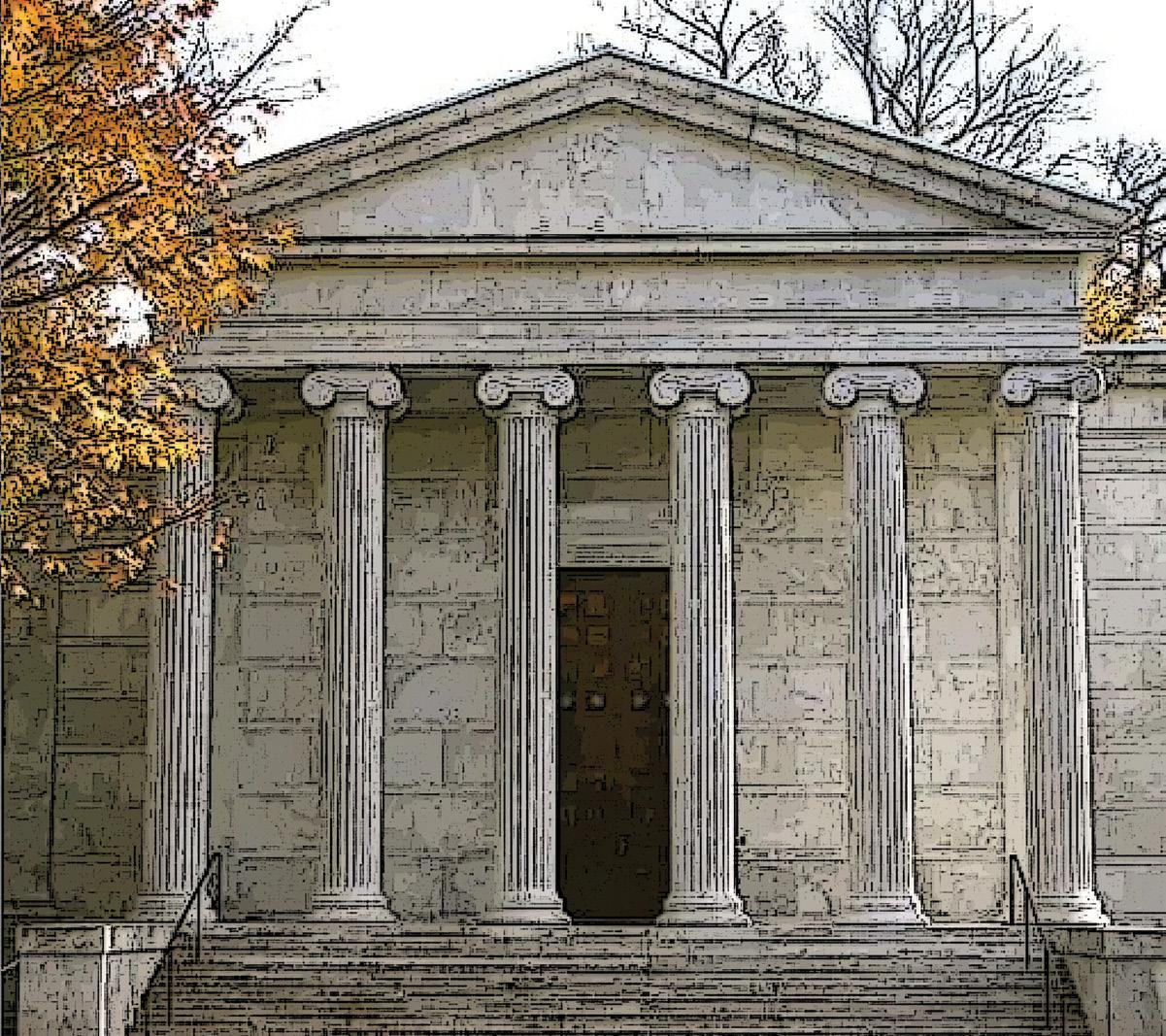 BY DONALD GILPIN
BY DONALD GILPIN
WHIG HALL. (WHIGCLIO.PRINCETON.EDU)
On the Princeton University campus, behind Nassau Hall and just beyond Cannon Green, stand two stately neoclassical buildings, remodeled in the 1890s to look like Greek temples — Whig Hall on the left and Clio Hall on the right.
Currently housed in Whig Hall, the American Whig-Cliosophic Society — the oldest college political, literary, and debating society in the country — is steeped in history and tradition. “Probably no other undergraduate organization in this country has as long and lively a history as Whig-Clio,” Robert F. Goheen, Princeton’s president from 1957 to 1972, once stated, and the past half century since he made that statement has been even more lively.
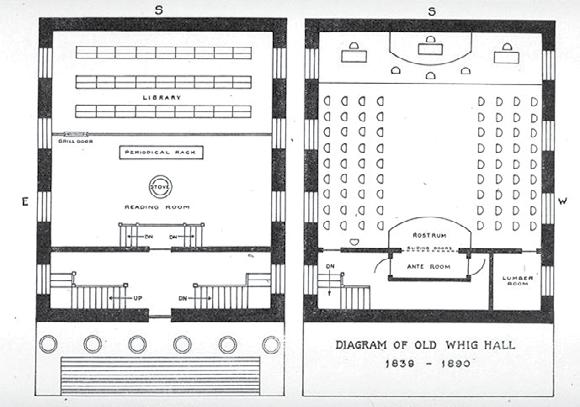
The list of students who were members of the Whig Society or the Cliosophic Society, which merged after World War II to become the American Whig-Cliosophic Society, includes two U.S. presidents, two vice presidents, hundreds of members of Congress, governors, federal and state Supreme Court justices, and dozens of college presidents.
Whig-Clio founders James Madison and Aaron Burr in the 18th century; Woodrow Wilson, F. Scott Fitzgerald, Adlai Stevenson, Ralph Nader, and Secretaries of State George Shultz and James Baker in the 20th century; along with, more recently, Supreme Court Justice Samuel Alito and Texas Senator Ted Cruz, are just a few of the many prominent, often controversial, figures from American history who were members of the society. Not to mention an additional long list of famous honorary members and dignitaries who have delivered speeches at WhigClio.
Whig-Clio, which is run entirely by undergraduates, was originally two rival political organizations. The American Whig Society was founded in 1769 by

Madison, Princeton Class of 1771 and the fourth U.S. president (1809-17); Philip Freneau, Class of 1771 and Revolutionary War poet; and William Bradford, Class of 1772 and later U.S. attorney general (1794-95). The Cliosophic Society was founded in 1765 by William Paterson, Class of 1763, a signer of the U.S. Constitution, and later governor of New Jersey (1790 to 1793); Oliver Ellsworth, Class of 1766 and later chief justice of the Supreme Court (1796-1800); and Aaron Burr, Class of 1772 and later U.S. vice president (1801-1805).
Amidst the conflicts and controversies of contemporary society, often accentuated on university campuses, Whig-Clio continues to promote that freedom of
the right. In fact, it does not even go down the middle of the road. Whig-Clio has no political bias. An invitation from Whig-Clio to a guest speaker is not an endorsement of that speaker’s viewpoints. What the society emphatically endorses by its invitation, though, is the guest’s right to speak.”
She went on to cite several examples of Whig-Clio programs and speakers from left to right across the political spectrum, as she emphasized the organization’s balanced, impartial approach and its adherence to the ideals of freedom of speech.
In a recent phone conversation, current Whig-Clio President Won-Jae Chang, a senior economics major, described how the same principles prevail at the Society 48 years later.
Noting Whig-Clio’s standing as the “largest political group on campus,” Chang accentuated the organization’s ongoing commitment to freedom of speech and its willingness to embrace controversial topics and speakers.
“We have political diversity in Whig-Clio, with people ranging from mainstream politics to very niche political views,” he said. “We have been able to bring together different political views within our society and to discuss a wide variety of topics.”
speech that Madison and others celebrated at the birth of Whig-Clio before the American Revolution and in their creation of the Bill of Rights about 20 years later.
Tina Ravitz, a 1976 Princeton graduate who was Whig-Clio’s first woman president, wrote in the December 9, 1975 Daily Princetonian about Whig-Clio’s commitment to freedom of speech and its roots in the wisdom of the founders: “Today, the Society continues to recognize what James Madison and others insightfully understood almost 200 years ago: the First Amendment’s guarantee of freedom of speech is of supreme importance to a vital, questioning and free society.”
She added, “Both politically and ideologically, Whig-Clio does not veer towards the left; nor does it veer towards
He continued, “We try to present a lot of different topics, and we try to make sure that discourse is protected. Whatever political views are expressed, they can be discussed as long as they aren’t disruptive. The University’s policies are very supportive of free speech and civil discourse. Our goal is to maintain impartiality and allow for civil discourse without taking a strong stand ourselves. We want to have a safe space for everyone.”
In their 1996 foreword to J. Jefferson Looney’s short history of Whig-Clio, Ravitz and the late Donald E. Stokes, a 1951 Princeton graduate and longtime dean of Princeton’s School of Public and International Affairs, commented further on Madison’s enduring influence on WhigClio. “There is something hauntingly appropriate about the role played by the
SEPTEMBER 2023 PRINCETON MAGAZINE | 27
shutterstock.com
Diagram of old Whig Hall 1636-1690. (Princeton University. Property of the Trustees of Princeton University)
first floor second floor
society he helped to found at the college in reaffirming two centuries later the tradition of free speech on the University campus,” they wrote.
“The modern history of Whig-Clio attests to the society’s successful transition to current times while maintaining these traditions of the founders,” they continued. “Although its internal structure and specific programs change from time to time, the society continues to promote the exchange of ideas on vital issues by preparing members for intelligent participation in the life of the nation its earliest members did so much to establish.”
this area. Credit goes to the student leaders for making sure that the society is open to all points of views and the students feel free to express themselves in a way that needs to be civilized, but encourages open discussion — people with different points of view being able to talk things through and debate issues of significance. We also bring in a variety of speakers from across the political spectrum so that we’re not viewed one way or another.”
Rankin, who continues to judge mock trials at Whig-Clio, recalled some of the many controversial speakers at the society over the years, as he recounted episodes
activities on campus, were curtailed until after the end of the war in 1781.
All of the Cliosophic Society’s records were destroyed when Nassau Hall burned down in 1802. The society met in a variety of locations during the ensuing years, most notably in the building now known as Stanhope Hall, until 1838, when it moved into a new wood frame building called Clio Hall on Cannon Green. That building was eventually demolished to make way for the two stately pillared neoclassical structures that now stand behind Nassau Hall.
In the 18th and into the 19th centuries the societies had their own libraries, with rare books and paintings, and at one point an even larger library collection than the University itself.
The dominant role of Whig and Clio at Princeton University declined in the late 19th and early 20th centuries as the eating clubs, athletics, and other extra-curricular activities were established and rapidly gained prominence.

In a recent phone conversation, Skip Rankin, a 1972 Princeton graduate who was undergraduate president of WhigClio in 1970 and is now president of the organization’s board of trustees, echoed those thoughts.
“We pride ourselves on civilized debate,” he said. “That is the main thing we say to our students. You can be passionate about your positions, but you need to be civil in discourse.”
In the current national climate of angry rants, siloed political groups, cancel culture shutting out unwanted opinions, and revoked invitations for unpopular speakers, Whig-Clio’s tradition and continuing commitment to civilized discourse seems to offer an admirably calmer, saner alternative — and one that is often criticized by both liberal and conservative elements.
“Whig-Clio is especially valuable today,” said Rankin, who is an attorney based in New York City with the Baker McKenzie international law firm, “because I’m concerned and I think many of the students are equally concerned that we don’t end up in such a partisan politics that we can’t talk to each other. Recent student leadership has been fantastic in
from a history that is almost as colorful as it is long.
Going back to their beginnings, they were secret societies, Rankin noted. “If you look at the buildings architecturally, originally they didn’t seem to have any windows facing each other,” he said. “As secret societies they wanted no one to peer into the other to see what was going on. Windows were later installed in order to bring some light into the buildings.”
In the 18th through the 19 centuries, Whig and Clio — known at the time as the Cliosophic Society — members met to hear declarations and to read, recite, and debate. Their activities were shrouded in ritual and secrecy, as they became dominant forces in student life on campus.
In the years leading up to the American Revolution, the issues of the day were debated on the Princeton University campus. During what was called the Paper Wars of 1771 the two societies competed in a series of vituperative literary battles, attacking each other verbally on a daily basis as the entire student body looked on.
The faculty threatened to shut down both organizations, and, as British and American forces occupied Nassau Hall, the societies, along with most other
The rapport between Whig and Clio grew closer, and in 1914 they ended the tradition of secrecy, opened membership to the entire student body, and established increased communication between the two societies. They merged in 1928 and joined forces to conduct their activities together in Whig Hall, while bolstering their finances by renting Clio Hall to the University, though the merger did not become official until the 1940s.
“The unification of the American Whig-Cliosophic Society required two previous arch rivals to coexist with civility and humor,” wrote Ravitz and Stokes. “The new society could not be an advocacy organization. Instead, it transcended any particular cause or focus. The two parties had to collaborate to run the merged institution. Students talked to others with opposing viewpoints and entertained the possibility that they could be wrong. Impartiality became an ideological basis for the umbrella organization.”
The two buildings are owned by Whig-Clio, which has its own endowment and board of trustees.
“The University pays rent, and they give $10,000 a year to the society for the use of Clio Hall, which helps to support some of the organization’s activities,” said Rankin. He also noted that, in accordance with post-World War II documents,
28 | PRINCETON MAGAZINE SEPTEMBER 2023
“The modern history of Whig-Clio attests to the society’s successful transition to current times while maintaining these traditions of the founders.”
Tina Ravitz and Donald E. Stokes
the University agreed to maintain the buildings and is responsible for basic upkeep.

The debating tradition between the more liberal Whig and the more conservative Clio parties prevails unabated as the organization continues to aspire to its nonpartisan, politically unbiased goals. Born in the world of the political upheavals and raging controversies of the mid 18th century, Whig-Clio moves forward and flourishes through all the upheavals and aggressions of late 20th and early 21st century politics.
The society serves a number of roles on campus as a focal point for politics and debate and the venue for events open to students, faculty, and the community at large. Subsidiaries of Whig-Clio include the award-winning Princeton Debate Panel (which Alito captained some 52 years ago), the Princeton Mock Trial Association, the International Relations Council, the Model Congress (with an annual conference drawing more than 1,000 high school participants), and the Whig-Cliosophic Honorary Debate Panel.
As a popular gathering spot on campus, the Whig-Clio senate chamber hosts watch parties during presidential debates,
election night returns, and other important events. About 2,000 students, according to Rankin, crowded the chamber last March to watch Princeton play Creighton in the second round of the NCAA basketball tournament.
Whig-Clio has brought many prominent public figures with a wide range of views to speak on campus, and since 1960 has bestowed its James Madison Award for Distinguished Public Service on 48 prominent national figures. The invited
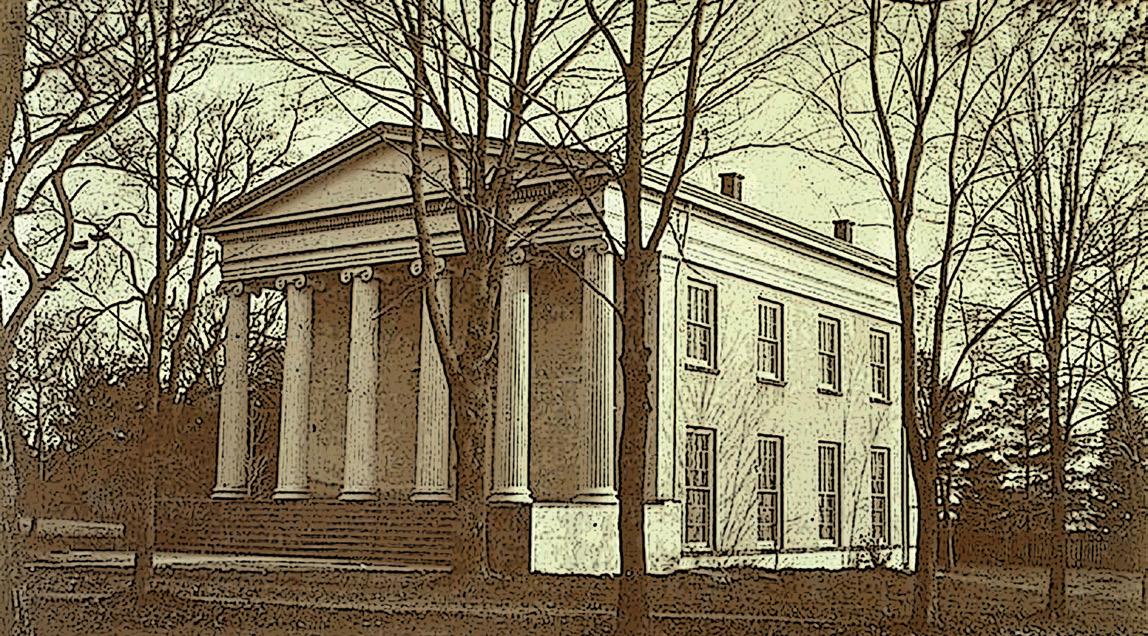
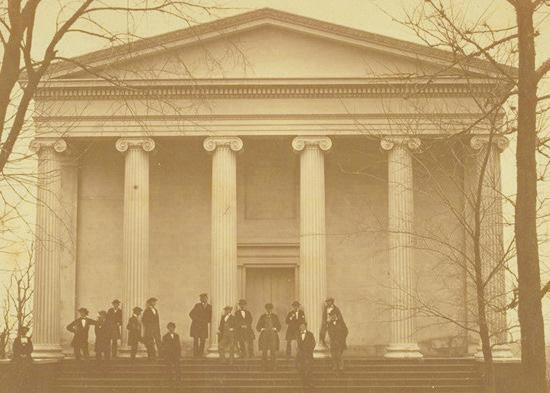
SEPTEMBER 2023 PRINCETON MAGAZINE | 29
Cliosophic Hall Class of 1861. (Princeton University Mudd Library/princetonianamuseum.org)
Whig Hall, original structure, viewed from the northwest. (Princeton University. Property of the Trustees of Princeton University)
speakers and the award recipients have not been chosen without controversy.
Rankin discussed some of the turmoil that has arisen over the years as Whig-Clio has maintained its reputation for inviting controversial speakers and pursuing its goals of open public discourse and free speech.
“The society has had a history of controversial speakers that goes back long before my time,” Rankin said. He mentioned Alger Hiss, who, in 1954 during the Cold War in the McCarthy era, was accused of being a communist spy for the Soviet Union.
“The students invited him to campus and there was an uproar,” said Rankin, “even among the then University trustees who said, ‘What is Whig-Clio doing inviting an accused communist?’ The University president [Harold Dodds] stood behind the students and said ‘No, the students invited him and we’re going let them have their discussion. It will be open.’”

The uproar on campus spread through the national news media. “The students appreciated the support by the administration,” Rankin continued. “Hiss came and spoke, but despite all the hoopla beforehand he didn’t turn out to be very controversial. Apparently he wasn’t that great a speaker. He was pretty dull from what I understand. His speech didn’t create much excitement, but he got to present his side, and life went on.”
More recently Whig-Clio was in the news over its initial decision in 2021 to revoke from Texas Senator Ted Cruz its James Madison Award for Public Service, which it had bestowed on Cruz in 2016. Cruz, a 1992 Princeton University graduate, was under fire following the January 6, 2021 attacks on the Capitol for his leadership of Republican efforts to oppose certification of Joe Biden’s presidential election victory.
Whig-Clio, after a 90-minute series of speeches for and against, voted to rescind the award, but later, after conferring

with the society’s trustees, reversed their decision — but not their criticisms of Cruz.
“The board spoke with the student leaders and said that the award was given before the events of January 6 and obviously wasn’t given in the context of what happened afterwards,” said Rankin. “We also suggested to the students that in selecting future awardees it might be good to give recognition a bit later in their careers.”
He continued, “We try not to interfere directly because it’s a student decision, but we said this might be a good example of looking to take into context the person’s contribution over time.”
Rankin described a visit by Cruz to campus in 2017 on the occasion of his 25th reunion. A leading member of Whig-Clio and a champion debater during his undergraduate days, Cruz and a former classmate teamed up at the reunion to debate against two Whig-Clio undergraduates.
Rankin, who helped to judge the contest, described a lighthearted competition in which Cruz and his former classmate were defeated by the student debaters.
Another dispute, Rankin noted, occurred in October 2019, this one concerning Whig-Clio’s invitation to University of Pennsylvania law professor Amy Wax, who had been accused of racist comments and white supremacist remarks about non-whites.
“She had been invited the previous year, and the incoming Whig-Clio administration did not want to honor the invitation,” Rankin explained. “We said ‘No, you can’t do that. You’re not endorsing her position, but as a policy we don’t disinvite folks.’ The students were very concerned that her arrival on campus was going to be perceived incorrectly. She’s been in the news a few times.”
University President Christopher L. Eisgruber became aware of the situation, and was also concerned that Whig-Clio would rescind an invitation. “He took the same position that President Dodds took with the Alger Hiss situation,” said Rankin, who attended Wax’s speech and described it as a “nonevent.” He added that she wasn’t speaking on the raciallycharged issues that had caused the controversy.
30 | PRINCETON MAGAZINE SEPTEMBER 2023
“The society has had a history of controversial speakers that goes back long before my time.”
Skip Rankin
Cliosophic Society, 1889. (Wikipedia)
“She spoke, and said her words. Not everybody agreed with what she was saying, but it was civil, she left, and there was no big deal,” Rankin said. “This seems to happen about every 20 years. It’s a good example of the organization allowing free speech to occur within reason.”
Rankin went on to describe the biggest news story concerning Whig-Clio during his undergraduate days, an event that was not figuratively but literally incendiary. In November 1969 Whig Hall was the scene of a huge fire.
Rankin, in his sophomore year and about to become Whig-Clio president at the start of 1970, was on the train from Boston to Princeton after attending the Harvard-Princeton football game when he heard about the fire.
“Word circulated,” he recalled, “by word of mouth and newspapers. Those were the days before iPhones. A terrible fire at Whig Hall had burned through the

roof and destroyed the old senate chamber as we called it, which was actually a replica of the Senate chamber in the Capitol in Washington. It was a wood structure that reflected the architecture of its day. It didn’t burn the main building, which is marble, but it did destroy the inside — a tragedy.”
The University, hiring the architectural firm of Gwathmey Siegel and Associates, took on the task of renovating the building, keeping the facade intact, but replacing the eastern side wall with a contemporary — and controversial — glass structure.
“They won awards for it,” said Rankin. “It was the idea of opening the society to the campus, picking up on that theme. At one time they had been closed societies, but this was an architectural element to indicate they were open.”
During his tenure as president in 1970, as the reconstruction of the senate chamber and the rest of the building
proceeded, Rankin and Whig-Clio did not have the use of Whig Hall, but the organization carried on. Their headquarters was relegated to the Green Hall Annex on Washington Road, and they often used the School for Public and International Affairs for meetings and debates, until the refurbished Whig Hall could be occupied about three years later.
As Whig-Clio looks back on its impressive history of more than a quarter millennium and forward into the unpredictable political future, Ravitz’s concluding words from her 1975 essay continue to serve as a noble goal: “WhigClio brings and will continue to bring to campus controversial speakers who take controversial stands. The society will continue to provide nonpareil programs for its members and the University community; however it can only do so by continuing to realize the ideals of freedom of speech and by sustaining its balanced, equitable, and impartial program.”
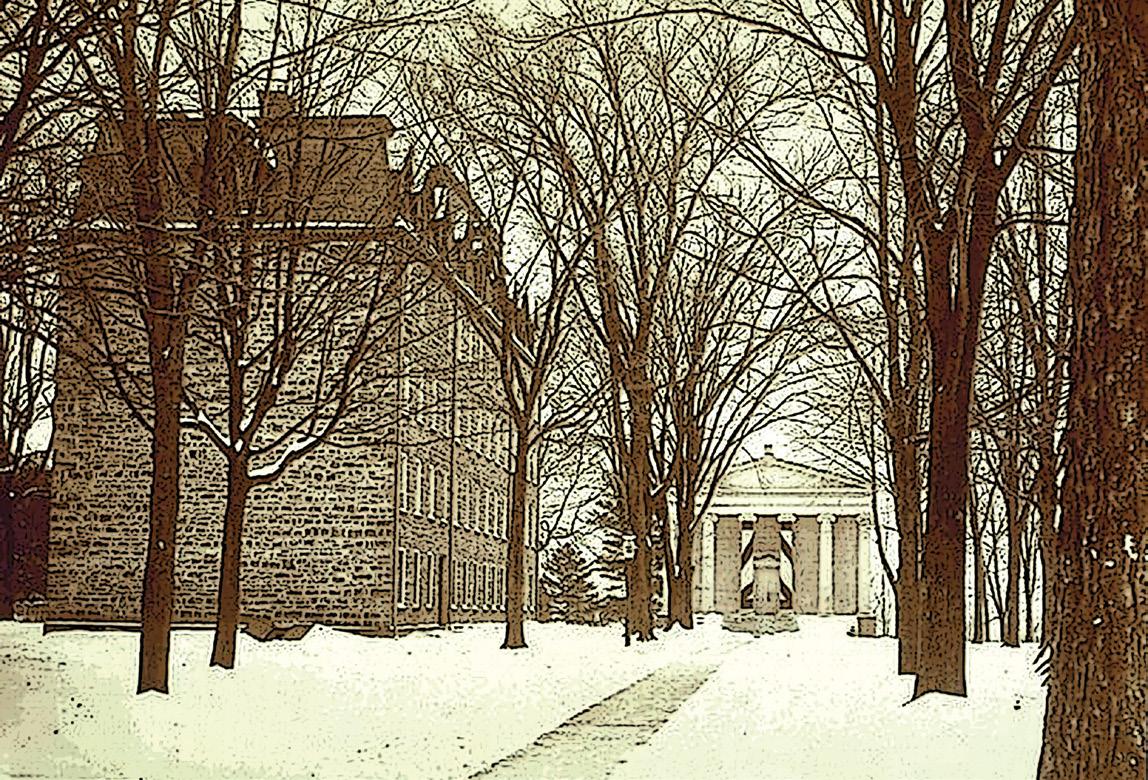
SEPTEMBER 2023 PRINCETON MAGAZINE | 31
Distant view of Whig Hall, with East College, left, c.1886. (Princeton University. Property of the Trustees of Princeton University)
Spotlight Q&A with Bart Bronk, Head of School at The Hun School of Princeton
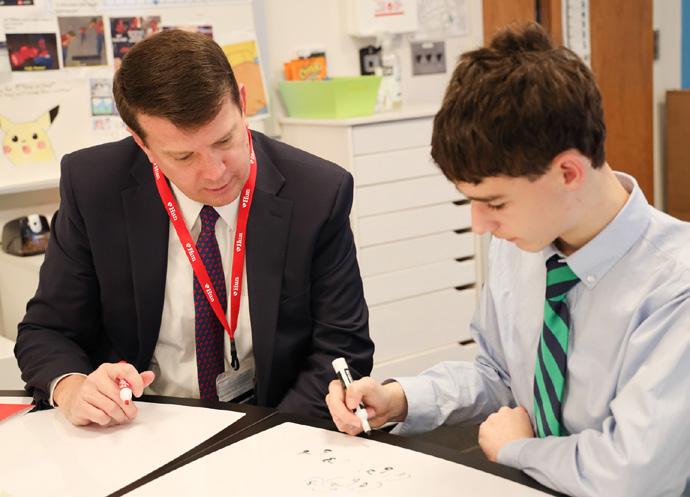
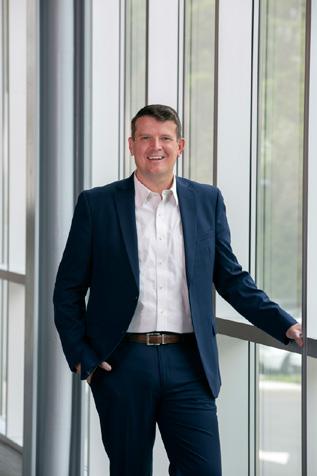 Interview by Laurie Pellichero
Interview by Laurie Pellichero
What drew you to The Hun School?
What drew me to Hun initially was its mission. An independent school that is willing to enshrine “joy” in the mission? That was very compelling to me. I was also very attracted to the deliberate word choice of “vigor” rather than the oft-chosen word “rigor.” Hun’s lived ethos, which was confirmed in my very first visit, was something I already believed in deeply. I was also attracted to a school that is thriving. When a school is struggling, there is certainly fulfillment in helping it get back on track. But when a school has a strong foundation, you get to dream big and think about just how far you can go. This is also the part of the world I consider home. Having grown up in Burlington County and spent my formative years in and around the city of Philadelphia, it is wonderful to be back.
What will be your focus this academic year?
The goal is really about learning. I want to take the time to really get to know Hun, particularly through the eyes of our students. For instance, I will spend an entire day shadowing a different student in each of our seven grades, this fall. The next step will be looking at programs individually to ensure that we are living our mission in every possible way and in everything we do. For instance, we know we’re doing it in the really big ways. But are there programs that need help visualizing how to expand their definition of mission-aligned? And if so, what support and resources do they need to get there?
What is unique about The Hun School experience?
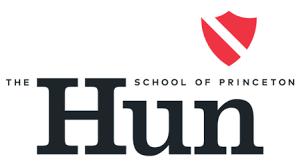
The Hun School is widely known for its culture and community. That promise revealed itself to me day one and repeatedly since. It’s the kind of culture that runs deep, built over decades. The kind where when you spend time with someone you feel the sincerity in their interest. As a parent, that feels really good. But as an educator, it’s thrilling. Research is very clear about the power of sincere kindness and belonging in the classroom: when kids feel safe, supported, and known, they are more motivated, they take more academic risks, and, ultimately, they can achieve incredible things.
The other thing I have noticed is that real-world learning is more than buzz here. Classes are active,
hands-on, and almost always rooted in real-life objectives. Students believe what they are doing matters and so they are more invested as a result. That’s nowhere more apparent than in the Next Term program, a mini-semester where students immerse themselves in big, real-world ideas across the region, the nation, and indeed the world.
What are Hun’s plans for the future? What big projects are on the horizon?
There are more students who want to attend Hun than space will allow. So, in Admission, our focus is meeting as many students as we can, evaluating their capacity to contribute meaningfully to our community, and their sincere desire to make the most of their experience.
We are also really excited about our plans to break ground on a brand new, 42,000-square-foot residence hall in June. The boarding program that is at the heart of our school creates a sense of warmth and community that all our students can feel, and this new facility will truly be a crown jewel of resident life.
Related to those objectives is fundraising. Gifts to the school will support the construction of an extraordinary new residence hall, allow us to provide the best possible experience for our students, and help us reduce the tuition barrier for as many families as possible.
What are the most pressing issues in education today? What should school leaders be thinking about?
That is simple — students today need educators who are highly attuned to their emotional needs. As an institution we excel in this area, but needs are ever evolving and we must be very intentional about the social and emotional health of our students. “Whole-child” education is no longer a buzzword, nor can it be a byproduct of good schools. It must be an imperative, so that when our graduates leave our halls they do so as happy, healthy, and resilient young adults.
32 | PRINCETON MAGAZINE SEPTEMBER 2023
PHOTOS COURTESY OF THE HUN SCHOOL OF PRINCETON
Bart Bronk
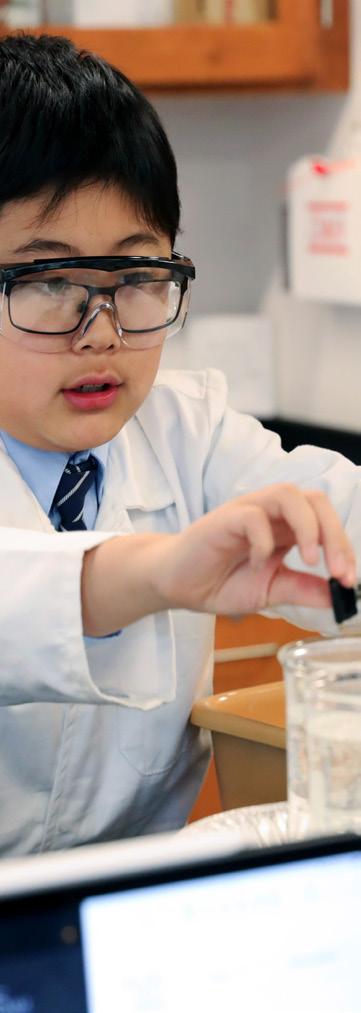
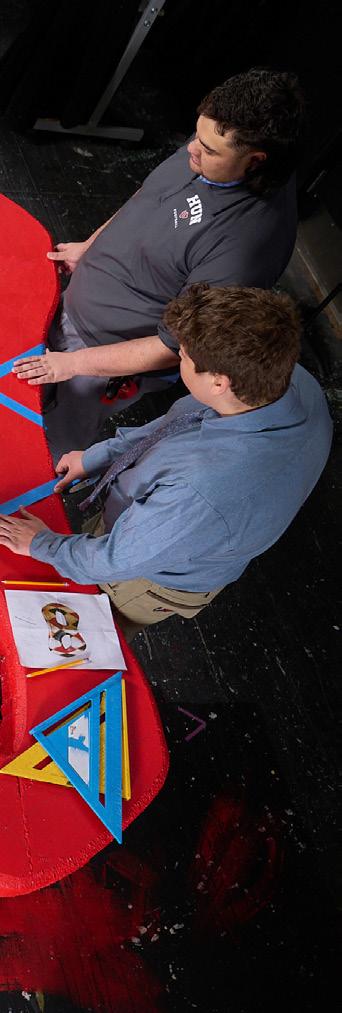


Chase curiosity, attempt anything, discover balance… Find your heart at Hun. The Hun School of Princeton is an all-gender, private day and boarding school in Princeton, New Jersey. Innovative, high-powered academics, student mentorship, and a joyful learning environment are the hallmarks of the School. On the 50-acre campus between Philadelphia and New York City, creative coursework and cutting edge programs like NextTerm prepare students for the global community in which they will live and work. The Hun School has 650 students in its Middle School, Upper School, and Postgraduate Program. Our campus is home to students from twenty-two countries and thirteen states. To apply or learn more, visit hunschool.org or call (609) 921-7600 UPCOMING OPEN HOUSE • SUNDAY, OCT. 15TH AT 10:00 A.M.
Spotlight Q&A with Marissa Muoio, Ed.D., Head of Upper School, Stuart Country Day School of the Sacred Heart
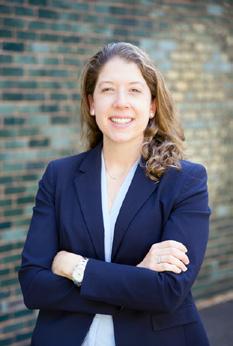
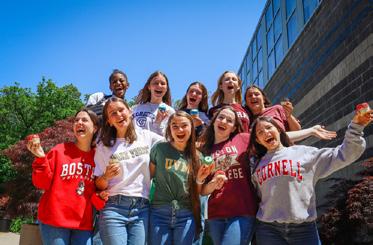
 Interview by Laurie Pellichero
Interview by Laurie Pellichero
Why do you think girls — especially high school-aged girls — need an all-girls environment?
As a product of an all-girls’ education myself, I firmly believe that an all-girls environment provides a unique and empowering space for high school-aged girls to thrive. This environment allows them to focus on their studies and personal growth without the distractions and pressures often present in coeducational settings. In an all-girls school like Stuart, students can explore their interests, express themselves freely, and develop their voices in a supportive and collaborative community. As a result, girls tend to be more self-assured, academically engaged, and confident in their abilities. Without the influence of gender biases, they are more likely to take on leadership roles, excel in traditionally male-dominated fields, and develop the skills needed to thrive in the 21st-century world.
How do all-girls schools like Stuart prepare young women for the ever-changing world?
All-girls schools like Stuart foster an atmosphere where girls are encouraged to take risks, pursue leadership roles, and excel academically. By removing gender stereotypes and biases, all-girls schools create an environment where girls can fully engage in subjects like science, technology, engineering, and mathematics (STEM) without feeling overshadowed or marginalized. For 60 years, Stuart has fostered an environment that encourages critical thinking, collaboration, resilience, and empowers students to pursue their passions without limitations. Through rigorous academic programs and experiential learning opportunities, our students gain the skills necessary to adapt and excel in an increasingly complex and interconnected global society. Our program — which is rooted in over 200 years of Sacred Heart educational tradition — emphasizes leadership, empathy, and social responsibility and equips our students with the tools to become change-makers and problem-solvers. By encouraging them to voice their opinions, engage in meaningful discussions, and contribute to their communities, we instill a sense of agency and purpose that will serve them well as they navigate their futures.
Why is having a spiritual core essential to leadership development?
A spiritual core is essential to leadership development because it provides a foundation of values, ethics, and a deep understanding of one’s purpose. Leadership is not just about holding positions of authority; it’s about influencing and inspiring others toward positive change. A strong spiritual core helps young women develop empathy, compassion, and a sense of responsibility towards others. It encourages them to lead with integrity and to make decisions guided by a strong moral compass.
At Stuart, we integrate our five core Sacred Heart values into our leadership development programs. This spiritual foundation empowers our
students to lead with authenticity, humility, and a commitment to serving others. In a world where ethical leadership is needed more than ever, our graduates are well-equipped to navigate challenges with grace and contribute to the betterment of society.
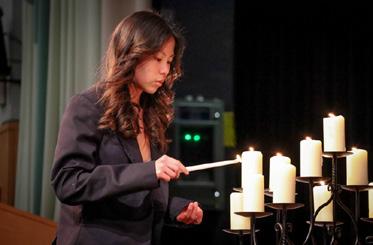
What is the Leadership Endorsement Program offered to students through the National Center for Girls’ Leadership?
The Leadership Endorsement Program is a comprehensive initiative designed to equip students with the skills and mindset necessary for effective leadership. This program focuses on building self-awareness, communication skills, problem-solving abilities, and the capacity to lead with empathy and authenticity. By providing resources, workshops, mentorship, and experiential learning opportunities, the program empowers young women to become confident and capable leaders in their schools, communities, and beyond. There are four different endorsement tracks that students can choose from: Arts and Humanities, Business and Entrepreneurship, STEM, and Social Justice. Over the past two years, we have worked extensively to develop a research sequence within the endorsement program to ensure that students have the skills and confidence to pursue research opportunities at the undergraduate level no matter what field they enter.
Explain the personalized academic approach of the Upper School’s Advisory Program.
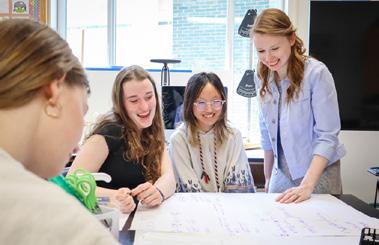
Stuart’s Academic Advisory Program is a cornerstone of our commitment to personalized education. Each student is assigned a faculty advisor who serves as a mentor, guide, and advocate throughout her high school journey. Advisors work closely with students to set academic goals, address challenges, explore extracurricular opportunities, and ensure overall well-being. This one-on-one relationship fosters a strong support system that promotes academic excellence, personal growth, and a sense of belonging within the school community. In addition to our advising program, over the past two years we have engaged with and administered a survey tool that has helped us to quantify belonging within our school community and work toward the systematic identification of student-adult trusted relationships within the school community.
Does Stuart offer mentorship opportunities to students?
Yes, our mentorship programs connect students with accomplished professionals and alumnae who share their expertise and experiences in various fields. These relationships provide students with insights, advice, and networking opportunities that help them make informed decisions about their future career paths. Mentorship at Stuart is a vital component of our commitment to empowering young women to achieve their aspirations.
34 | PRINCETON MAGAZINE SEPTEMBER 2023
PHOTOS COURTESY OF STUART
DAY SCHOOL OF THE
Marissa Muoio
COUNTRY
SACRED HEART
Celebrating 60 years of unStoppable women
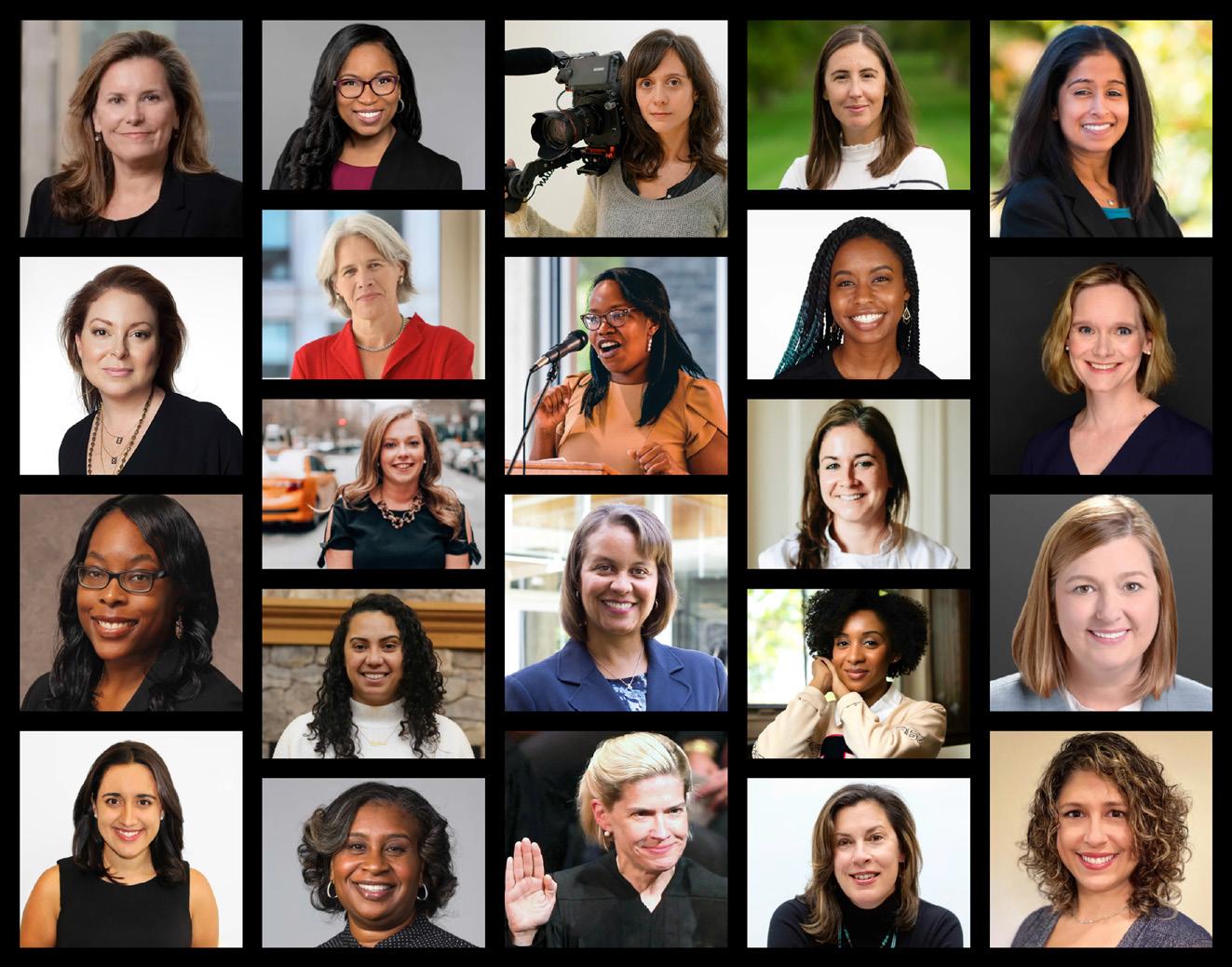
Empowered by a legacy of over 200 years of Sacred Heart education, Stuart graduates emerge as compassionate leaders with the skills, self-awareness and determination to shape a better world. Scan the code below to meet some of our exceptional Stuart Country Day School graduates.





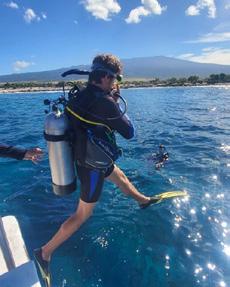
SO MUCH TO SEE, SO MUCH TO LEARN
Gap Years Take Off, and Not Just for Pre-College



 BY WENDY GREENBERG PHOTOS COURTESY OF CENTER FOR INTERIM PROGRAMS
BY WENDY GREENBERG PHOTOS COURTESY OF CENTER FOR INTERIM PROGRAMS
Within about 10 minutes of chatting with Holly Bull and Kate Warren, you begin to think about all the experiences you want to have, all the places you want to go, and how you can realize what you always thought was beyond your time constraints and logistical ability. You make a note that when ready, you will call Holly and Kate.

Bull is president of the Center for Interim Programs, based in Princeton, and Warren is the director of research and cocounselor at the center. To date they have sent 8,843 students happily packing (some needing a nudge), and lately, many adults who have the time, but not the place.
Bull and Warren find the places. Among them: an elephant sanctuary in Thailand; a dog rescue center in Peru; an animal conservation site in New Zealand; a sports coaching stint in South Africa; SCUBA certification and research in Belize and Madagascar; nature reserve volunteering in Ecuador; farm-totable sustainable living in New England; natural disaster relief work in Puerto Rico; an organic farm and community center in Hawaii; and filmmaking, ceramics, guitar building and web design — just to name a few of the countless possibilities.
SEPTEMBER 2023 PRINCETON MAGAZINE | 37
Warren recalls a woman with two slightly different-sized feet who wanted to make her own shoes. She was able to find a cobbler in Italy for her to study under. “You’d be amazed,” says Warren, referring to what can be arranged.
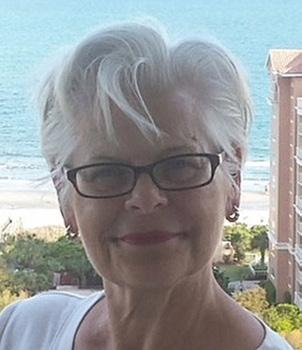
A 17-year-old male was skeptical of taking time off before college — unless he could study eusocial behavior in animals (specifically naked mole rats), which is marked by cooperative brood care and other characteristics. Unfortunately, naked mole rat research is reserved for graduate level students, but with a little research — voila! — the recent high-school graduate was selected for research open to rising college juniors and seniors in the U.S. Southwest working under a professor who had been studying the same ant hills for more than 30 years. “This one was my greatest challenge,” says Warren.
The “gap year” has become part of a national conversation among high school students before they enter college — which Bull attributes in part to Malia Obama deferring Harvard for a year in 2016 to travel and work — but it has been mainstream in Europe since 1960s.
The Wall Street Journal, in April 2022, stated in an article posted on the Center’s website that “rising rejections at highly selective colleges and hopes for better luck in a year are pushing more seniors to take a yearlong pause after high school. ” The nonprofit Gap Year Association estimated that for the 2020-21 academic year, 130,000 students took gap years, many of them deferring enrollment. The article notes an increase of between 40,000 and 60,000 students taking a gap year since before the pandemic.

In the article Bull tells of a client who reapplied to colleges after her gap year, with a refocused major, and was more pleased with her acceptances a year later.
Quoted in many articles, Bull defined gap year as: “a period of time where you explore areas of interest and locations, with intentionality, not as a tourist, and see where this learning process takes you.”

Bull, who has two post-gap year daughters, says she has worked in the field longer than any other gap year counselor, for more than 35 years, and did two gap years herself early on. Her father, Cornelius Holland Bull III, was a pioneer in the field. A teacher at the Lawrenceville School, where he graduated from in 1944, and then head of a private school in Sedona, Ariz., where service trips to Mexico and the Navajo Nation were part of the curriculum, he founded the Center for Interim Programs in 1980. Prior to the databases of today, he stored his collected ideas and suggestions in a shoebox.
Cornelius Bull, who died in 2004, was a member of the Class of 1948 at Princeton University. Before receiving a master’s degree in 1960 from the University of Virginia, he was a history teacher, housemaster, and wrestling coach at Lawrenceville, as well as headmaster of Robert Academy in Istanbul, Turkey; the American International School in Vienna Austria; and St. Mary’s Hall in San Antonio, Texas.
Not surprisingly, his daughter Holly Bull volunteered at an aquaculture research institute in Hawaii and attended an academic cultural study program in Greece during her first gap year. This led to an “appreciation for learning for its own sake without the pressure of tests and grades,” and the helpful realization that she did not want to be a marine biologist, she says.
As a rising college junior, she took a second gap year to travel in India and Nepal, attend a semester program in Athens, and engage in service work in Appalachia. She received a bachelor’s degree in anthropology from the University of Virginia, and joined her father in the business. She also directed the U.S. office for her original program in Greece, and eventually completed a master’s degree at Harvard Graduate School of Education. She has continued to sample programs, including a wilderness survival skills school, a humpback whale research project, dude ranch work, and a yoga teacher training course.
GAP YEAR RESEARCH
Many returnees tell Bull that their gap years have matured them and made them better students. There is research to support this. Admissions professional Robert Clagett, former Middlebury College dean of admissions, found that gap year students tended to outperform peers in college, with the positive effects lasting over the entire four years.
When Bull presented a gap year panel for National Association for College Admission Counseling with Mark Hatch, vice president for admissions at Colorado College, he stated that their gap year students had higher grade point averages, and
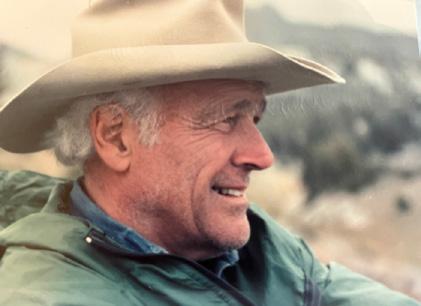 CORNELIUS BULL
KATE WARREN
CORNELIUS BULL
KATE WARREN
(photographs courtesy of holly bull) 38 | PRINCETON MAGAZINE SEPTEMBER 2023
HOLLY BULL
males were outperforming non-gap year women. On every level, they are better students for the college, he said.
In a 2015 American Gap Association national alumni survey conducted with Temple University, gap year returnees were asked if their experiences had proven fruitful. Ninety-eight percent said they had developed as a person; 96 percent found the gap year increased their self-confidence; and 93 percent credited the gap time with their increased communications skills. Other responses were that gap years helped develop skills for more successful careers, an understanding of other cultures, and a sense of being a global citizen.
“There is some great data,” Bull notes. She addresses the myth that many “still think the gap year is just for people who have problems — people will forget how to learn or get derailed from a planned college education.”
She contends that gap year students “are better students, more refreshed. They have a sense of relevance of their studies to the world around them, and personal power derived from practicing choosing and owning what they are up to.”

FINDING THE RIGHT PROGRAMS

In finding the right programs for this personal growth, Warren, the director of research, keeps an eye out for transparency, legitimacy, and competency. “You don’t want to have to dig for contacts, corporation information, etc. And if all passes, more has to be done – true due diligence takes 8-10 hours,” she says.
A former court stenographer for a maritime arbitrator, Warren wanted to find a job in Princeton and came to work for a firm that did psychological testing. Her neighbor in Princeton was Holly Bull. One day, digging weeds, they got to talking. And 22 years later, Kate is still helping make dreams come true.
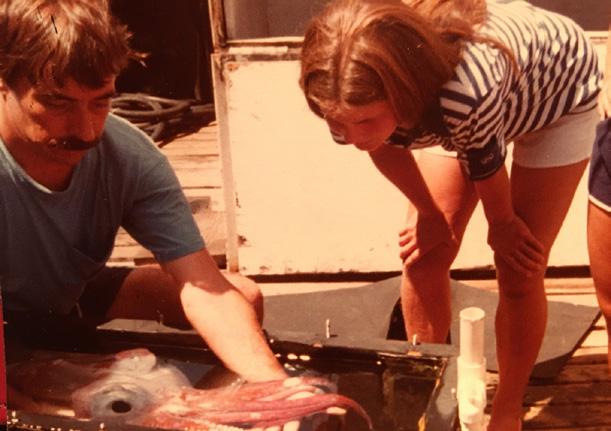
“I worked with a doctor who was turning 60,” she says. “I said, ‘What’s your dream?’ He said, ‘To be in Nepal with an Eastern medicine doctor and discuss homeopathic medicine.’ He did that. Next, he said he wanted to work with a backhoe. We
had a contact in Alaska building a house who said, ‘send him up.’ He learned stone masonry, went to Romania and repaired an old castle wall, and wrote a book. Then he restored antiques in Lambertville. There’s so much you can do.”
Gap year programs tend to fall into four categories: facilitated group programs; skill-based intensives (certifications, structure, and support with a specific end goal); urban internships (typically abroad and a half-step into the working world); and volunteer options (like disaster relief).
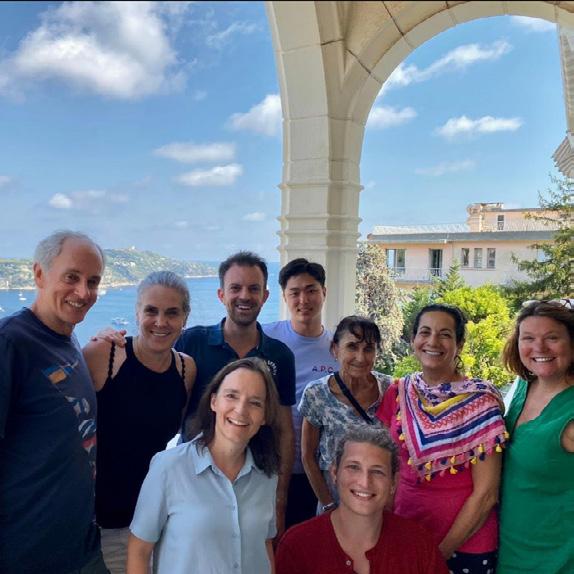
The Center develops a schedule, like this one they devised for Ford Brown, a student from Connecticut now entering college: June to August 2022 — local job; September to December — cultural study and travel in Spain with fellow gap year students. January to March 2023 — technology startup internship in South Africa; June to July — London School of Economics; August — start Harvard University.
 (photograph courtesy of holly bull)
(photograph courtesy of holly bull)
(photo courtesy of center for interim programs instagram) SEPTEMBER 2023 PRINCETON MAGAZINE | 39
(photograph courtesy of jennifer markowitz)
Brown says that initially he didn’t consider a gap year, but he was waitlisted from his first-choice college, which then informed him that there would be a spot in the next year’s class. So, he had time he had not expected.
“I am so grateful that this is the way it unfolded, as I wouldn’t have traded this year for anything and I still get to attend my first-choice college,” says Brown.
During the planning, he decided he wanted to be productive but also enjoy a break from school.
“To that end, Holly Bull and her team were invaluable in connecting me to a massive list of high-quality programs that I could talk through with her in order to find exactly what I was looking for,” says Brown. “I started in Spain for a break from traditional work and learning. I did three months of a ‘cultural immersion’ trip where I focused on refining my Spanish and learning about art and history. Then I worked at a Fintech firm in
Cape Town, South Africa, for a few months. I learned so much about myself and the world through this year.”

For anyone wavering, Brown’s advice is to go for it: “There are almost no other times in your life where you are presented with an opportunity as amazing as this. Definitely take it. It will be unforgettable. Be honest with yourself on what you are looking for, and go after it. It flies by so fast and you will be wishing you could start over. There is no rush to start college — you will still get a great four years.”

Hoping for a great four years is Robbinsville High School graduate Delaney McEvoy, starting her first year at the University of Miami after a gap year. Her mom first brought up the idea of a gap year as an opportunity to gain independence before college, and the Center for Interim Programs, recommended by a guidance counselor, was helping to finding programs, she says. Also, McEvoy had a “couple of majors in mind” and wanted to narrow her interests.
Deferring her college acceptance, she embarked on a plan that included first spending 10 weeks in Fiji in a shark conservation program, where she gained her Open Water and Advanced SCUBA certifications. She went on survey dives, shark dives, did mangrove reforestation work, and planted seedlings in the community.
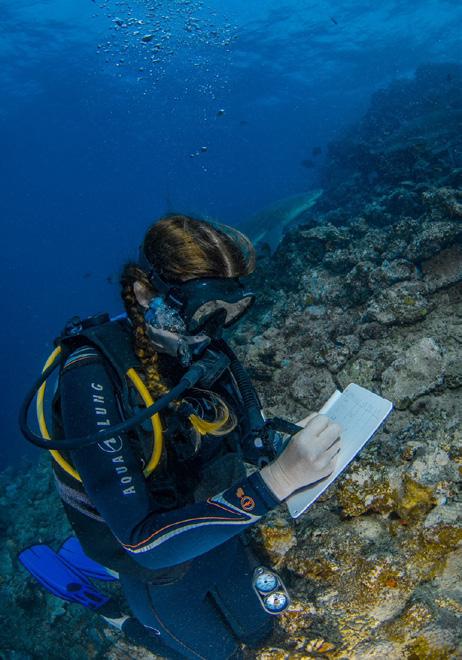
Following Fiji she spent four weeks at the New York Film Academy taking classes in acting for film and musical theater, having been in stage productions in high school. She was able to live with relatives, and got to appear in student films.
After New York City she again crossed an ocean, spending 10 weeks in South Africa in a primate rehab center, a game reserve, and a marine conservation program.

40 | PRINCETON MAGAZINE SEPTEMBER 2023
(photo courtesy of center for interim programs instagram, delaney mcvoy)
“I got trained to lead whale watching boats while I was there, which was fun,” says McEvoy. “I always love being on the water, so I really loved days when we did data collection on the whale watching boats or when I lead tours.”
At college, McEvoy has shifted her marine biology interest to a broader environmental science major, and will minor in cinematic arts.
“I was skeptical at first [of the gap year]. All my friends were going to college, and I would be a year behind,” she says. “But I loved it. I am more excited and interested in college now.”
She says she feels more confident now and feels college will be “less nerve-wracking.”
OFF THE CAREER TRACK
For P.K. Prasanna, who is close to retirement, a 2019 gap year was so gratifying that the technology and marketing executive is considering another one.
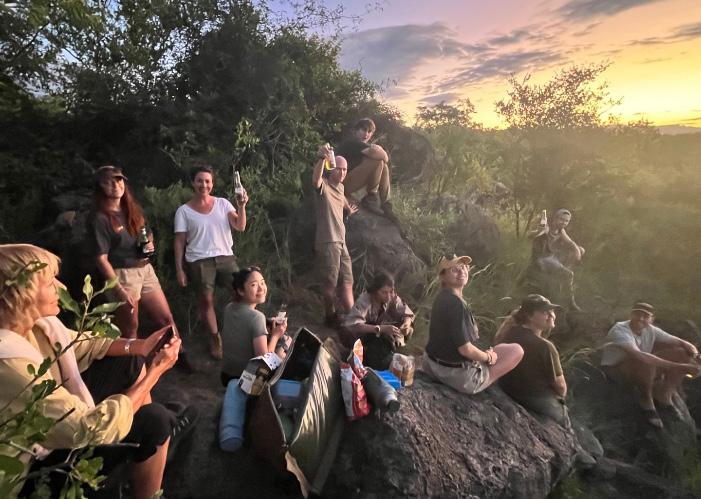
Bull is seeing more and more adult gap year clients. She said in the Washington Post in 2021, “It’s a chance for people to discover parts of themselves sidelined by career and family life.”

Prasanna said his objective was “to rediscover other


dimensions of myself, travel, and pay attention to all the other things that one usually has no time for in the midst of a hectic always-on world.”
His first gap year was focused on solo travel, and now he is “weaving in slow travel with my wife while I take a more serious stab at becoming a writer.”
Before his first sojourn, he told Bull he wanted the themes of play, spirituality, and writing, with some service. He traveled to Zen monasteries near Kyoto and blogged about his trip for family and friends.
“I would highly recommend a gap year,” says Prasanna, who took a risk because there was a financial impact, as his firm did not offer sabbaticals. “That said, it was super-enriching to rediscover different dimensions of myself and reconnect with family in the process. I had originally expected an epiphany of some sort maybe, but was rewarded with a more gentle contentment.”
He advises thinking carefully about your “guiding themes” and says to “keep the focus on strengthening your non-work areas and that will be rewarding. Also do it sooner rather than later. If I had waited another few months, I would have hit COVID.”
SEPTEMBER 2023 PRINCETON MAGAZINE | 41
Mid-career gapper Jennifer Markowitz of New York City
(photo courtesy of center for interim programs instagram)
Wake up to better, healthier sleep.

As part of our holistic health approach, we use specialized technology to screen every patient for sleep-related breathing disorders that may signal dangerous health concerns.
To treat these issues, we offer customized solutions to help stabilize the airway, improve quality of life, and protect good health.
We encourage you to Google “Princeton Center for Dental Aesthetics and Implants” and read some of the hundreds of HHHHH reviews from our patients who say things like “I wish I found this dental practice sooner” and “this was the best experience I’ve ever had with a dentist.”
We welcome your inquiries and look forward to meeting you soon.
Snoring, grinding or clenching may indicate serious health hazards that we’re trained to treat successfully.
Kirk D. Huckel
• Kiersten Huckel DMD • Shanni Reine-Mutch DDS* 609-924-1414 • www.PrincetonDentist.com • 11 Chambers Street, Princeton, NJ *Member: American Academy of Dental Sleep Medicine
DMD, FAGD
Spotlight on Princeton Academy of the Sacred Heart
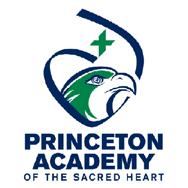



“At Princeton Academy, each boy is known, valued, and cared for; he is part of a community that supports his development as a student and his spirituality and character as a citizen of the world,” shares Head of School Rik Dugan.
Every day begins with the Morning Handshake, which is a genuine acknowledgement of the light in another. When this is the norm, a boy grows up to be a man who cares about others. The school’s mission is to develop young men with active and creative minds, a sense of understanding and compassion for others, and the courage to act on their beliefs. In today’s context, this mission becomes a cause to educate boys to be compassionate men who seek not only social justice but also nonviolent, peaceful conflict resolution. In our current context of uncertainty, Princeton Academy has clarity of mission and precision of purpose. We know who we are, we know what we do and why we do it, and we know who we serve.
As a school community, we are constantly asking ourselves the following questions: How do we create safe and healthy learning environments?; How do we protect our boys’ physical and emotional well-being and nurture boys’ wellness?; How do we challenge, inspire, and support our young men to become the best version of themselves?; How do we ensure that our young men grow up to be loving, caring, kind, and compassionate human beings as part of their character?
“It is crucial that boys find the good within themselves at the earliest of ages because this is the foundation for the men they will become,” Dugan says. “We do not take this formation lightly and we are committed to seeing each boy through his life journey — standing beside him shoulder-to-shoulder — knowing that this sense of belonging and community will last him a lifetime. Princeton Academy is forever home to our alumni.”
Princeton Academy educators provide an inspired, hands-on, and joyfilled curriculum that motivates and challenges students to engage in learning at a high level. In addition, boys grow through intentional programming centered on wellness, mindfulness, diversity, equity, and inclusion.
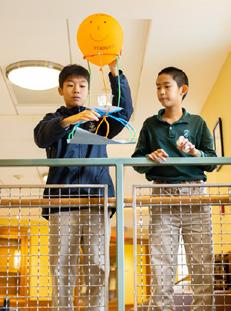
We believe in young men and when a boy is believed in, #HeCanBe. #HeCanBe means that he can be anything he wants to be — he is the
captain of his own ship, and the future is his to create. #HeCanBe also means that he can just “be.” This is at the core of our approach to the social-emotional wellness of boys. There are not many places where a boy can just “be.” At Princeton Academy, we strive to create a safe space where #HeCanBe. In doing so, our young men develop in a physically, socially, spiritually, and emotionally healthy manner.
We are devoted to nurturing, developing, and strengthening young men in mind, body, and spirit. By focusing on the interior formation and character development of young men, we work with joy and intentionality to ensure that our students are whole, not hollow, and that they lead lives of meaning and purpose.

Whether it is through articulating gratitude publicly every Friday in our community-wide tradition of Friday Thank Yous, thinking through ethical dilemmas on our Ethics Bowl Team, articulating their viewpoints in Speech and Debate, or shining onstage or backstage in our Theater Arts Program, our young men develop skills to express themselves in healthy, caring ways.
At Princeton Academy, young men grow through healthy competition in our athletics program which consists of nine interscholastic sports. Every young man participates in both the visual and musical arts. Students are well-rounded leaders who are encouraged to dive deeper into things they are already passionate about while discovering new interests and passions as they journey through their Princeton Academy experience.
Princeton Academy students are admitted to the finest secondary schools in the world. Through individualized guidance during the secondary school placement process, our students matriculate to schools where they will contribute, lead, and thrive.
Through the Sacred Heart Goals and Criteria and our Learning Principles for Boys, we develop young men to be creative, compassionate, and courageous leaders of a just society. Above all else, we want our young men to be happy, healthy, and positive contributors to our world, seeking to improve the lives of others in some meaningful way. A Princeton Academy education is both transformational for an individual young man and for our world.

44 | PRINCETON MAGAZINE SEPTEMBER 2023
PAID ADVERTISEMENT
PHOTOS COURTESY OF PRINCETON ACADEMY OF THE SACRED HEART
We cannot wait to meet your son!
Looking for the best K-8 school experience for your son?



Applications are now open! Visit Princeton Academy at a fall Open House on October 14 or November 18!


All that we do is premised on bringing out the best in boys. We understand how important it is to create a positive association with learning as early as possible in a boy's developmental journey. Princeton Academy ensures today's boys become the best version of tomorrow's men. #HeCanBe
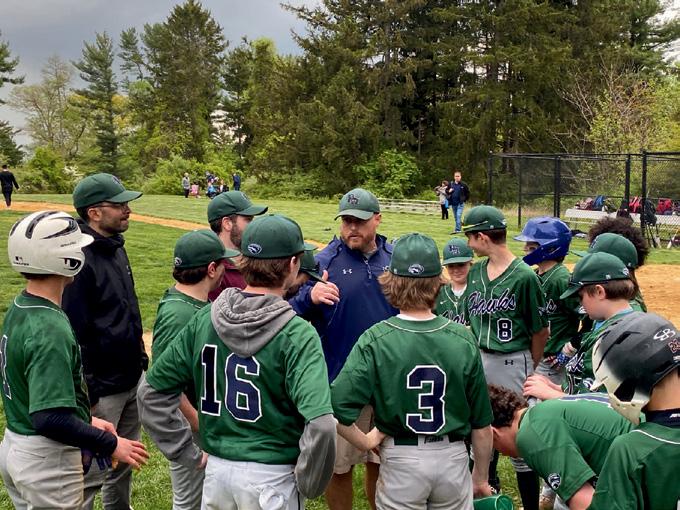
We bring out the best in boys...
CATS AS ART AND ARTIST, CHARACTER AND CREATOR


 BY STUART MITCHNER
BY STUART MITCHNER
I’mlooking at two photographs. In one my father is sitting with our first cat on his lap, a Siamese male named Kiloo, pronounced “kee-oo.” The small, framed photo occupies a shelf on this desk with an unframed one of me half a century later slouched on the living room sofa with our tuxedo cat, Dizzy, on my lap. Kiloo is poised, as if planning another attack on the clawed-to-rags arms of the living room sofa. Not Dizzy. He’s the picture of contentment, one big white “this-is-mine” paw on my leg. I thought of Kiloo as soon as I opened The Big New Yorker Book of Cats (Random House 2013), where the first thing you see is a fullpage color photograph of the cat-clawed arm of a sofa — minor damage compared to the havoc wreaked by Kiloo.
THE FIRST BOOK
Since anthropomorphic “funny-animal” cats are never major players in the Walt Disney and Classic Comics that were my favored reading material during the reign of

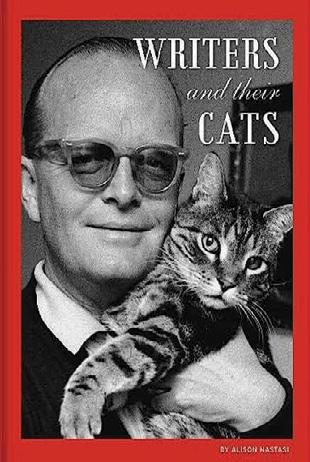
Kiloo, my first cat-centric reading experience would have to have been Freddy the Detective by Walter R. Brooks (Dell Yearling 1979), which I read in a used 1950s edition. Although Freddy, the well-read pig, is the hero, the character who steals the show is Jinx the cat, who plays Huck Finn to Freddy’s Tom Sawyer. Jinx also lives up to the jazz world image of “cat” as the epitome of cool, which is the reason our Dizzy was named for Dizzy Gillespie.
CATS AS ARTISTS
Discussing Jessica Maddox’s The Internet Is for Cats: How Animal Images Shape Our Digital Lives (Rutgers University Press paperback 2022) in a June 22 New York Review of Books round-up of recent cat books, Gregory Hayes suggests that while dogs “strive untidily for greatness” like Picasso and Beethoven, cats are “sensitive, precise, in love with nuance,” characteristics that make Hayes think of Klee and Ravel when he’s actually describing qualities I associate with the writing of Ernest Hemingway. Forget the macho stereotype (in one of my favorite photos, Papa is cuddling a tuxedo cat that could be Dizzy’s second cousin 50 times removed), all you have to do is read short stories such as “A Clean, Well-Lighted Place” (not to mention “Cat in the Rain”) and you appreciate Hemingway’s understanding of cats and the way they navigate the world.
The most obvious challenge to the
whole dog-cat-as-artists idea is that the truly great creators and stylists have qualities in common with both animals, as well as a variety of others, from owls to mountain lions.
CATS AS CHARACTERS
Cat owners have often named their pets for fictional characters. When I was still living with my parents, an instantly lovable marmalade shorthair came to us already named Sam, who soon was sharing his Puss’n Boots cat food with a delightfully quirky tabby stray we named Penrod, an homage to Princetonian Booth Tarkington’s Penrod and Sam. Thomas Hardy’s Tess of the D’Urbervilles gave us the perfect name for the pregnant outcast who delivered Dizzy, the runt of a litter of five. Still trying to cope with Dizzy’s untimely death at 12, we adopted newborn brother and sister tuxedos we named after the effervescent couple from the Thin Man movies, Nick and Nora Charles.
| BOOK SCENE
46 | PRINCETON MAGAZINE SEPTEMBER 2023
NORA AS MIGNON
I thought of Nora when I saw the late Susan Herbert’s illustrations in Cats Galore Encore: A New Compendium of Cultured Cats (Thames and Hudson 2021), whose cover features a self-portrait of a bandaged ginger Vincent Van Gogh. A still more fetching example of Herbert’s art is the feline version of Vermeer’s Girl with a Pearl Earring on the cover of Cats Galore, the first compendium, published after Herbert’s 2014 death, with selected works from a series that began in 1990 with The Cats Gallery of Art

Nora would never sit still for Vermeer, at least not in her wild youth when she was capable of astonishing acrobatics, sliding down the banister and once attempting to swing from a chandelier. In her mellower and more lovable later years, she inspired thoughts of an imaginary 19th-century portrait, with Nora crouched at the feet of Franz Schubert as he composed, gazing up at him as if he and the world were one. I mention Schubert because she made an irresistible match with Johann Wolfgang von Goethe’s creation Mignon, the subject of some of Schubert’s most beloved lieder. “In her whole system of proceedings,” Goethe writes, “there was something very singular. She never walked up or down the stairs, but jumped. She would spring along by the railing, and before you were aware would be sitting quietly above upon the landing.... She was frolicsome beyond all wont.”
VAN VECHTEN’S BIBLE
The Tiger in the House: A Cultural History of the Cat (New York Review


Classics 2007) by novelist, critic, and photographer Carl Van Vechten (1880-1964), was first published in 1920 and reprinted many times. Arguably the bible of cat literature, this big, lavish, scholarly volume has been called “the best single treatise on the cat” and “a treasure house of literary gossip.” Like so many of my books, this one, the 1936 edition, has passed through the secondhand bookstores of Manhattan and therefore embodies three of my favorite things — cats, used bookstores, and New York City.

NEW YORK CATS
Cats in the city are popular subjects. Felines of New York (Simon &Schuster 2015) is presented by Jim Tews in the style of Brandon Stanton’s wildly popular series Humans of New York. In Shop Cats of New
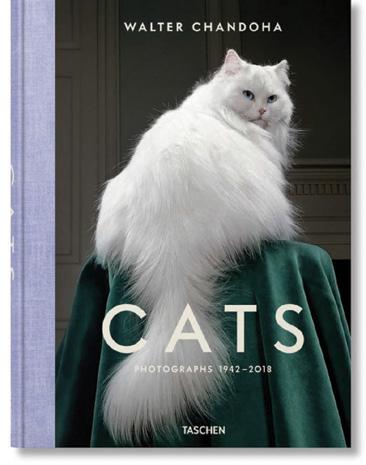
York (Harper Design 2016) by cat blogger Tamar Arslanian and photographer Andrew Marttila, the shops include Bleecker Street Records, where Keetah, the cat on the book’s cover, is shown lounging atop bins of blues LPs in “the relative solitude of her basement lair where she retreats for peace and quiet among the vintage vinyl.”
ALWAYS GREAT GIFTS
On the subject of cat books as gifts, the first that comes to mind is Alice Muncaster and Ellen Yanow’s The Cat Made Me Buy It!: A Collection of Cats Who Sold Yesterday’s Products (Three Rivers Press 1984), which includes 116 full-color photographs of cats appearing in scores of different ads and promotions created over the previous century. We’ve owned the paperback edition of this charming
SEPTEMBER 2023 PRINCETON MAGAZINE | 47
book for the better part of 30 years, which probably explains why I can’t find our copy. Never, ever would we throw it away or sell it, perish the thought, but if I don’t stop searching, I’ll never finish this article. At least we can include an image of the cover.
The Book Of The Cat (Laurence King 2017) makes a great Christmas present, as one Princeton Magazine staff member can attest. By Angus Hyland, a partner at Pentagram Design London, and Caroline Roberts, a journalist and author, it offers,
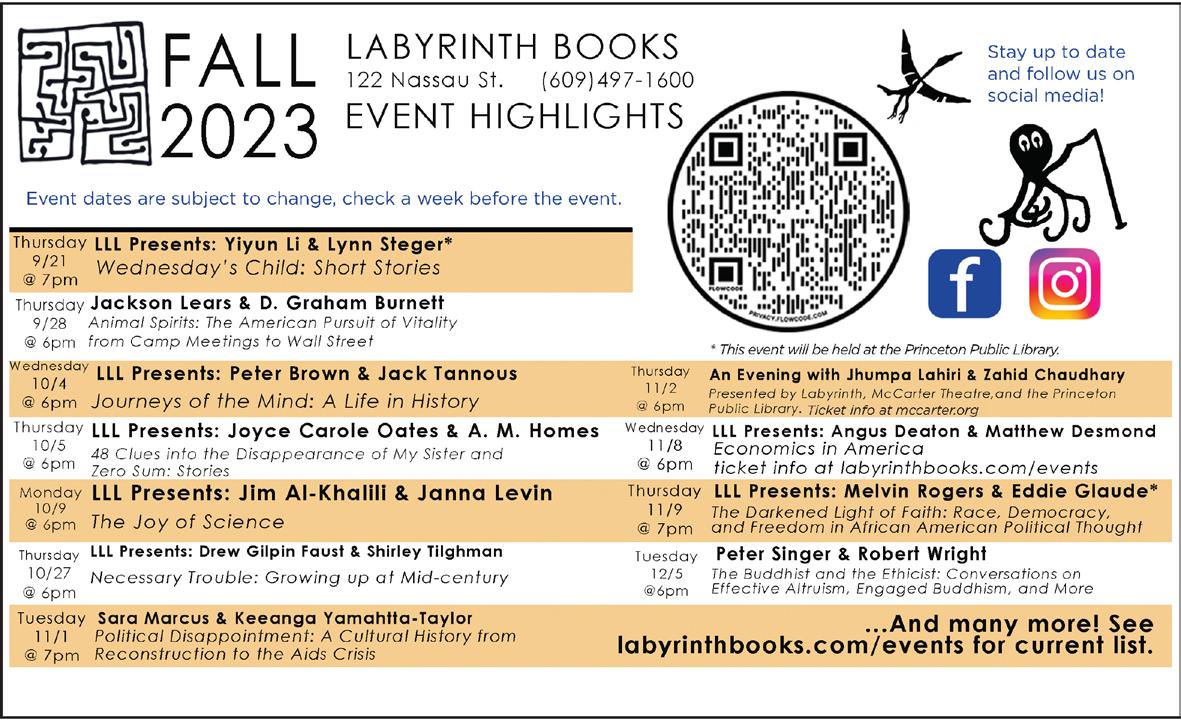
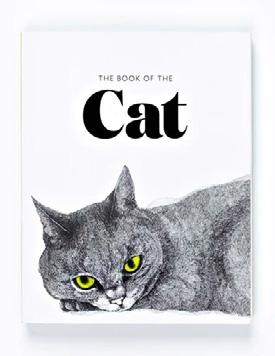
according to Barnes and Noble, “a cool and quirky collection of feline art and illustration by artists from around the world.”
In the Company of Cats (British Library 2014) showed up under the Christmas tree at our house some years ago and has been a family favorite ever since. Thanks to the whimsical Louis Wain cover image of two cats in nightshirts having a pillow fight, it’s been on display in the living room, a cheerful reminder of what life was like in the early years of Nick and Nora, though Nick, who died in 2018, was never a match for his sister when it came to terpsichorean antics. Over the past week, the third anniversary of Nora’s death, the book has been on my bedside table. The page I
go back to most often is headed “Tableaux Parisiens,” or Baudelaire’s Cat, an etching from Les Fleurs du Mal showing a man and a cat gazing out a window together at a smoky panorama of Paris. It doesn’t matter that the view from the window Nora and I were looking through was simply a Princeton cul de sac. Winter or spring, summer or fall, whether watching a few flurries of snow, or falling leaves, she’d be perched on one or another of the various books I’d left on the chaise, as often as not the one I was reading or writing about.
Additional Reading: Writers and Their Cats and Artists and Their Cats by Alison Nastasi.
Artful Cats: Discoveries from the Smithsonian’s Archives of American Art by Mary Savig.

The Book of the Cat: Cats in Art by Angus Hyland and Caroline Roberts.

Choupette by Karl Lagerfeld. Cats: Photographs 1942-2018 by Walter Chandoha, Sarah Wrigley, et al.
The Lion in the Living Room: How House Cats Tamed Us and Took Over the World by Abigail Tucker.
48 | PRINCETON MAGAZINE september 2023
Pennington
Pennington
Pennington
Pennington
Premier
Pennington Premier Early Childhood Education 6O9.737.1331 Music-Spanish-Outdoor Education















Music-Spanish-Outdoor
“The
is both a hope
is both a hope and a promise for mankind.”
for
both
“The child is both a hope and a promise for mankind.”
“The child is both a hope and a promise for mankind.”
Accepting
is both a hope and a promise for mankind.” www.penningtonmontessori.org admissionsinfo@penningtonmontessori.org
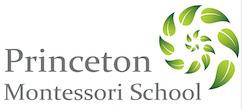


Accepting Applications

PRINCETON MAGAZINE | 49
Montessori School
Early
Education
Childhood
Now Accepting Applications
Montessori School
Premier Early Childhood Education Now Accepting Applications
Montessori School Premier Early Childhood Education
Pennington
child
and a promise for mankind.”
Montessori School
Early Childhood Education
Kindergarten
Curriculum
Premier
thru
Academic
Music-Spanish-Outdoor Education
Montessori School
Early Childhood Education thru Kindergarten Academic Curriculum
Premier
Music-Spanish-Outdoor Education
Call to schedule a tour! 6O9.737.1331
Montessori School Premier Early Childhood Education Call to schedule a tour! 6O9.737.1331 Pennington Montessori School Premier Early Childhood Education
Accepting Applications Education Visit us at www.penningtonmontessori.org to apply
a tour! 6O9.737.1331
Montessori School Premier Early Childhood Education thru Kindergarten Curriculum Music-Spanish-Outdoor Education
Applications
a hope and a promise for mankind.” Call to schedule a tour! 6O9.737.1331 Pennington Montessori School Premier Early Childhood Education thru Kindergarten Curriculum Music-Spanish-Outdoor Education
Applications
a
and a promise for mankind.” Call to schedule a tour! 6O9.737.1331 Pennington Montessori School Premier Early Childhood Education 6 Weeks thru Kindergarten Academic Curriculum Music-Spanish-Outdoor Education “The child is both a hope and a promise for
www.penningtonmontessori.com admissionsinfo@penningtonmontessori.org Call to schedule a tour! 6O9.737.1331 Pennington Montessori School Premier Early Childhood Education 6 Weeks thru Kindergarten Academic Curriculum Music-Spanish-Outdoor Education Now accepting applications for the 2022-2023 school year. Visit us at www.penningtonmontessori.org to apply 4 Tree Farm Road, Pennington • www.penningtonmontessori.org admissionsinfo@penningtonmontessori.org Pennington Montessori HP edited FINAL.indd 1 8/16/23 9:29 AM Montessori makes a difference. Programs for Infants - 8th Grade • princetonmontessori.org • 609-924-4594 THRIVING
“The child is both a hope and a promise
mankind.”
Pennington
Accepting
both
hope
mankind.”


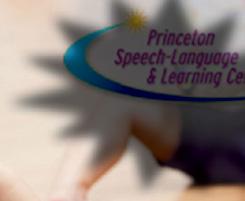




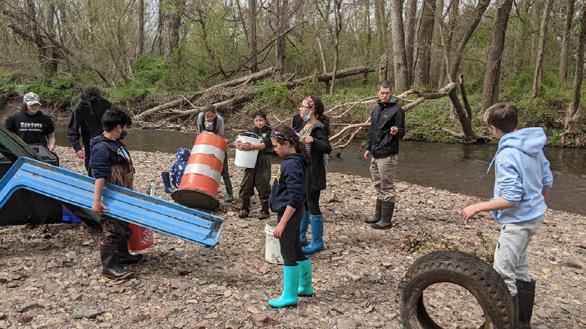

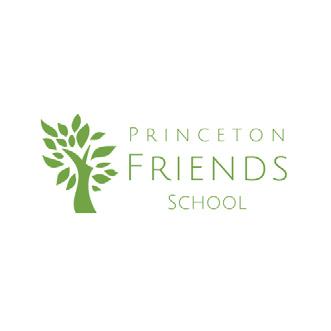
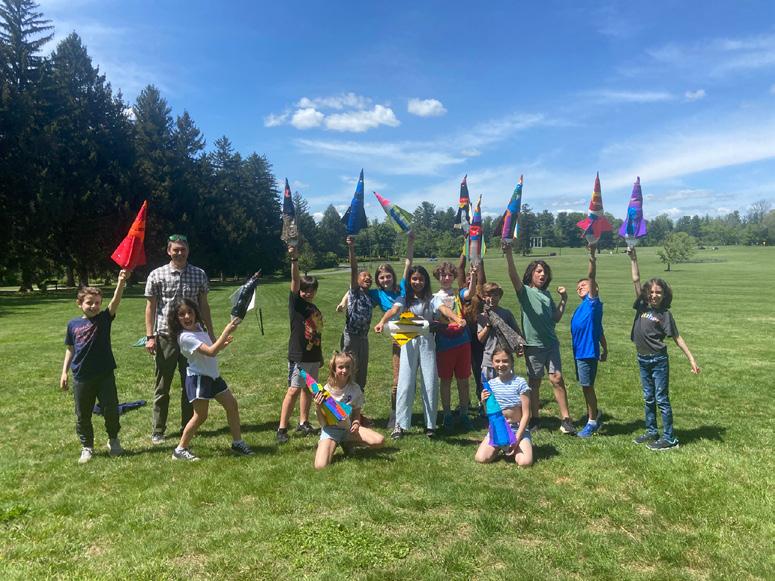
50 Princeton leading and servicesTeletherapyprovided by all of Services • Articulation Princeton leading and servicesTeletherapyprovided by all of therapists! Princeton leading practice and now servicesTeletherapyprovided by all of our For a free phone consultation and/more information about PSLLC please visit our website, psllcnj.com or call 609-924-7080. 615 Executive Drive Princeton, NJ 08540 609-924-7080 info@psllcnj 615 Executive Drive Princeton, NJ 08540 609-924-7080 | info@psllcnj.com Executive Function Therapy Handwriting difficulties • Neuromuscular therapy Parent training and support Psychological Services Reading/Writing Tutoring Receptive & Expressive Language Sensory Processing Therapy • Social Communication Groups For a free phone consultation and/or more information about PSLLC please visit our website, psllcnj.com or call 609-924-7080. Now Offering Occupational Therapy Services servicesTeletherapyprovided by all of our therapists! New Jersey’s leading practice for a variety of language, social, academic, psychological, and occupational therapy services for children of all ages. Princeton Speech Princeton Magazine 2-2023.indd 1 2/8/23 8:59 AM Openings available in select grades Contact us for more Contact us for more iinformation: nformation: admissions@princetonfriends org admissions@princetonfriends org www princetonfriendsschool org (609) 683-1194 Be You Be engaged B e i n s p i r e d
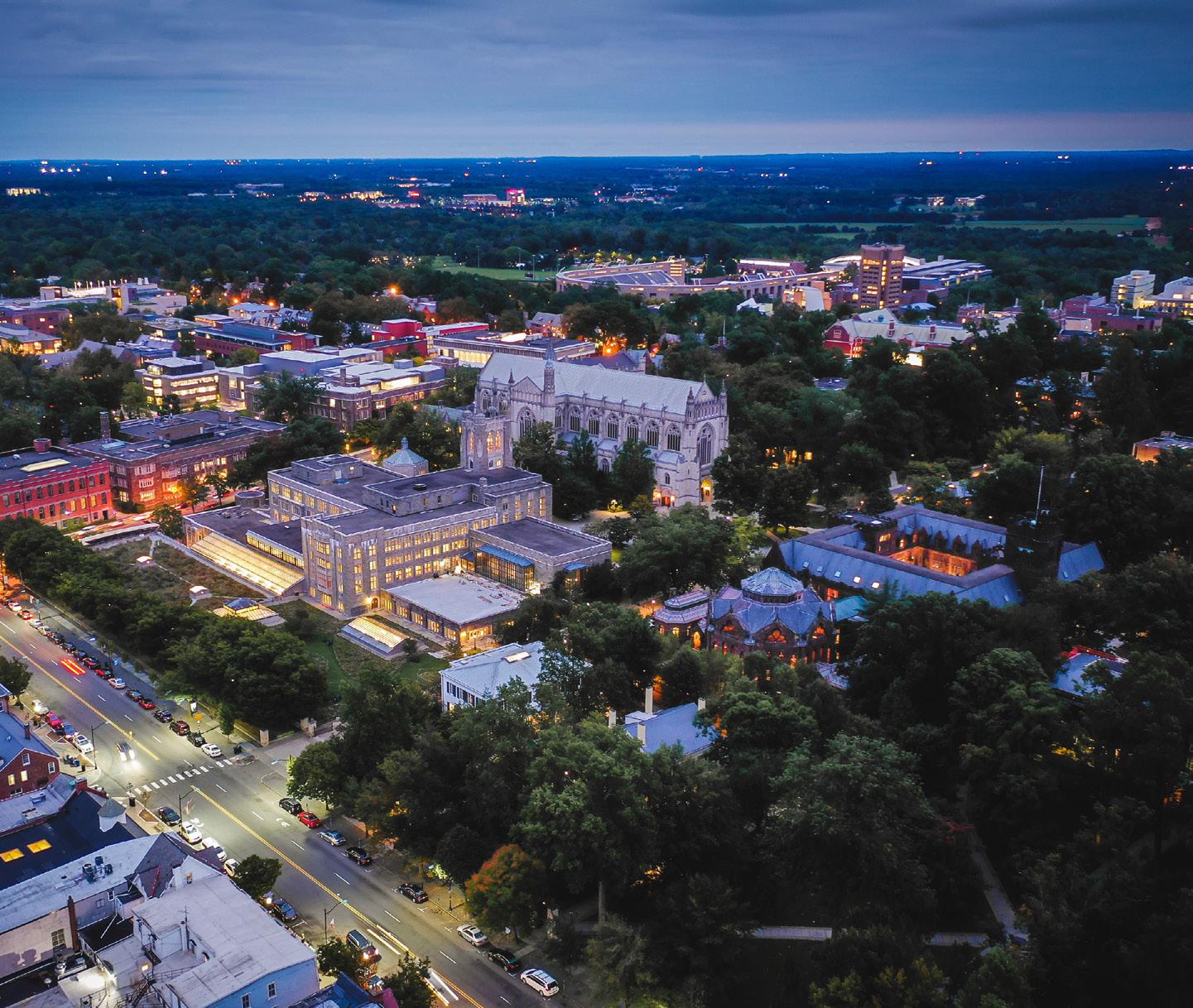
RSM Psychology Center and Sports Concussion Center of New Jersey Announce a New Name and Location 100 Canal Point, Suite 210 • Princeton, NJ 08540 281 Witherspoon Street, Suite 230 Princeton, NJ 08540 609-895-1070 www.rsmpsychology.com www.sccnj.com • Learning Disorders, Attention Deficit Disorders • Developmental Disorders, Reading Disorders • Academic and Testing Accommodations • Memory Disorders, Alzheimer’s Disease and other Brain Degenerative Disorders • Sports Concussion, Brain Injury • Post-Traumatic Stress, Depression, and Anxiety • Academic Coaching and Counseling • Cognitive Rehabilitation Our uniquely specialized services in Brain Health include: Rosemarie Scolaro Moser, PhD, ABN, ABPP-RP NJ. Lic. SI02148; PA Lic. PS004532L; APIT #3394 Bridget Mayer, PsyD NJ Lic. SI06624; APIT #11827 Jessica Corrigan, PsyD NJ Lic. SI06542; PA Lic. PS019333
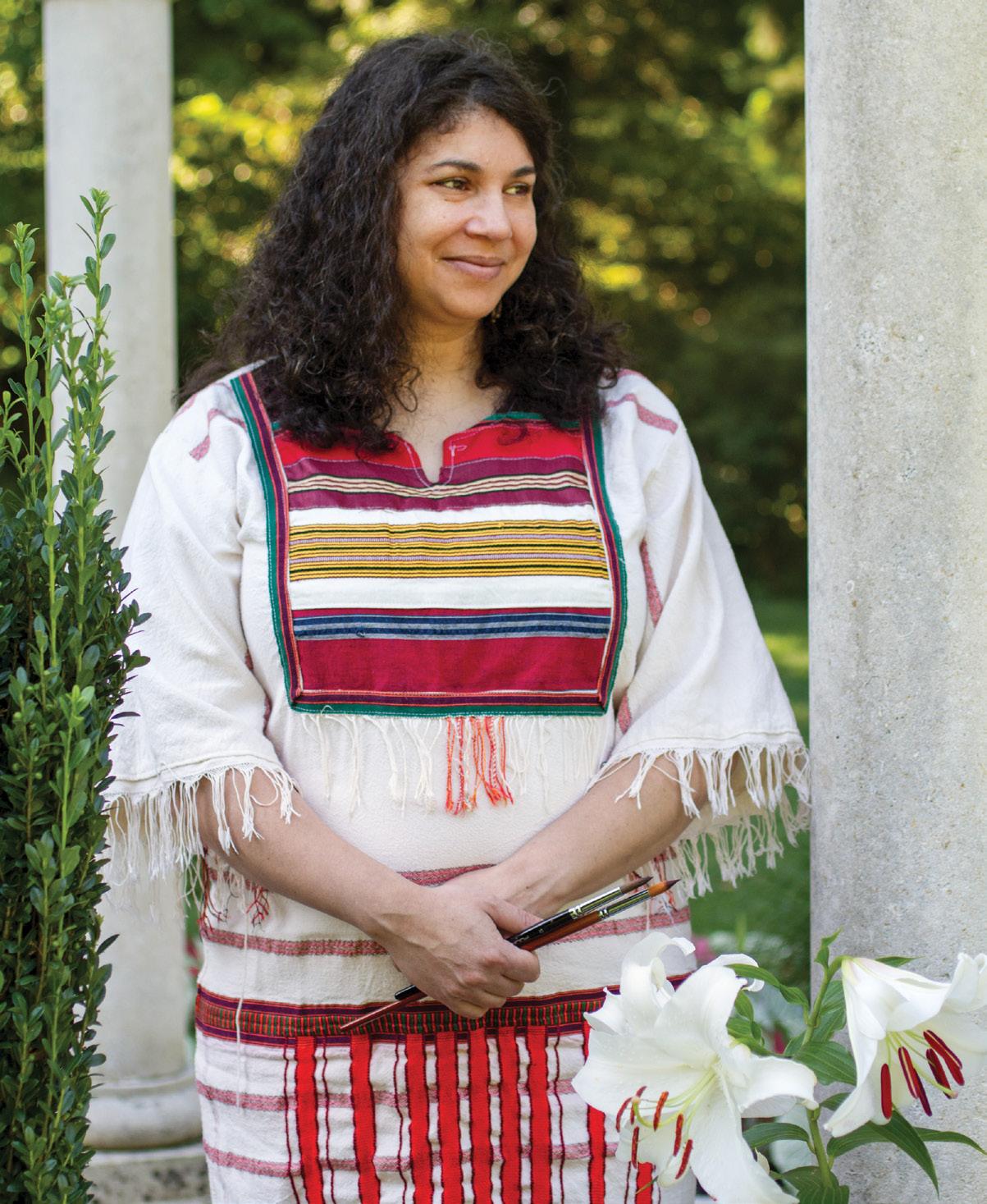
52 | PRINCETON MAGAZINE SEPTEMBER 2023
PATTERNS OF ABSTRACTION
Artist Alia Bensliman draws on the mosaic of her Tunisian heritage, human rights, and international experiences
BY ILENE DUBE | PHOTOGRAPHY BY JEFFREY E. TRYON
lia Bensliman creates worlds filled with figures, patterns, and symbols. Her watercolors are composed of tessellations suggestive of traditional Arab art, and are simultaneously contemporary and meditative.

The Robbinsville resident was the subject of a solo exhibition in the Hutchins Galleries Rotunda at the Lawrenceville School last winter, and she is readying work for an exhibition at Princeton University Art Museum’s Art@ Bainbridge. “Reciting Women: Alia Bensliman and Khalilah Sabree” will be on view January 20 through March 31.
It is not every day that a local artist gets exhibited at Princeton University Art Museum.
“I first encountered Alia’s work on the walls of Artworks Trenton and was instantly captivated by her luxuriously patterned watercolor portraits of Amazigh women garbed in elaborate dress, jewelry, and tattoos,” says Juliana Ochs Dweck, chief curator, Princeton University Art Museum. Amazigh people are indigenous to North Africa – Algeria, Libya, Mauritania, Morocco, and Tunisia. Their more commonly known name is Berber. Bensliman is of Berber descent.
ADweck subsequently encountered more of Bensliman’s work at the Trenton City Museum at Ellarslie and at the Hutchins Galleries. After seeing Sabree’s work in her Artworks Trenton studio, “I felt that bringing [both artists] together could highlight how they each, in their distinctive way, open windows into complex and beautiful worlds where cultural and visual traditions are tenaciously preserved but also under threat.”
Each employs a meditative repetition, and to that end, Dweck chose the title “Reciting Women” because “Recite evokes the chanting of prayer but it also brings to mind secular storytelling of various forms — whether reciting one’s experience or reciting poetry for an audience,” she says. In both instances “recitation suggests the act of repeating something from memory in ways that create new meaning and shared experience.”
Bensliman takes me to her studio, a loft space in her home. With her hair tied up in a knot on a steamy summer day, she offers me a cup of hibiscus tea — it is sweet without sugar. Cans of brushes are neatly lined up, and her collections of Prisma Colors, Micron pens, and Sharpies in various colors and sizes are fastidiously contained in specially-fitted cabinets. “I don’t get excited buying shoes like some women do, but my excitement comes from buying pens,” she says.
“Both artists are employing boundarydefying blends of figuration and abstraction and using handmade processes to adapt photographic imagery,” Dweck continues. “And both artists’ projects are grounded as much in their interest in aesthetic lineage and materiality as in their own life stories and distinct identities.”
Her 10-year-old son, Laith, comes into the studio with a camera. He is excited to learn that his mother will be featured in a magazine. He wants her to be on the cover, and he takes several photos to up the chances of that happening. Daughter Maya, 5, is at day care.
Bensliman is listening to the music of Malian singer Fatoumata Diawara, a favorite she saw in concert in Paris. The artist has been visiting Paris on her
SEPTEMBER 2023 PRINCETON MAGAZINE | 53
art
Conversation With A Friend, by Alia Bensliman.
photography by andrew wilkinson
own since she was 16. Her older brother manages two theaters there, and as a child, Bensliman would accompany her parents to Paris museums — her favorite is the Musée d’Orsay. As a young adult she found the city easy to navigate, walking or using the Metro. She is fluent in Arabic, French, and English. French was spoken in Tunisia after the French invasion of 1881 (Tunisia achieved independence in 1956), although today the most common language spoken in Tunisia is Arabic.
Bensliman has been making art since childhood. During middle and high school she realized she had a learning disability. She wasn’t officially diagnosed at that time. She credits her mother for helping her get into Ecole d’Art et de Decoration,

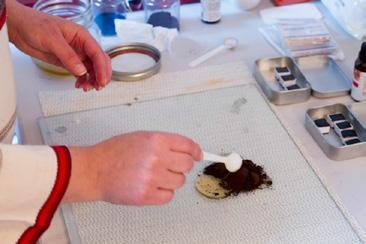
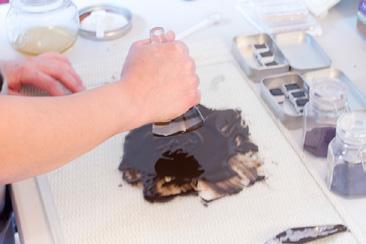

Tunis, where she earned an associate’s degree in product design.
She met Khaled Bensliman, who had grown up in the U.S., when he came to a cousin’s wedding in Tunisia. The two began dating long-distance, a Skype romance. He would come to visit every three months, taking an eight-hour flight to France and then another two-hour flight to Tunisia. In 2007 he proposed, and a few years later they married and set up home in the U.S.
Although she’d always spoken English, Khaled told Alia her English was too British — she would say things like “tomahto” and “pleased to meet you.” That was one of many things she had to adjust to fit in in New Jersey.
Bensliman fell in love with Trenton — the Italian neighborhoods and buildings reminded her of cities in Tunisia, and she became fascinated by the history of John Roebling and the Roebling Wireworks. Her painting I am Roebling is in the permanent collection of the New Jersey Department of Health.
It wasn’t long before she was volunteering at Artworks Trenton, the Sage Coalition (where she helped create murals and plantings to beautify streets), and at the Trenton City Museum at Ellarslie.
“I met (Trenton artists) Leon Rainbow, Will Kasso, and Brass Rabbit,” she says, as well as Craig Shofed, managing director of Artworks, who has been a mentor and an advocate. Artist and photographer
54 | PRINCETON MAGAZINE SEPTEMBER 2023
Bensliman mixes non-toxic paints, time-consuming as it may be.
Andrew Wilkinson is another friend and mentor, someone she relies on for honest feedback. He photographs her artwork and taught her how to build her website. “It’s a beautiful art community with friends helping friends,” she says.
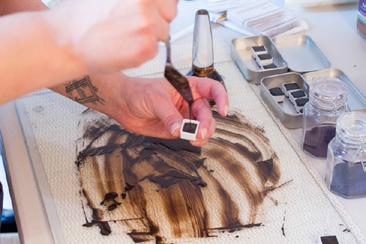

In 2016, she won first prize for her piece in “Monster’s Ball — Night on the Bayou” at Artworks Trenton. Soon she was teaching sustainable art, magazine collage, and paper bead making at Artworks, Ellarslie, and the Monmouth Museum. (Jewelry with paper beads is one of her sidelines.)

During this time, she was also the manager of the framing department at Michael’s Crafts at Nassau Park. That presented the opportunity to frame the
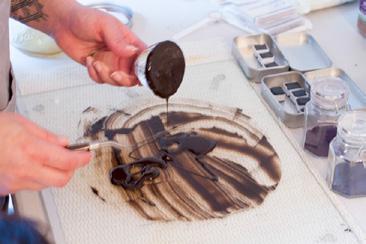
artwork of her friends Tamara Torres and Habiyb Shu’Aib.
Upon meeting, the artist speaks freely about her political views, and soon you learn that her grandparents never held back from expressing theirs — which landed them in prison during the Nazicollaborating Vichy government.

Her grandfather, Azzouz Rebai, an attorney, was a leader in the resistance, giving speeches about defending rights. Her grandmother, a women’s rights activist, wrapped herself in the Tunisian flag and sang the Tunisian national hymn as an act of protest. She was charged with holding a Molotov cocktail and imprisoned. Rebai became her lawyer, and proposed when the two were still in jail.
Asma Belkhodja, born into a family of magistrates and public administrators, was imprisoned for 18 months while Rebai served seven years. Both were tortured, according to their granddaughter. Upon release, Azzouz Rebai was nominated secretary of youth and sports in the first government of Tunisia after it gained independence, and Asma Belkhodja
Rebai became one of the founders of the Union Nationale de la Femme Tunisienne, according to Wikipedia.
One wall of the house showcases vintage photos of Azzouz Rebai addressing a crowd, giving speeches. “He always wore suits with a red rose in the pocket,” Bensliman recollects. Red roses in her paintings are an homage to her grandfather.
SEPTEMBER 2023 PRINCETON MAGAZINE | 55
Another wall showcases her grandmother’s artwork. The abstract artist had a strong influence on her granddaughter. “She bought me books and taught me to think independently,” Bensliman says.
In photos, Asma looks like Sophia Loren. Patterns and textiles in some of those family photos are evidence of the artist’s primary visual world, and the influence on her artwork is apparent.

During the pandemic, Bensliman began to feel homesick — her parents still live in Tunisia. She commenced work on her North African women series as a way to mix Eastern and Western styles and began making her own non-toxic watercolors.

Me, Myself, and I: Unfinished Conversation is a self-portrait with three heads representing her artistic side, her classic side, and the part of her that is a free spirit.
“I feel like women are harshly judged no matter what they do,” she says. “Be smart but not too smart. Be a leader but be careful, you might be intimidating. Be
world toward women. Each of the three portraits are envious of each other — they are all questioning what should be their next move.”
One of the faces has a Berber tattoo on her chin; Bensliman has the same tattoo on her wrist, a palm leaf that represents the union between woman and man. A halo of gold calligraphy contains the names of people she loves.
confident but not too confident. Be sexy but be careful not to look too trashy. Me, Myself, and I highlights the injustice of our
The free spirit has objects in her hair that echo the shapes of the geometric background and have Arabic words that talk about mental health. Bensliman calls herself an advocate for invisible illnesses. “When you see a person, you don’t see behind the scenes,” she says. “I have chronic diseases. My artwork helps me with that. I go into a certain world with repetition of lines and colors and it takes me into a beautiful cocoon. I explain to viewers, it’s OK to deal with mental health.”
56 | PRINCETON MAGAZINE SEPTEMBER 2023
Me, Myself, and I — Unfinished Conversation by Alia Bensliman.
Symbiotic Juxtaposition by Alia Bensliman.
art photography by andrew wilkinson
As the daughter of a speech therapist, she developed an understanding that people with autism and speech and hearing impairment are normal. “There’s no difference between me and someone with other abilities,” she says.
She taught art at the center where her mother worked to prepare students for employment. Clients there also learned pottery, knitting, and rug making. “It’s amazing to see what they do. I taught them to draw to express their feelings,” she says.


Bensliman is one of nine artists whose work has been chosen for a Modest Mussorgsky concert at the Capital Philharmonic in Trenton. Her Space Warrior, created while listening to the music, will be projected on a large screen as well as appear in the hallway. There are patterns on Space Warrior’s face, in her
hair, her vestment, and the background, and her eyes are red poppies.
Bensliman takes me into her “laboratory” behind a room divider, where she makes little shimmering squares of paint. She says she learned by trial and error. Khaled, an environmental engineer, is serious about recycling and not using things that aren’t friendly to the environment, and this has influenced her decision to mix nontoxic paints, time-consuming as it may be.
Among her ingredients are cabbage and clove oil, and the odor is surprisingly pleasant. She labels the colors saffron, Cyprus umber dark, Italian umber. Magic power and mica are among the ingredients that make them glitter.
Her preferred substrate is Arches coldpressed watercolor paper because of the way it absorbs the paint.
Bensliman’s career is taking off. In addition to the two solo exhibitions, in 2017 she won a prize for mixed media in the Ellarslie Open exhibition. In spring 2023, Trenton’s Passage Theatre commissioned a painting for the cover of its program. She has shown in Paris and received commissions from, among others, Canada and Australia. Her work donated to fundraising events, such as HomeFront’s ArtJam in Princeton, sells quickly.
“My artwork is a sort of diary of my everyday life,” she says. “The symbols express sentiments about milestones and past experiences. I also express my views about sociopolitical issues, health issues, religion, and human rights. My goal is to intrigue, engage, and provoke thought and reflection.”
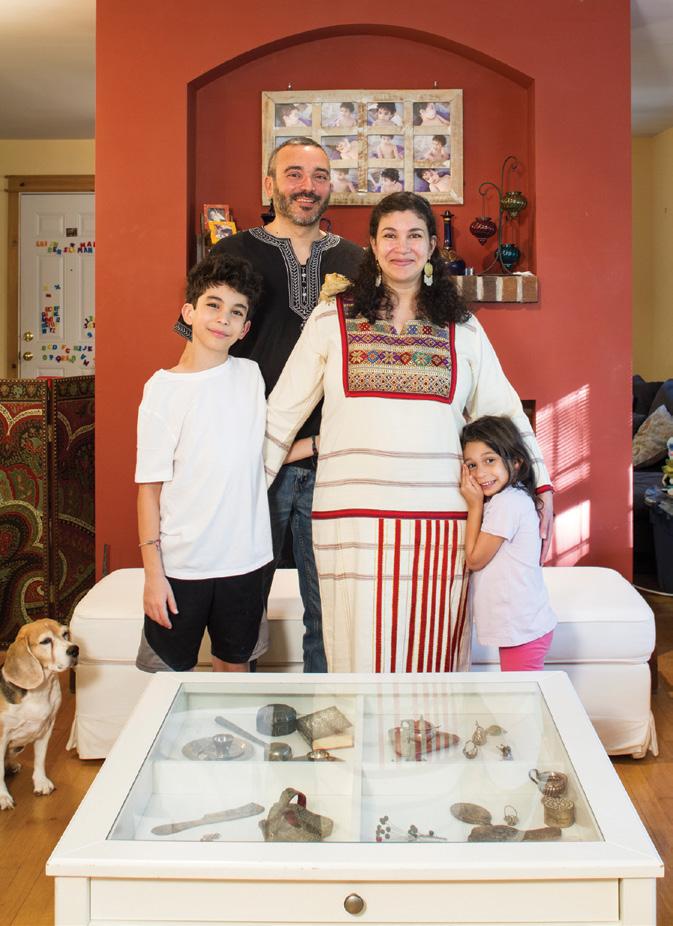
SEPTEMBER 2023 PRINCETON MAGAZINE | 57
Above: Alia Bensliman surrounded by her family and pets. Right: Bensliman’s handcrafted jewelery made of layered strips of magazines.















Greenview Designs Landscaping & Hardscaping Contractor LUXURY Creating Outdoor Living Spaces LANDSCAPING • HARDSCAPING • OUTDOOR PIZZA OVENS • FLAGSTONE • BBQ ISLANDS • PERGOLAS • PAVERS MASONRY • BACKYARD BARS • STONE VENEERS • WALKWAYS • OUTDOOR KITCHENS • PATIOS • FIRE PITS DRIVEWAYS • RETAINING WALLS • BOULDER WATERFALLS • OUTDOOR FIREPLACES • OUTDOOR LIGHTING 609-466-3080 WWW.GREENVIEWDESIGNS.COM CUSTOM POOLS ~ DESIGN/BUILD NJ LIC: 13VH04470000 PA HIC:PA081503
Classes are designed for all ages to build confidence, artistry, discipline, and foster students’ love of dance. Our world class faculty is dedicated to helping each student reach their full potential, with spacious studios, new state-of-the-art dance floors, and live music. The perfect environment to learn and grow!

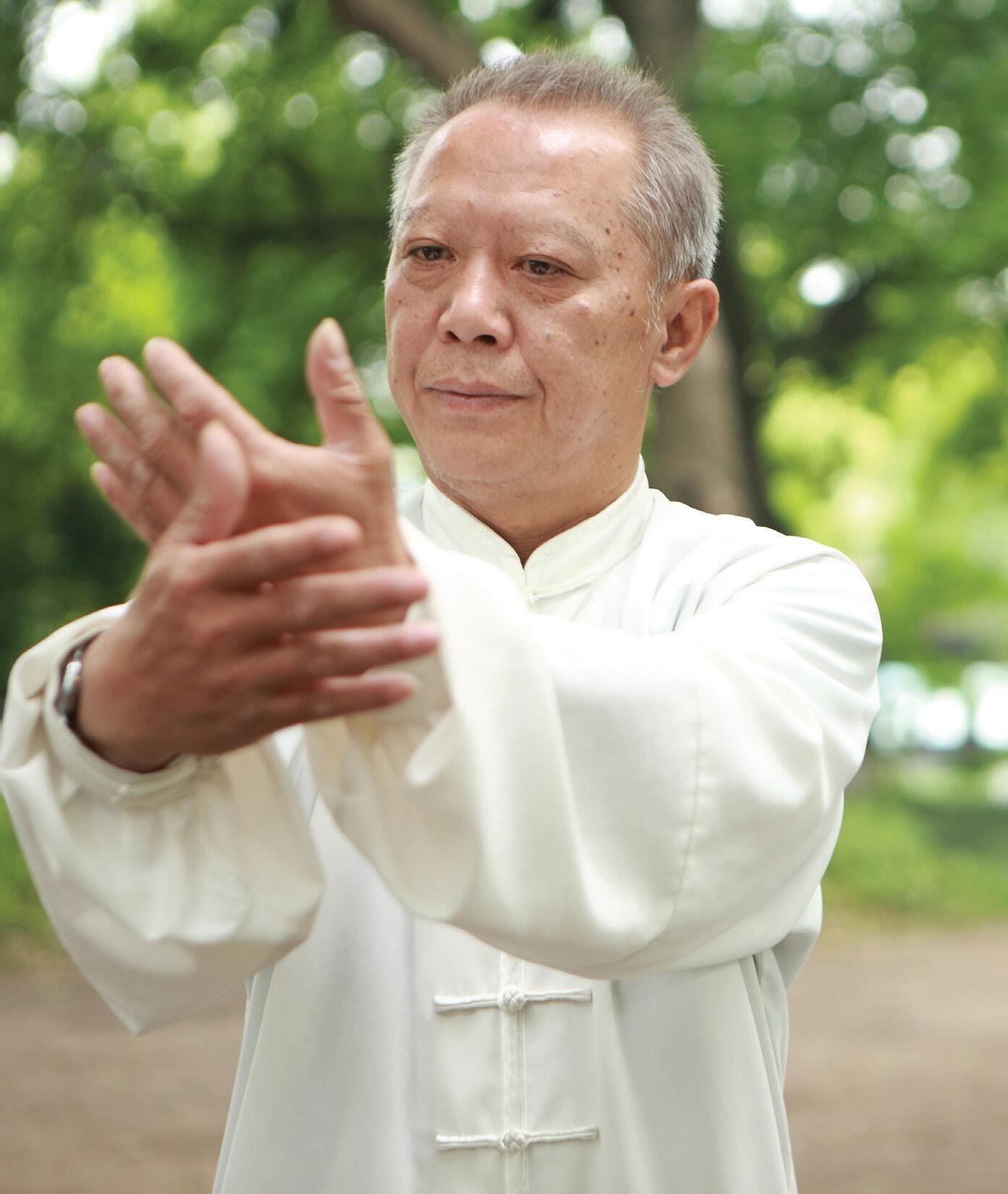
Finding the Way of Nature in TAI CHI
 BY TAYLOR SMITH
BY TAYLOR SMITH
The origins of tai chi harken back to ancient China. Today it is used by people around the world to improve balance, mental health, and rehabilitation, and to ease physical pain and/or discomfort. As an activity that promotes gentle, thoughtful movements, and conscious breathing, tai chi is a surprisingly effective way to incorporate exercise into your own life, no matter what your age.
One of the key tenets of tai chi is qi, which represents inner life energy. The goal is to get qi flowing smoothly and strongly throughout the body. Breathing effectively is essential to qi , and the movement of qi is both a physical and mental experience.
Corresponding to conscious breathing are fluid, graceful, and circular movements with the upper body. These can take the shape of forms or even “ push hands ,” which can help energy flow more effectively, even from one practitioner to another. An additional tai chi concept is yin and yang Often depicted as two blackand-white halves within a round circle, yin and yang represent opposing elements that are said to keep the universe in balance. This might also be described as the female and male counterparts or dark vs. light. This kind of syncopated duality is present throughout tai chi and is a hallmark of Chinese philosophy.

The movements associated with most locally taught tai chi classes are slow and low impact. However, low impact does not mean low benefits. As students gracefully engage almost all the muscles in their body for the sake of balance and breathwork, the teacher will direct forms, which are oftentimes named for animal actions (health.harvard.edu). The five animals in tai chi are tiger, deer, bear, monkey, and crane. The five forms are tiger, crane, leopard, snake, and dragon. The intent is for students to discover within themselves the swiftness of a bird, the strength of the tiger, and the dexterity of a monkey. This animal-related tai chi practice relates to Chinese medicine in the sense that each animal is said to correspond with different organs in the body. This is sometimes referred to as Wu Qin Xi.
When preparing for your first tai chi class it is recommended that you wear loose, non-restrictive athletic clothes and flexible shoes. Thick-soled running or tennis sneakers may alter you balance and reduce a sense of connection to the earth. Don’t forget to bring a water bottle. Observing a tai chi class , or asking the instructor some questions beforehand, can also be helpful.
TAI CHI AND THE OUTDOORS
Tai chi can be practiced anywhere, but preference is given to the outdoors, when possible, since nature plays such a pivotal role in the tai chi experience. Harry Legg, founder and instructor at New Jersey Tai Chi ( newjerseytaichi.com/welcome ) in Verona , says, “when we can be out in nature, that’s
SEPTEMBER 2023 PRINCETON MAGAZINE | 61
shutterstock.com
ideal. I’m very fortunate to have an amazing park in Verona, New Jersey. We train in the park whenever the weather allows.”
An interesting aspect of doing tai chi outdoors is that it asks the students to adapt to their surroundings. For example, practicing in the sand on a quiet beach is going to be much different than trying to loosen your mind and let the background noise disappear in a crowded urban park. Outdoor practice also engages what tai chi considers to be your outer lung — the skin. At a time when most of the population is vitamin D-depleted and starved for natural light, tai chi is a great
excuse to get at least one hour of outdoor time per day.
FINDING A TEACHER
Legg has been a tai chi instructor operating his own studio since 2015. “A good teacher is a student first and a teacher second. I have a master level teacher, Richard Clear, and at New Jersey Tai Chi, we teach his style, which is Clear Tai Chi Chuan. Clear Internal Push Hands involves softly placing hands on your training partner or teacher and learning to feel tensions, structural deficiencies , and other issues with their body — push hands could also be called sensing hands.”
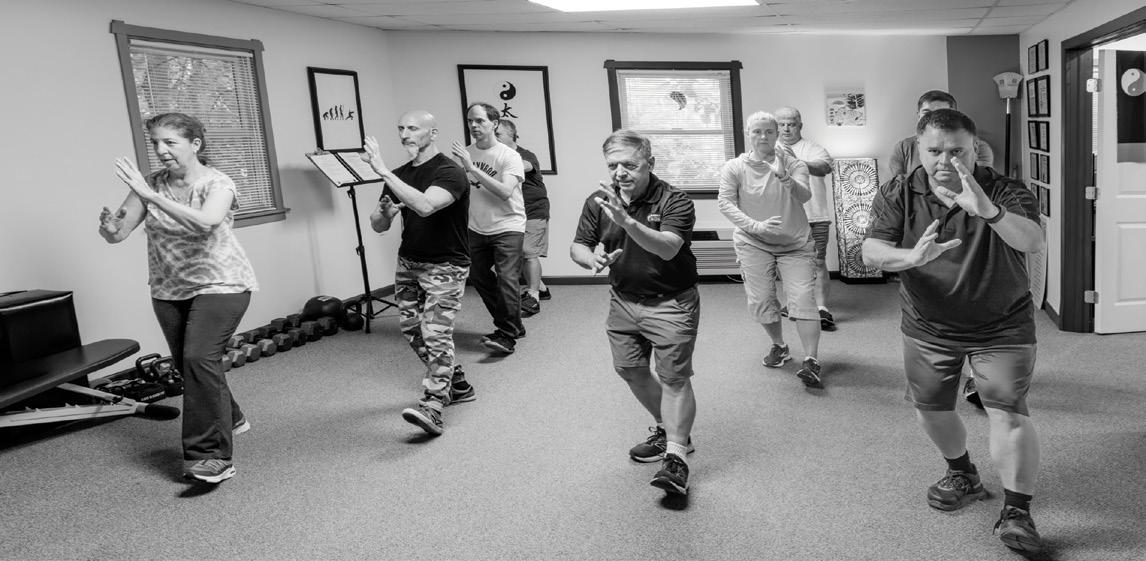
Legg emphasizes that breath is a key element to any study of tai chi. Learning to coordinate body movement with breath, and directing breath to areas of the body where there might be pain or discomfort, are ways of utilizing the balance, breath, body, and life aspects of the tai chi art.

In terms of the treatment of ailments, Legg has seen relief and/or improvement of lower back pain, hypertension, depression, anxiety, and asthma in his own students. Legg is also certified in teaching tai chi to Parkinson’s disease patients and says that it is a wonderful treatment for Parkinson’s sufferers.

“I have 80-plus-year-old students who love seeing and carefully working with
the martial applications to their tai chi form,” he says. “It makes their form better, their energy flow better — and that is another huge part of tai chi, your energy or flow.”
Legg adds that from a health perspective, he is a strong believer in tai chi’s ability to boost immunity, offer some arthritis relief, reduce hypertension, and lessen anxiety. Many recent medical studies support this, including a May 24, 2022 article published by Harvard Medical School that states, “Tai chi is often described as ‘meditation in motion,’ but it might well be called ‘ medication in motion.’” Furthermore, the article points out that tai chi can be modified to fit any physical level, be it those recovering from surgery or someone just beginning their exercise journey (health.harvard.edu).
Regarding tai chi forms, Legg says that some forms can take as long as 45 minutes to perform. “We believe in teaching a shorter form for a good while to our students ,” he notes. “This gets you to achieving real tai chi skill and the benefits, both health and martial, come much faster than spending literally a year or two of learning choreography without much else. Plus, in today’s instantgratification society, there aren’t as many students willing to put in that much time without achieving some of the significant benefits that are to be had.”
62 | PRINCETON MAGAZINE SEPTEMBER 2023
Harry Legg, founder and instructor at New Jersey Tai Chi. (Photo by Frederick Schmitt)
Harry Legg teaching tai chi. (Photo by Nath Kaplan Photography)

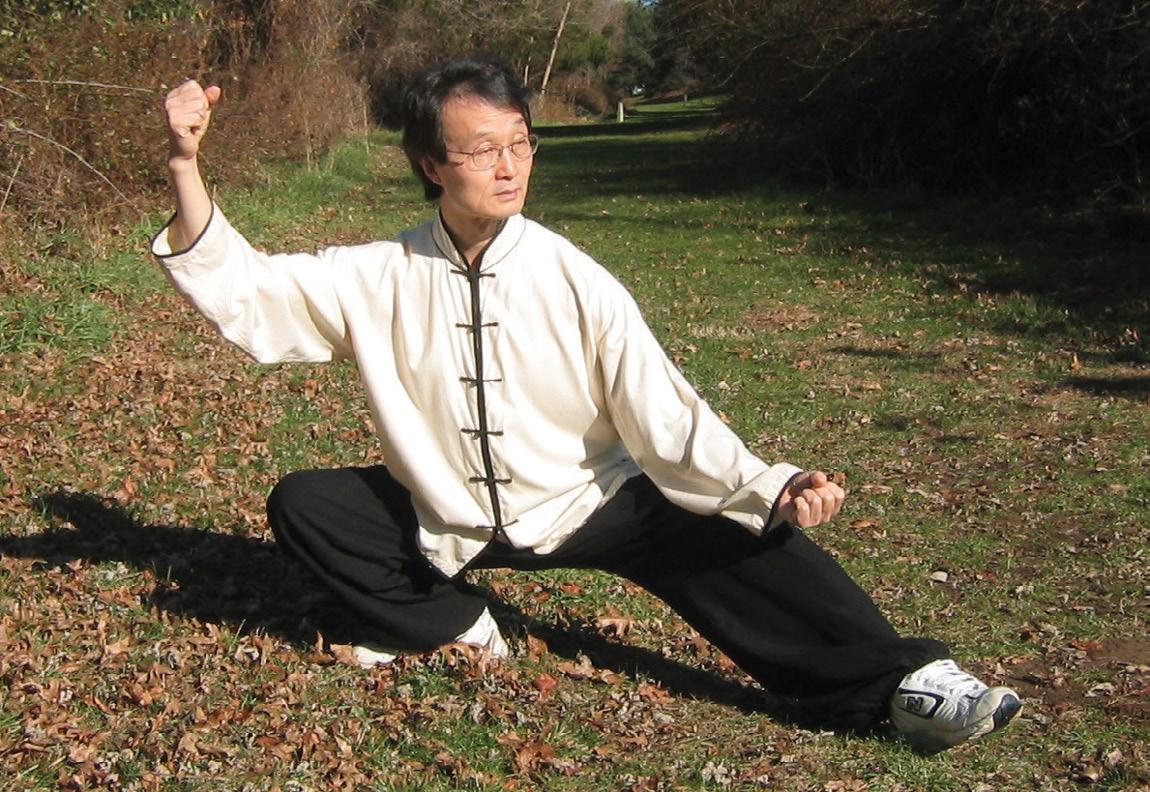
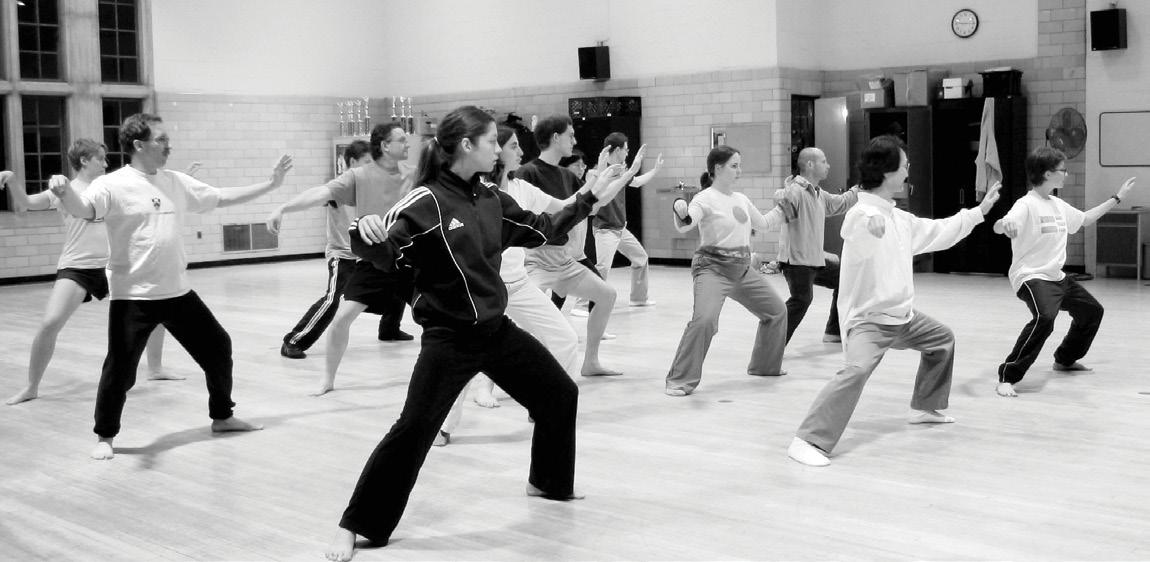
SEPTEMBER 2023 PRINCETON MAGAZINE | 63
Park teaching a tai chi class. (Photo courtesy of Master Park)
Master Park, founder of Wuwei Tai Chi School. (Photo courtesy of Master Park)
PHYSICS AND TAI CHI
Master Park founded Wuwei Tai Chi School in West Windsor while working as a principal research physicist at Princeton University. Although he is now retired from his time at Princeton Plasma Physics Laboratory, he still teaches Chen, Yang, and Wu-style tai chi. Park’s teaching combines traditional knowledge with scientific understanding, drawing on his background as a physicist. Park is currently offering a four-week tai chi foundations class online, through the school’s website at wuweitaichi.org.
Mackenzie Hawkins was introduced to tai chi while she was an undergraduate student at Princeton University. Through taking classes with fellow students, teachers, and staff, Hawkins’ interest in the practice grew. She now runs her own program called Inner Nature Retreat ( innernatureretreat.net ). The online

classes support the mind-body practices that Hawkins learned in tai chi. Since graduating from Princeton University, Hawkins has also collaborated with Park on two books, which are available for download from Amazon. Nowflow Breath, Movement & Mind and Way of Now: Nowflow for Meditation, Peak Performance, and Daily Life combine elements of traditional tai chi and Taoist thinking with Park’s perspective as a physicist. Park explains, “Tao is the way of nature, and it shows us how to do better. When you do physics and tai chi you see that they are very similar.”
On the subject of physics and the “nowflow” found in nature, Park writes, “One of the ways that it can be harder to see the wholeness of now is that we may be thinking about now as now shape. Perhaps without realizing it, we may assume that now is this static snapshot of the position of everything at a moment. By
contrast, nowflow inherently includes the flow of change.”

The concept that nature is not static strongly relates to tai chi movement of qi energy, which is always moving and changing. We can further engage with this form of energy, and nature itself, through the study of forms.
A simple breath exercise can teach us to engage with this free flow of natural energy. Park recommends a preliminary free breath practice in Nowflow Breath, Movement & Mind that describes “breathing in, feeling the free flow of the breathing wind,” followed by “breathing out, feeling the free flow of the breathing wind.”
“It can feel soothing to feel something so fine, subtle, and free flowing,” writes Park. “If we sense that we’re gripping or narrowing too much with our attention, we can remind ourselves how soothing it can be just to watch the currents of a flowing river in nature.”
64 | PRINCETON MAGAZINE SEPTEMBER 2023
Mackenzie Hawkins. (Photo by Whit Hawkins Photography)
TAI CHI AND MENTAL HEALTH
Susanna DeRosa was introduced to tai chi as a college student. Since then, she has become a familiar face within the Central New Jersey and Bucks County, Pa., regions teaching indoor and outdoor classes at D&R Greenway in Princeton and Prallsville Mills in Stockton. DeRosa is available for private and group classes. Class schedules and reservations can be booked through her website at innerspacetaiji.wordpress.com. DeRosa has previously taught tai chi at Princeton University, Trenton State College (now The College of New Jersey), and Carrier Clinic, where she was a regular instructor for more than 16 years. She now teaches classes at Earth House in East Millstone (earthhouse.org), a residential health care center for those with disorders such as schizophrenia and bipolar.
DeRosa explains that tension in
the mind and the body can manifest as emotional discomfort. Tai chi is a great way for those with mental illness to work towards relief with the introduction of new skills and new modes of awareness. Another great aspect of tai chi is that it is a moving meditation. For many individuals, seated meditations on a floor cushion for 10, 15, 20 minutes or more are nearly impossible. As a physical practice, tai chi allows for the mental benefits of seated meditation, but also the muscular engagement of a full-body workout.
“The body moves from one posture to another like clouds changing shapes in the sky,” says DeRosa. “Since the entire body and mind are engaged in the movement dynamic, a functional wholeness is achieved. The body, mind, and spirit come into harmony, creating a feeling of wellness.”
In terms of Chinese medicine,
DeRosa points out that the meridians that are activated during an acupuncture session are the same as those that are engaged during tai chi. Both are wellness treatments that people use to balance the whole-body system.
“Since all of the body’s meridians relate to each other, the gentle stretches of the fluid tai chi sequence balance the workings of our internal organs,” says DeRosa. “By way of the changing postures, the meridians (energy channels) are naturally coaxed into greater congruity, allowing the organs to function in a more optimal fashion.”

Many people are looking for greater balance and harmony in their own lives. As these tai chi instructors attest, a certain type of physical, spiritua l, and mental fitness can be available to all.
Most importantly, approach your tai chi journey with joy!
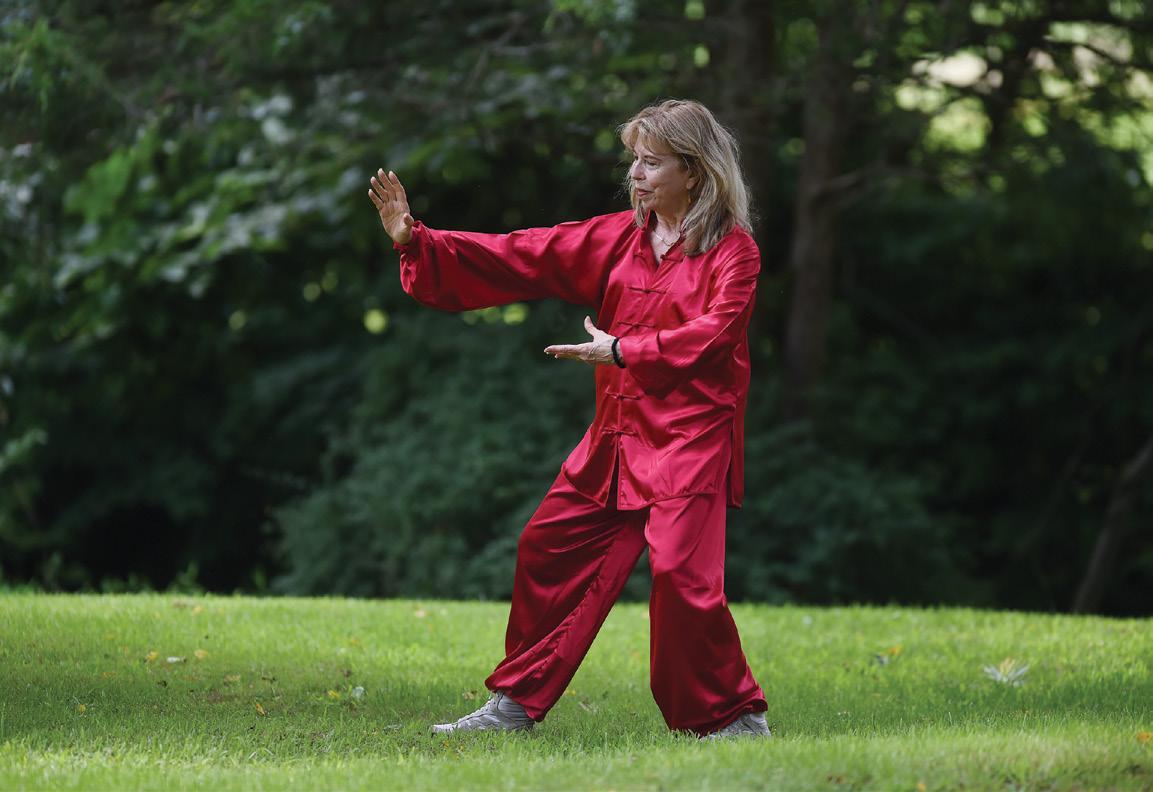
SEPTEMBER 2023 PRINCETON MAGAZINE | 65
Susanna DeRosa. (Photo by Phil McAuliffe)





NJNLA • CNLP • ICPI • TECHO PRO • BBB ACCREDITED www.sunsetcreationsinc.com 355 Route 601, Belle Mead, NJ 08502 Phone: 908-281-6600 Fax: 908-281-9672 NJNLA • CNLP • ICPI • TECHO PRO • BBB ACCREDITED www.sunsetcreationsinc.com 355 Route 601, Belle Mead, NJ 08502 Phone: 908-281-6600 Fax: 908-281-9672 NJNLA • CNLP • ICPI • TECHO PRO • BBB ACCREDITED www.sunsetcreationsinc.com Hardscape • Patios • Terraces • Driveways • Landscape Outdoor Living Spaces • Landscape Maintenance Services www.sunsetcreationsinc.com • jcolombero@sunsetcreationsinc.com NJNLA • ICPI • TECHO PRO • COASTAL SOURCE LIGHTING & AUDIO DEALER • BBB ACCREDITED





“IF IT’S RUSSELL, IT’S RIGHT, GUARANTEED!” 31 years in business (since 1992) Fully licensed and insured in PA & NJ PROVIDING THE HIGHEST QUALITY WARRANTIES, WORKERS, AND COMMUNICATION Contact us today! 1-888-567-7663 russellroofing.com Roofing (cedar, slate, tile, asphalt shingle, flat, metal), siding, gutters, windows, doors, skylights, sun tunnels, insulation, masonry FREE ESTIMATES!
THE LEGENDARY BAGEL

CULTURALLY RICH AND SIMPLY SATISFYING
 BY MARY ABITANTO
BY MARY ABITANTO
68 | PRINCETON MAGAZINE SEPTEMBER 2023
photo courtesy of mary abitanto
The bagel is renowned, especially in America, as a breakfast treat often served with a “schmear” of cream cheese and topped with lox, or butter. It can also be jazzed up with toppings like tomatoes, avocados, tuna fish, peanut butter, or a fried egg.
A traditional bagel is a round bread with a hole in the middle. The hole allows the bagel to evenly bake. It is made with high-protein flour known as bread flour and it is crunchy on the outside and chewy, yet soft on the inside. It should be eaten soon after baking, ideally on the same day, and toasting it isn’t necessary if it’s well made and fresh. Classic bagels are plain, onion, garlic, poppy seed, sesame, salt, and egg.
THE MIGRATION OF GERMANS INTO POLAND
The bagel is a popular American breakfast, but the history of the bagel is anything but American. Some legends suggest that the dough treats were developed by Germans who emigrated to Poland in
the 14th century. They brought the art of pretzel making with them, a similar process involving boiling and baking at high temperatures. In German monasteries, the pretzels had evolved into a circle shape,
staple food among the Polish people of the 16th and 17th centuries, where it took on the classic characteristic of the modern-day bagel. The Polish call them bajgiel, which comes from the Yiddish word beygal. Beygal comes from the German word beugel, which means bracelet or ring.
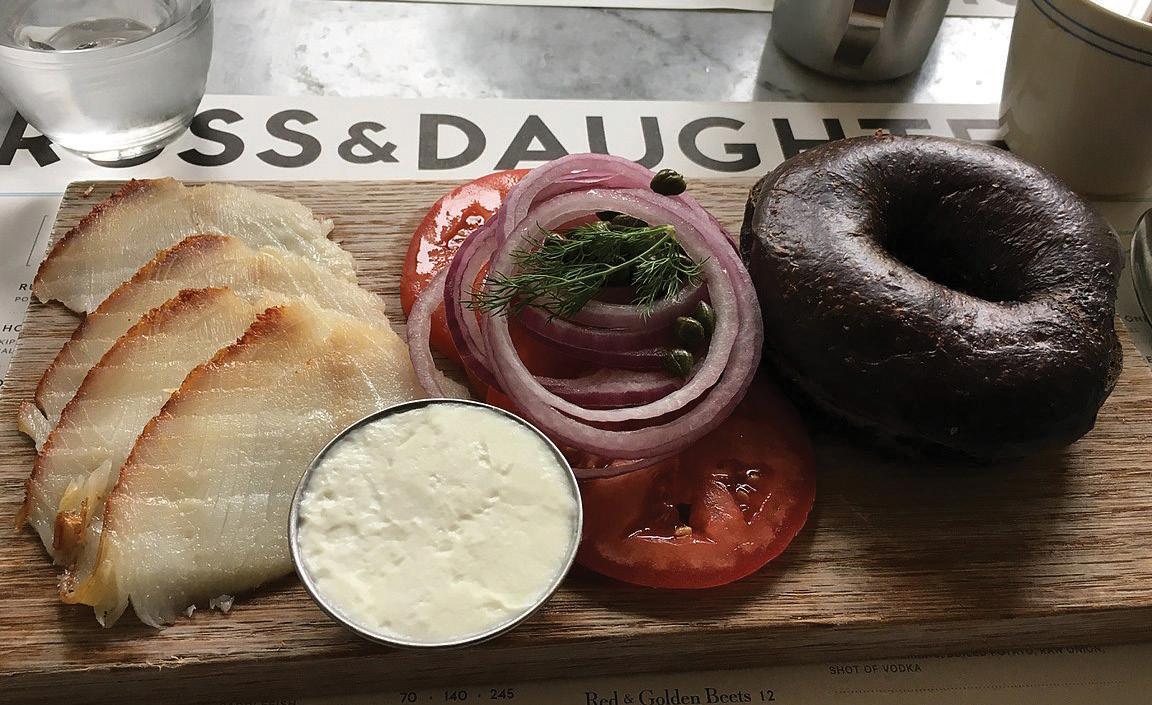
During the 19th century, an influx of Eastern European Jewish immigrants came through Ellis Island. Jewish Polish immigrants brought with them their own culture, language, and food traditions, bagel making being one specialty. The Lower East Side of New York City (NYC) was a bustling hub for Jewish immigrant culture. It was also an intersection of other European cultures such as Irish, German, and Italian. Street vendors would often sell bagels stacked on long sticks or strung on a long rope on pushcarts.
usually twisted, with a hole in the center, that became known as an obwarzanek. They exploded in popularity after the queen of Poland switched from heavy sweets and fatladen pastries to obwarzanek during Lent. It was a modest bread, and soon it became a

By 1915, there were so many established bagel makers in NYC that the Local 338 Bagels Makers Trade Union was created to negotiate fair wages, benefits, and better working conditions for their members who made bagels strictly by hand. Bagels were made in rapid-fire succession with an average speed of 832 bagels per hour. These workers
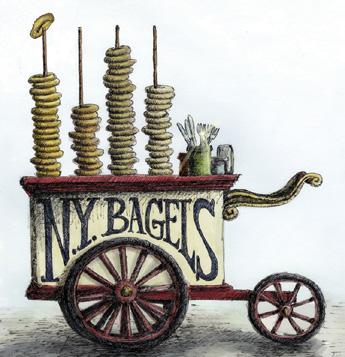
SEPTEMBER 2023 PRINCETON MAGAZINE | 69
Mensch Board from Russ and Daughters Café on Orchard Street, New York City. (Wikipedia)
wanted to protect their trade and tradition. Joining the union required that one had speed and a family connection. All members were of Jewish descent, and meetings were conducted in Yiddish by the elders.
Bagels became “Americanized” as the popular food spread across the U.S., where they took on different characteristics based on regions. The first bagel making facility was established in New Haven, Conn., in 1927 by Harry Lender, a Jewish baker originally from Chelm, Poland.
Other bagel varieties such as cinnamon raisin and blueberry later started appearing. Bagels also became super-sized and started being mass produced by machines sometime after the 1960s.
QUICK-RISE, HIGH-PROTEIN BAGEL — A SPIN ON A CLASSIC
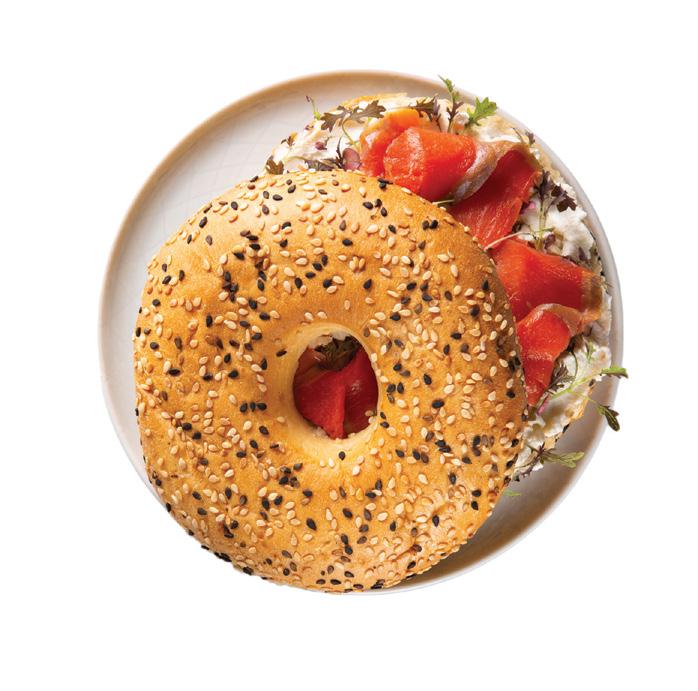
Everyone knows that NYC bagels are some of the best bagels in the world. And although we might consider bagels bread, they are truly in a class all their own and are unmatched in taste. Some say it’s the water that creates that extra-special taste, but it’s also the quality of the ingredients that creates a perfect-tasting bagel.
My bagel recipe is simple, with a few twists and turns, but requires a little patience. If there is one lesson I’ve personally learned from baking anything, especially breads or bagels, it’s patience. You can’t rush the process. But we are going to nudge it and churn out one of the best bagels, and no NYC water is necessary.
Having raised three high school athletes (one now a D1 pole vaulter), I know what it takes to fuel them. I also know that every morning or during lunchtime our new drivers head out for bagels — a fun rite of passage. But daily bagel splurges (albeit delicious!) can become pricey and are not so healthy. This bagel was created to be higher in protein than a classic bagel, with some added health benefits. So, on those mornings when the kids want a healthy, homemade bagel, try this recipe.
THE BAGEL MAKING PROCESS AND MY ADAPTATIONS
Many bagel recipes require resting the dough overnight, what they call cold fermentation. According to King Arthur Baking, “Perhaps the most important reason for a long, cold ferment — especially in a commercial setting — is convenience and


maximum freshness. Shaped bagels under cold fermentation have a wide window of readiness.”
It’s a little tedious in my opinion for the home baker, but necessary in a commercial kitchen producing mass quantities of bagels.
I simply toss together the ingredients in my stand mixer bowl (no yeast proofing necessary) and within an hour I am ready to roll these beauties, dip in hot water, and pop them into a hot, and I mean hot, oven — my little trick for speeding up the process.
These are done in less than 1 1/2 hours, which includes mixing the dough, resting the dough, shaping the bagels, dipping the bagels, rolling them in the coating, and then baking them to perfection. With that said, I tested this recipe by preparing the dough the night before, allowing it to rise, shaping the bagels, and resting the dough in the refrigerator overnight. In the morning, you will only have to dip in water and bake. Either way is delicious!
Bread flour is the key to the chewiest bagel. I use King Arthur Baking Company 12.7 percent Protein Bread Flour, which produces a very chewy and delicious bagel. You can find it at McCaffrey’s Market or Whole Foods. With that said, in my cookbook, Food From My Heart & Home, I have a lovely NYC Easy Bagel recipe using all-purpose flour which is a good substitute. An adaption I made to make these higher in protein was adding nonfat Greek yogurt. Yes! It is completely undetectable and will add even more protein to this bagel as will the milk added in lieu of water. I used Lactaid milk, which is very creamy. Even the nonfat one in the purple container, or any low-fat milk, will do.
Boiling the bagels in hot water with a drizzle of honey (some say molasses or barley malt syrup) will ensure a chewier bagel and produce a crunchy and golden exterior. Instead of boiling, I cut corners and just filled a bowl with hot water — no honey — and soak the bagel on one side for 5 seconds, then flip it and let it soak an additional 5 seconds. If you haven’t properly merged the ends of the rope together, the bagel will sometimes unravel, but the texture is like wet play dough and it can be pinched back together. This adaptation of a quick water bath saves a lot of time.
The outside coating on this bagel makes it very healthy, increasing the fiber content.
the drained bagel and cover it completely with a heavy coating. An egg wash is typically used before a coating is added, but I skip this step.
I normally bake my bagels at 425 degrees for about 30 minutes, these however are cooked at 475 degrees, for 16 minutes. One day I made these bagels and didn’t have my reading glasses on, relatable I’m sure, and I accidentally cranked up the temperature to 475 degrees instead of 425 degrees. The bagels cooked super-fast (don’t open the oven though) and the outside was so crunchy, and the inside had a beautiful delicate, airy interior.
Pulling these bagels from the oven, tearing off a piece, and taking a bite will have you coming back for more. Call the kids, breakfast is served!
Making bagels by hand is truly an art form. Today most bagels are rolled by machinery, but there are still some specialty bagel stores that roll by hand. I believe that making dough by hand —whether it be pasta, bread, bagels, or pretzels — is a rhythmic process that is relaxing. I hope you enjoy this recipe.
All my cookbooks can be found on Amazon. My newest cookbook NOURISH — Celebrating Nature’s Harvest & A Healthy Lifestyle will be published in spring 2024. Follow me on Instagram @marioochcooks where I share daily cooking stories, and my blog is marioochskitchen.com where you can learn more about me and my cooking journey.
70 | PRINCETON MAGAZINE SEPTEMBER 2023
QUICK-RISE, PROTEIN-RICH BAGELS
MAKES 6 MEDIUM-SIZED BAGELS
3 cups bread flour spooned and leveled (I use King Arthur Baking Company Bread Flour, 12.7%)
2 ¼ teaspoons quick rise or rapid rise instant yeast (or 1 packet)
1 cup nonfat Greek yogurt (I like Fage)
1 tablespoon granulated sugar
1 teaspoon sea salt
1 cup nonfat or low-fat milk (I used nonfat Lactaid)
Stand mixer with hook attachment, or mix by hand
Clean dish towel
Wood pastry board
Medium-sized wide-mouthed bowl for water bath
Oat Seed Coating:
½ cup rolled oats
½ cup combination pumpkin and sunflower seeds (roasted or raw)
1 tablespoon everything bagel seasoning
2 tablespoons flax meal
In the stand mixer bowl, add the flour, yeast, yogurt, sugar, salt, and mix. Drizzle in milk until the dough forms and it’s no longer sticky. Mix for 5 minutes in the stand mixer on low speed or by hand for 10 minutes, to properly incorporate the ingredients.
Note: You may substitute active dry yeast for the rapid rise instant yeast, but the rise time will be longer. Rapid rise yeast is fast-acting yeast and easy to use but formulated to operate on an accelerated timetable.


Preheat the oven to 300 degrees. Add a tiny drizzle of olive oil to the stand mixer bowl (so the dough doesn’t stick), add the dough ball inside, and cover with a clean dish towel. Place the covered dough on the stove top to rise for at least 1 hour. The dough should double in size.
Baker’s tip: Preheat the oven to 300 degrees so you can rest the covered dough on the stove top and the dough has a warm place to rise. After 15-20 minutes you can turn off the oven. I do this for all my bread recipes.
After roughly 1 hour, dump the dough onto a lightly floured work surface (I use a lightly floured wood pastry board) and cut the dough ball into six equal pieces.
Raise the oven temperature to 475 degrees.
Roll each dough piece into a long rope, about 11-12 inches long. Twist the ends together to form a circle. This is known as the rope and loop method. Place your palm inside the circle where the ends meet and gently roll it over the two ends (twice should be sufficient) until it forms one cohesive circle where the ends become undetectable. Cover the bagels and set these aside.
Note: If you wish to prepare the dough the night before, you may place the bagels tightly covered in the fridge overnight. Sometimes the refrigerator will produce some condensation in the container — simply dry the bagels with a paper towel. Then proceed with the remaining steps to dip in water, coat, and bake the bagels.

Add half the oats, seeds, bagel seasoning, and flax meal to a plate. Reserve the rest so you don’t overcrowd the plate.
Fill the bowl with hot water. Place one bagel at a time in the water bath, turn over once. It just needs a quick soak, about 5 minutes a side, 10 seconds in total.
Dip three bagels in the coating on both sides and place onto a lined baking sheet. Add additional coating and do the same with the three remaining bagels. The oat-seed mixture gets wet, so doing it in stages is helpful. Feel free to sprinkle on more coating once you add them to a baking sheet. Also, you can adapt the topping to your liking.
Bake the bagels on a lined baking sheet for roughly 16-17 minutes. Do not open the oven. At 16 minutes, open the oven and turn bagels so they are evenly browned. Oven temperatures vary, so to be as accurate as possible — use an oven thermometer to properly calibrate the oven.
Enjoy!
photo courtesy of mary abitanto
HOMEMADE VEGETABLE CREAM CHEESE

SERVES 8
1 (8-ounce) package block-style cream cheese, room temperature
3 tablespoons finely diced red bell pepper
1 tablespoon chopped sweet onion
2 tablespoons finely diced carrots
1 tablespoon chopped fresh chives
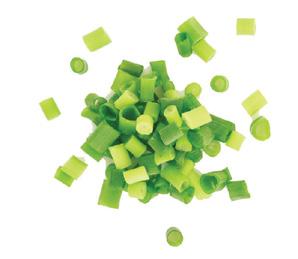
¼ teaspoon onion powder

Salt to taste
Garlic powder (optional)
High-speed blender with agitator stick
You are going to absolutely love this cream cheese. It should stay fresh for up to six days in the fridge. Add it to bagels, toast, or stuffed inside bell peppers or jalapeno peppers from your garden. It’s going to be a big hit!
Leave the block of cream cheese at room temperature for about 1 hour prior to making this. You want it soft enough to mix all the ingredients by hand.
In a bowl, combine the above ingredients with the softened cream cheese and mix by hand until well combined. Adjust seasonings according to your liking. Add the mixture to the blender and use the agitator stick to make it creamy. Don’t overmix.
Classic Bagel Toppings Include:
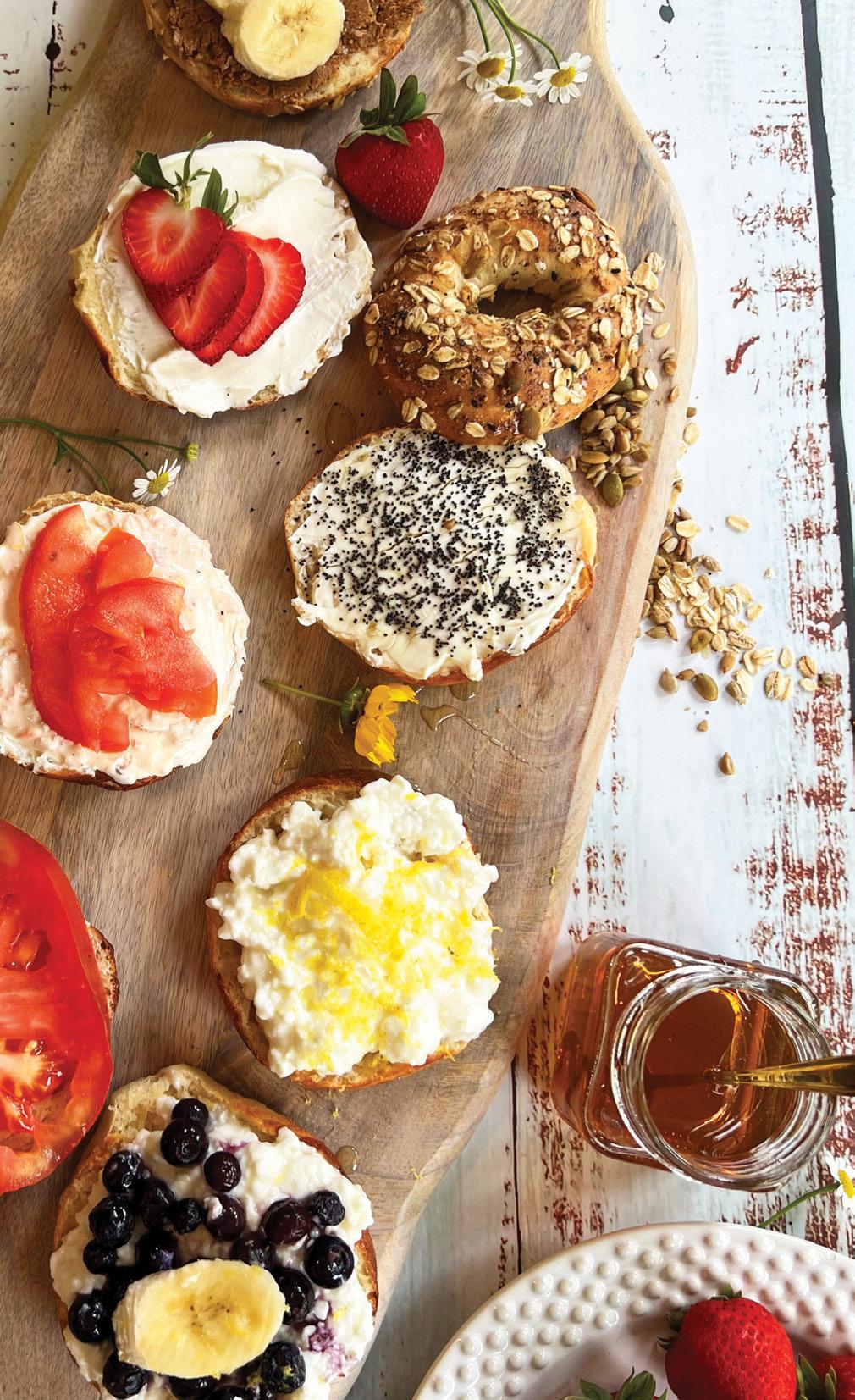
• Cream cheese topped with smoked salmon (lox), known as the classic “schmear” (Yiddish for spread)
• Butter
• Vegetable, scallion, or walnut raisin cream cheese
• Lox cream cheese is a must-try: Mix chopped smoked salmon, fresh chopped herbs like dill, lemon juice, and finely chopped scallions with plain cream cheese (great for tea sandwiches too.)
Other Bagel Toppings:
• Cream cheese, avocado, and fried egg
• Cream cheese, smoked salmon, and capers
• Peanut butter and jelly (or almond butter or sun nut butter)
• Tuna fish or whitefish
• Cranberry jalapeno cream cheese
• Pumpkin cream cheese
• A Jersey classic: Pork roll, egg, and cheese
• Cream cheese with cucumbers and pickled onions
There is a myriad of possibilities with bagel toppings. You can adapt them to your liking and get creative.
Fun Fact:
Cream cheese was invented in the 1930s, and in the 1950s Family Circle Magazine first suggested serving a bagel with cream cheese and lox as an appetizer at cocktail parties.
photo courtesy of mary abitanto
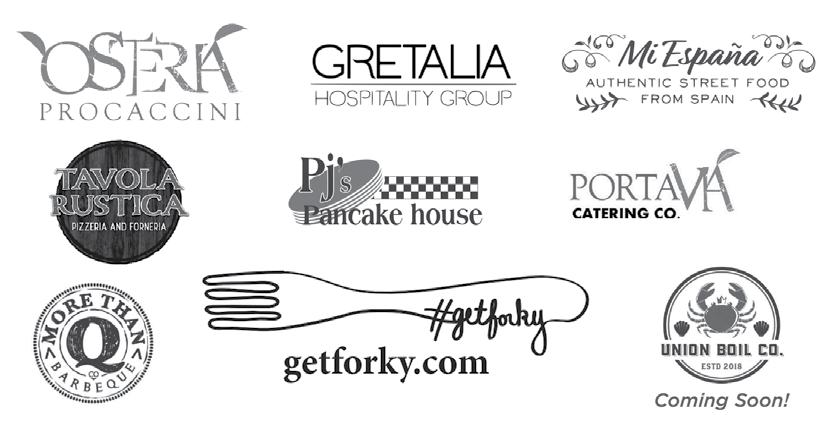


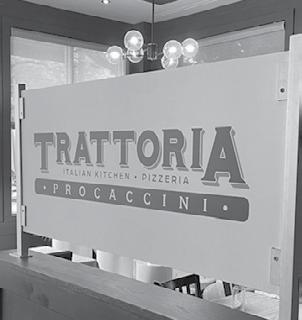
•PROCACCINI• 354 Nassau Street, Princeton (609) 683-9700 We Accept Reservations • Outdoor Dining Available
I cannot say enough positive words about Brandywine Serenade Living. It has changed/saved our family’s life. Like everyone in our shoes, we worried like crazy about putting our dear parents into an assisted living facility. It took my sister and I over a year to convince our parents to leave their home and make the big move – and the only thing we regret now is not having done it sooner. Mom is thriving there and absolutely loves it!


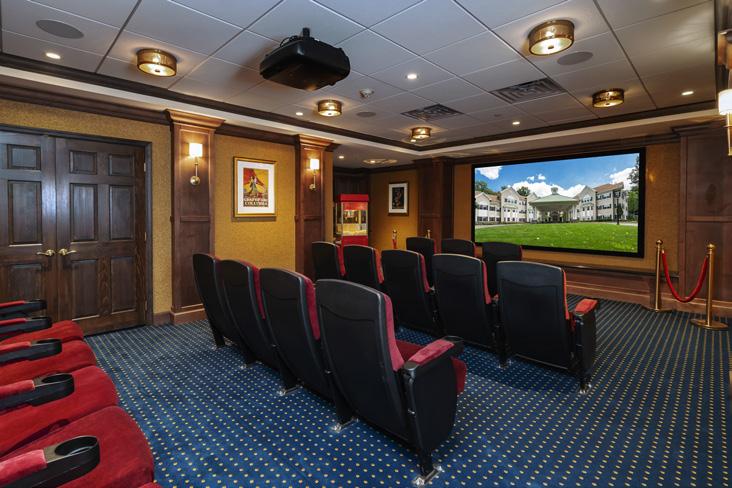
Needless to say, I no longer have a pit in my stomach from worry. I know Mom is in the best possible place.
Thank you, Brandywine Serenade!

Debbie R.

Brandywine Living has luxury communities with Assisted Living, Memory Care, and other supportive services throughout NJ, PA, DE, CT, NY & MD. For a full list of our communities or more information, visit www.Brandycare.com or call 1-877-4BRANDY Serenade at Princeton 775 Mt. Lucas Rd | Princeton, NJ 609.430.4000 Pennington 143 W. Franklin Ave | Pennington, NJ 609.730.9922 Princeton 155 Raymond Rd | Princeton, NJ 732.329.8888
Living in The Heart of Princeton!
a private appointment to see our fully renovated, luxury senior living and to learn about our move-in ready furniture packages,
call
at 609.430.4000. bit.ly/PLMAG_823
Luxury Senior
For
please
Hilary Murray
Scan for more info!
35 Carnahan Place
Princeton, NJ $1,795,000




Walk to town location
5 Bedrooms
4 full Bathrooms
Flipbook for 35 Carnahan Place
115 N. Union Street
Lambertville, NJ $2,295,000




Cell/Text: 609-658-3771
E: Heidihartmannhomes@gmail.com



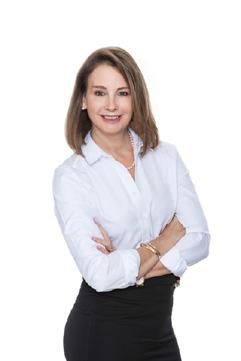
W:Heidihartmannhomes.com

Walk to town location
4/5 Bedrooms
5.5 Bathrooms
Flipbook for 115 N. Union Street

2020© C d B k R d B k g A R gh R d C d B k R d B k g y pp h p p h F H g A d th Eq Opp y A Op d by b d NRT LLC C d B k d th C d B k g g d k d by C d B k R E LLC y p p y d h b k p d g d h g h b k W h ppy k h h d p P d h USA CBN 1115
PROUD TO PRESENT
Heidi A. Hartmann
Sales Associate
10 Nassau St Princeton NJ 08540 (609) 921 -1411 T W O N E W L I S T I N G S
#1 Agent Princeton Office*
*According to Gross Commission Income
FALL FESTIVALS
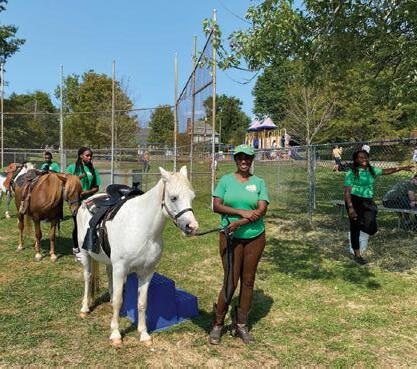
 BY DONALD H. SANBORN III
BY DONALD H. SANBORN III
“Autumn leaves don’t fall; they fly,” Delia Owens writes in Where the Crawdads Sing. “They take their time and wander on this, their only chance to soar.” Those who are fortunate enough to be in Princeton and the surrounding areas this autumn will want to take time to wander to the many fall festivals. Mark your calendar for these upcoming events:
NOW THROUGH OCTOBER 29
Harvest Weekends — Live Music & Food Trucks

William Heritage Winery
480 Mullica Hill Road, Mullica Hill
heritagewinenj.com/events/harvest-weekends

The William Heritage Winery offers successive weekends of live music through October 29. The events run from 12-8 p.m. on Saturdays and 12-5 p.m. on Sundays. “Take in the beautiful fall foliage!” the winery’s website invites visitors. “Enjoy wine by the glass, bottle, or wine flight in our outdoor seating area.” A variety of selections from visiting food trucks are available for purch ase.
SEPTEMBER 9
Southern Steel Band in the Biergarten
215 Uncle Pete’s Road, Trenton gasociety.org
The German-American Society of Trenton will host Southern Steel Band in the Biergarten, a charity event beginning at 6 p.m. The venue’s bar and kitchen will be open. Southern Steel Band describes itself as “Jersey’s own guitar army.” According to its website, this “southern rock tribute band” specializes in “re-creating the sound and excitement of the concert experience as performed by the original artists. They bring a high energy show performing spot on renditions of the music of The Allman Brother’s Band, Lynyrd Skynyrd, The Marshall Tucker Band — and many others.”
SEPTEMBER 9 & 10
Central Jersey Jazz Festival
Flemington, Somerville
centraljerseyjazzfestival.com
The Central Jersey Jazz Festival offers a weekend of live jazz, free and open to the public. The festival takes place at two different venues. The Saturday (September 9, 5-10 p.m.) event will be at the Historic Stangl Road in Flemington’s Artisans District; the Sunday (1-6 p.m.) event is at Somerset County Historic Courthouse Green at the corner of East Main and Grove streets in downtown Somerville. The musicians slated to appear in Flemington include the Steven Kroon Latin Jazz Sextet and vocalist Claudia Acuña; Somerville will have The David Gibson Quartet, Lafayette Harris Jr. and Friends, Michaela Marino Lerman, and NJPAC Jazz for Teens.

76 | PRINCETON MAGAZINE SEPTEMBER 2023
Central Jersey Jazz Festival
Fall Family Fun Weekends at Terhune Orchards
Hopewell Harvest Fair
shutterstock.com
photo courtesy of hopewell harvest fair
photo courtesy of terhune orchards
SEPTEMBER 16-OCTOBER 29
Fall Family Fun Weekends

Terhune Orchards
330 Cold Soil Road, Princeton terhuneorchards.com
Terhune Orchards continues its fall tradition of letting visitors pick their own apples and pumpkins. The many activities include pony rides, pedal tractors, duck races, a scavenger hunt, and pumpkin painting, as well as a discovery barn, sunflower trail, and hay bale and corn stalk mazes. Animal lovers should be sure to visit the barnyard farm animals. There will be live music from 12-4 p.m. Pam’s Food Pavilion will be filled with country fare, and tasting flights and glasses of wine are available in the Wine Orchard. Every Saturday and Sunday from 10 a.m. to 5 p.m. until October 29; no walk-ins, tickets must be purchased in advance on the website.
SEPTEMBER 23
Hopewell Harvest Fair
Hopewell Elementary School
35 Princeton Avenue, Hopewell hopewellharvestfair.org
The 35th annual Hopewell Harvest Fair, running from 10 a.m. to 4 p.m., will bring live music, contests, games, a Kids’ Korner, and “true community connection” to thousands of people from the Hopewell Valley and surrounding areas. The fair’s website emphasizes that the event’s sponsors make it possible for the Hopewell Harvest Fair Community Grant Program to distribute small grants to local nonprofit organizations. To date, they have donated more than $200,000 to dozens of local nonprofits. The rain date is September 24.

SEPTEMBER 23 & 24
Oktoberfest 2023
215 Uncle Pete’s Road, Trenton gasociety.org
The German-American Society of Trenton will host Oktoberfest, a family friendly weekend of “great music, good food, and the best beer.” The Saturday (12-9 p.m.) event will feature the Philly German Brass Band, The Aqua String Band, and The Ruckus. Sunday (12-6 p.m.) will host Don Bitterlich, GTV Almrausch, and Mountain Xpress. Both days will offer Masskrugstemmen, a traditional Bavarian contest that entails holding a (one liter) beer stein. There will be a $10 entry fee for each day, with food and drinks sold separately.

SEPTEMBER 23 & 24
New Hope Arts and Crafts Festival
Solebury High School
182 West Bridge Street, New Hope, Pa. visitnewhope.com/new-hope-arts-crafts
The 29th annual New Hope Arts and Crafts Festival will exhibit over 160 works in media such as oil paintings, sculpture, jewelry, ceramics, furniture, wearable art, glass art, photography, and more. The event, which takes place on Saturday from 10 a.m. to 5 p.m. and Sunday from 10 a.m. to 4 p.m., will include entertainment, food, children’s art activities, and more. Admission is $5.


SEPTEMBER 2023 PRINCETON MAGAZINE | 77
New Hope Arts and Crafts Festival
Oktoberfest 2023
Southern Steel Band
William Heritage Winery
photo courtesy of southern steel band
shutterstock.com
shutterstock.com
shutterstock.com
SEPTEMBER 23
Edison’s Fall Family Spectacular
Clara Barton Section (along Amboy Avenue), Edison jcpromotions.info
Hosted by the Township of Edison and the Edison Recreation Department, the Fall Family Spectacular will take place from 1-9 p.m. The event offers a variety of attractions including rides, games, face painting, sand art, and a remote-control car track. There will be food trucks and a wine and beer garden, as well as shopping. Live music will be on two stages. The local stage on the corner of Waltuma and Amboy avenues will have local performers and music. The main stage on 5th Street will have regional bands.
OCTOBER 7
Collingswood Book Festival

Haddon Avenue, Downtown Collingswood collingswoodbookfestival.com
The 21st annual Collingswood Book Festival will be held from 10 a.m. to 4 p.m. The festival’s website promises that readers will have the opportunity to connect with more than 60 presenting authors and an additional 275 authors and exhibitors, and enjoy music, food, and literary games and activities. Highlights this year include Philadelphia sports talk radio legends Mike Missanelli and Angelo Cataldi; Matthew Quick, best-selling author of The Silver Linings Playbook ; and award-winning children’s/YA author Jordan Sonnenblick. According to its organizers, in response to the assault on reading, the festival will also feature a pop-up banned book reading and informative tools on how to fight censorship. The award-winning festival is the longest-running, largest literary event in the Delaware Valley.
OCTOBER 7 & 8
Bordentown Cranberry Festival
Farnsworth Avenue, Bordentown City btowncranfest.com
Presented by the Downtown Bordentown Association, the Cranberry Festival — the “33rd Makers Fest on Farnsworth” — will be held from 11 a.m. to 5 p.m. on both days in the Central Jersey river town. The event will feature 100 artisans, makers, and crafters that will exhibit handmade, vintage, and up-cycled items and participate in the “largest juried show in the region,” as noted on the website. The festival will also include live music, a beer garden, and a food court. Service dogs only.




OCTOBER 21 & 22
Chatsworth Cranberry Festival

3980 Route 563, Chatsworth cranfest.info
It has been noted that the annual Chatsworth Cranberry Festival is a celebration of New Jersey’s cranberry harvest and offers a tribute to the Pine Barrens and local culture. Sponsored by the Festival Committee of Chatsworth, the event, held from 9 a.m. to 4 p.m. each day, features a juried craft show with up to 150 vendors, 15 food vendors, and live music.
Event dates and times subject to change. See websites for full details.
78 | PRINCETON MAGAZINE SEPTEMBER 2023
Collingswood Book Festival
Bordentown Cranberry Festival
Chatsworth Cranberry Festival
shutterstock.com
photo courtesy of c.j. mugavero of the downtown bordentown association and the artful deposit. shutterstock.com





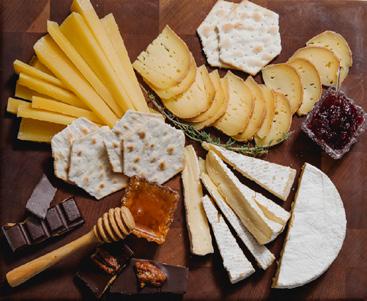
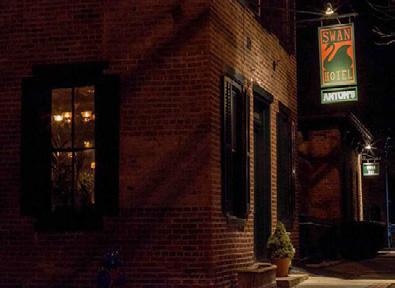
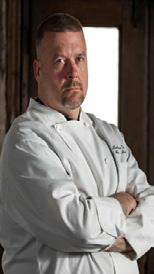
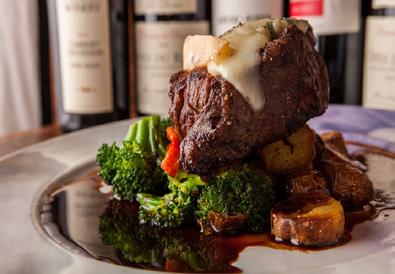




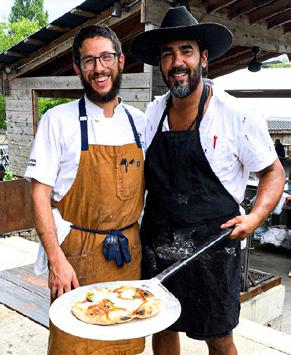




SEPTEMBER 2023 PRINCETON MAGAZINE | 79 908-812-7520 Golden Carrot Catering LLC 300 Carnegie Center, Suite 150 Princeton, NJ 08540 www.bygoldencarrot.com Golden Carrot 6th.indd 1 8/24/23 11:50 AM 3200 Lawrenceville Road (Rt. 206) Lawrenceville, NJ 08648 609-219-0053 CHERRY GROVE FARM Artisanal Cheeses, Pastured Meats, Honey from our Bees Shop at the Farm Store Visit the Calves Hay Rides / Foraging Walks Learn to Make Mozzarella or Ricotta cherrygrovefarm.com Cherry Grove 6th.indd 1 Anton’s At the swAn Locally Inspired Cuisine, Impeccable Service in a Sophisticated Romantic Setting 43 South Main St LaMbertviLLe, nJ 08530 (609) 397-1960 FALL in love with






Looking for a yard that complements your beautiful home? CUSTOM POOLS • HARDSCAPING OUTDOOR LIVING • LANDSCAPING COMMERCIAL SNOW REMOVAL CUSTOM POOLS • HARDSCAPING OUTDOOR LIVING • LANDSCAPING Looking for a yard that complements your beautiful home? Call Cedar Creek Landscapes of Pennington, NJ at 609-403-6270 today. www.cedarcreeklandscapes.com CUSTOM POOLS • HARDSCAPING OUTDOOR LIVING • LANDSCAPING COMMERCIAL SNOW REMOVAL Serving Central NJ and Bucks County, PA Looking for a yard that complements your beautiful home? Call Cedar Creek Landscapes of Pennington, NJ at 609-403-6270 today. www.cedarcreeklandscapes.com CUSTOM POOLS • HARDSCAPING OUTDOOR LIVING • LANDSCAPING COMMERCIAL SNOW REMOVAL HARDSCAPING • LANDSCAPING CUSTOM POOLS • OUTDOOR LIVING • MASONRY THANK YOU FOR VOTING FOR US — “BEST LANDSCAPE DESIGNER” Serving Central NJ and Bucks County, PA Looking for a yard that complements your beautiful home? Call Cedar Creek Landscapes of Pennington, NJ at 609-403-6270 today. www.cedarcreeklandscapes.com CUSTOM POOLS • HARDSCAPING OUTDOOR LIVING • LANDSCAPING COMMERCIAL SNOW REMOVAL Serving Central NJ and Bucks County, PA Looking for a yard that complements your beautiful home? Call Cedar Creek Landscapes of Pennington, NJ at 609-403-6270 today. www.cedarcreeklandscapes.com CUSTOM POOLS • HARDSCAPING OUTDOOR LIVING • LANDSCAPING COMMERCIAL SNOW REMOVAL HARDSCAPING • LANDSCAPING CUSTOM POOLS • OUTDOOR LIVING • MASONRY THANK YOU FOR VOTING FOR US — “BEST LANDSCAPE DESIGNER” Serving Central NJ and Bucks County, PA Looking for a yard that complements your beautiful home? Call Cedar Creek Landscapes of Pennington, NJ at 609-403-6270 today. www.cedarcreeklandscapes.com CUSTOM POOLS • HARDSCAPING OUTDOOR LIVING • LANDSCAPING COMMERCIAL SNOW REMOVAL Serving Central NJ and Bucks County, PA Looking for a yard that complements your beautiful home? Call Cedar Creek Landscapes of Pennington, NJ at 609-403-6270 today. www.cedarcreeklandscapes.com CUSTOM POOLS • HARDSCAPING OUTDOOR LIVING • LANDSCAPING COMMERCIAL SNOW REMOVAL HARDSCAPING • LANDSCAPING CUSTOM POOLS • OUTDOOR LIVING • MASONRY THANK YOU FOR VOTING FOR US — “BEST LANDSCAPE DESIGNER”


www.blackbearbuilders.com PENNINGTON, NJ 609•730•0700
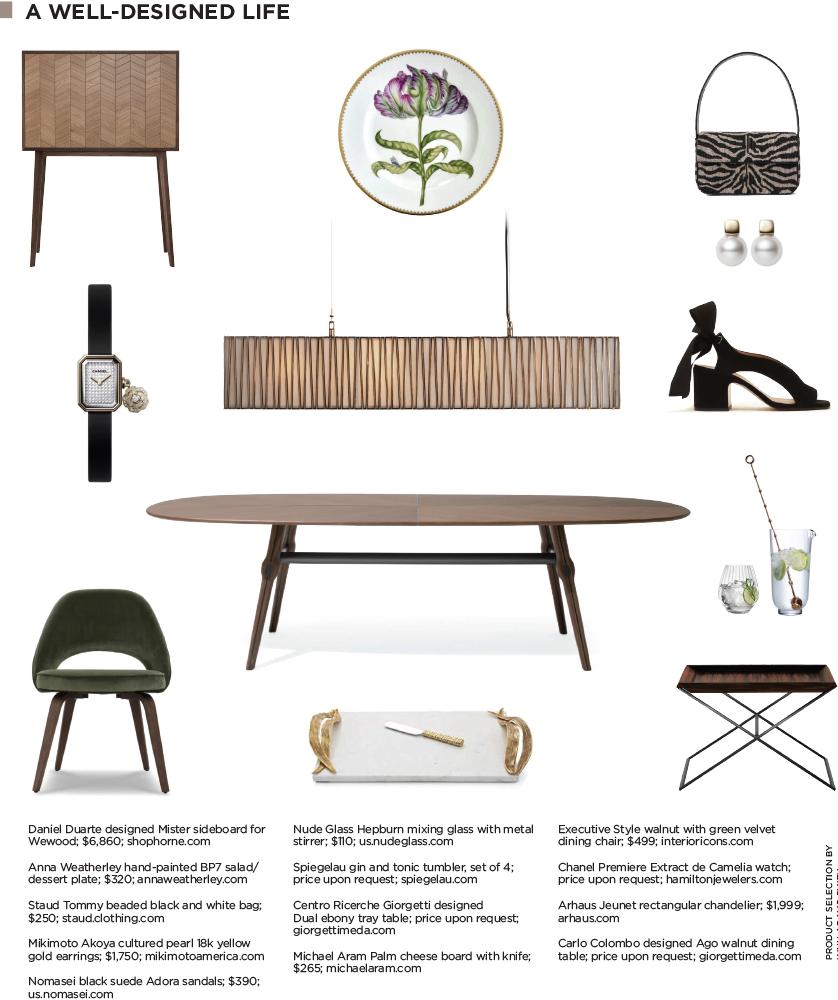
DE KOONING HOUSE*
As you meander down your quarter mile long driveway and cross your own private bridge, you will get a glimpse, through a stand of native cedar trees, of de Kooning House This magnificent modern house looks as if it belongs on the East End of Long Island, but it is just as natural sited among the woodlands of Bucks County. This 5,000 sq. ft beauty captures all of the excitement and architectural significance of a true 1980’s Hampton’s gem de Kooning House is a rare find, on many levels. In a world of center hall colonials, the concept of excitement and the thrill of a “Wow” factor have become lost. Like all homes from a bygone era, the interior will need updating to meet the creative desires of future stewards de Kooning House is not for everyone; it is a home for someone who is redefining their lifestyle and wants to exist within a living work of art and not one of the many “little boxes" Visit In the style of*



TINICUM HOLLOW

$2,200,000
Tinicum Hollow' a true Bucks County farmstead is set among pastoral rolling hills and gentle green slopes. This magnificent piece of history offers stunning views, a pond for fishing, authentic Bucks County farmhouse and an original Pennsylvania Sweitzer style barn There is an additional large steel pole barn that can house large equipment, live stock or developed into an expansive creative space. The open meadows and topography would work great for an equestrian facility This timeless bucolic setting is the ultimate backdrop for a sophisticated country retreat, working farm or building your dream home. 90 minutes to Manhattan, 1 hour to Princeton and just 30 minutes to New Hope. Bring your vision to build the home of your dreams. Home shown is an example of the builder's architectural designs and is solely for illustrative purposes. Visit Evan Walton 215.327.4709 or Art Mazzei 610.428.4885.

$1,550,000

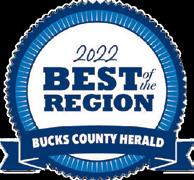
A D D I S O N W O L F E . C O M
us at 215.862.5500 550 Union Square, New Hope, PA 18938 TINICUMHOLLOW.COM.
For additional information or a private tour, contact
DEKOONINGHOUSE.COM.
Dolce & Gabbana Peonia leopard print chair; price upon request; luxurylivinggroup.com

R&Y Augousti Klimt handmade shagreen, shell, and brass tray; price upon request; augousti.com
Fferrone Design May medium glass, set of 2; $250; 2modern.com

Richmond Interiors Ironville ribbed relief brass cabinet; price upon request; richmondinteriors.nl

John James Audubon Fork-tailed Flycatcher iPhone case; $24; fineartamerican.com

Girotti Elegant heels handcrafted in green suede; $229; girotti.com

Reike Nen Mini lizard print shoulder bag; $420; bergdorfgoodman.com
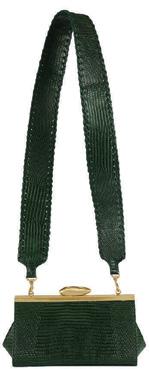
Carlo Colombo designed Aton sofa; price upon request; giorgettimeda.com

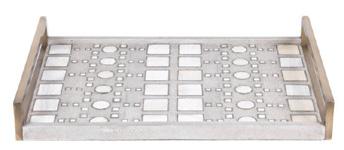
Julian Chichester designed Duckbilled side table; price upon request; us.julianchichester.com
Paloma Picasso designed Olive Leaf band ring in yellow gold; $1,125; tiffany.com

Mikimoto Classic Elegance Akoya cultured pearl hoop earrings in 18k yellow gold; $1,700; mikimotoamerica.com

Elsa Foulon designed Antigone pendant lamp; $7,989; 1stdibs.com


84 | PRINCETON MAGAZINE SEPTEMBER 2023 A WELL-DESIGNED LIFE PRODUCT SELECTION BY LYNN ADAMS SMITH


Bill Dear - Designer/Horticulturalist www.deargarden.com PA 215.766.8110 NJ 609.919.0050

Experience the redesigned Polestar 2. Up to 320 miles of range* 0-60mph in 4.1 sec** 100% electric Sustainable design meets superior performance. *Long Range Single Motor **Long Range Dual Motor with Performance Book a test drive today polestarprinceton.com Polestar Princeton




















































































 BY ANNE LEVIN
BY ANNE LEVIN



































 By Anne Levin
Photography by Jeffrey E. Tryon and Charles R. Plohn
By Anne Levin
Photography by Jeffrey E. Tryon and Charles R. Plohn













































































 BY DONALD GILPIN
BY DONALD GILPIN









 Interview by Laurie Pellichero
Interview by Laurie Pellichero







 Interview by Laurie Pellichero
Interview by Laurie Pellichero












 BY WENDY GREENBERG PHOTOS COURTESY OF CENTER FOR INTERIM PROGRAMS
BY WENDY GREENBERG PHOTOS COURTESY OF CENTER FOR INTERIM PROGRAMS




 CORNELIUS BULL
KATE WARREN
CORNELIUS BULL
KATE WARREN




 (photograph courtesy of holly bull)
(photograph courtesy of holly bull)
























 BY STUART MITCHNER
BY STUART MITCHNER

































































 BY TAYLOR SMITH
BY TAYLOR SMITH






















 BY MARY ABITANTO
BY MARY ABITANTO



































 BY DONALD H. SANBORN III
BY DONALD H. SANBORN III





























































